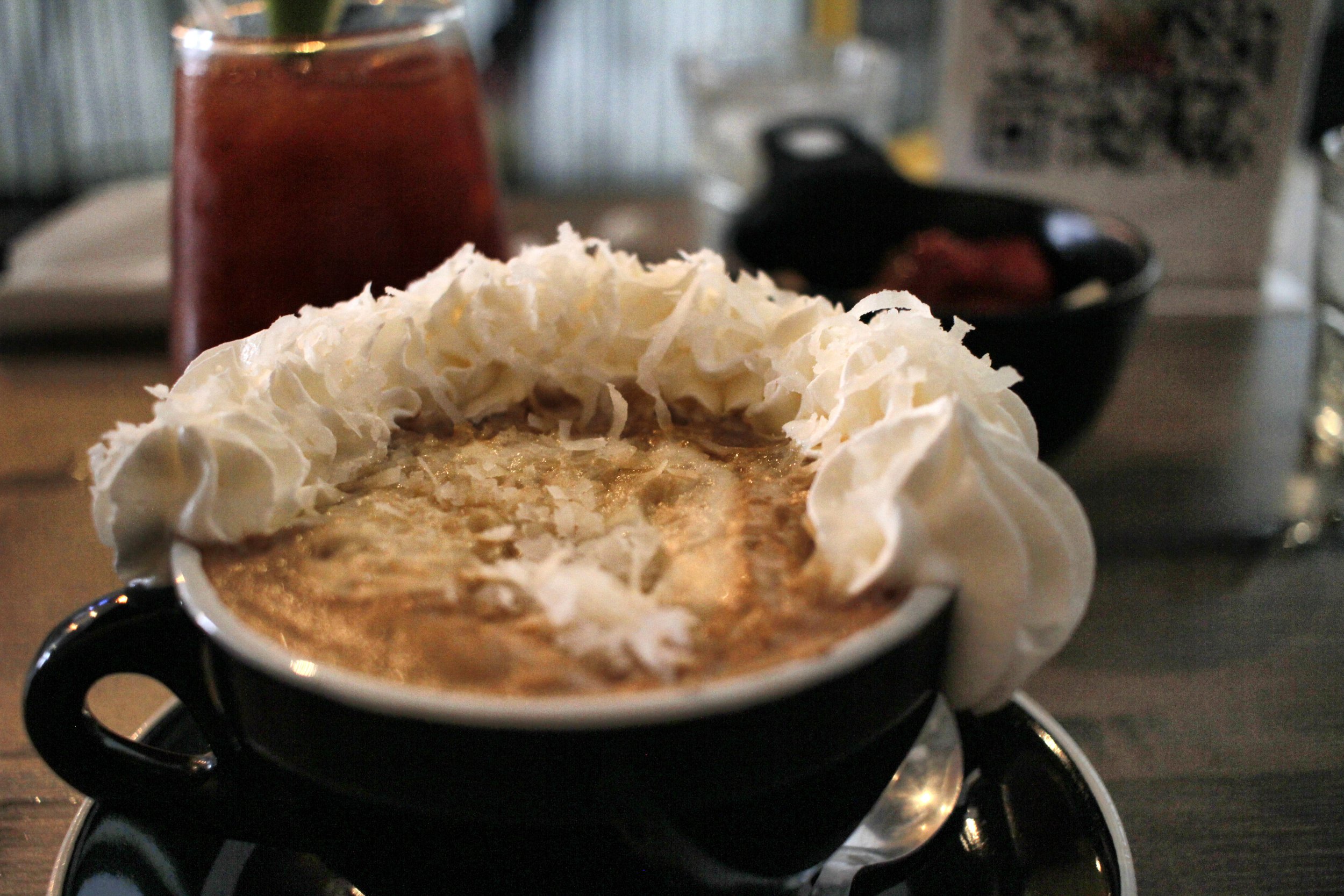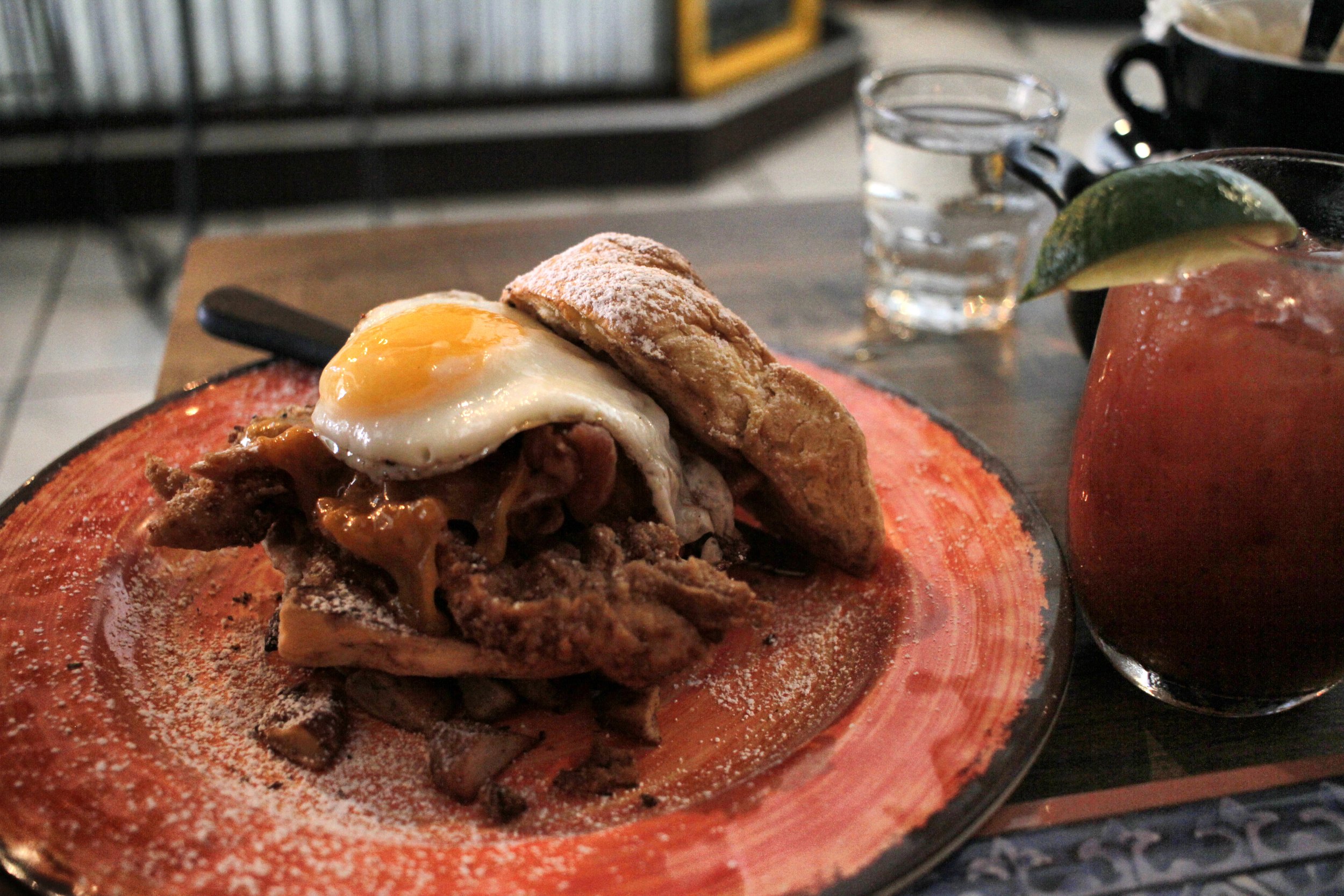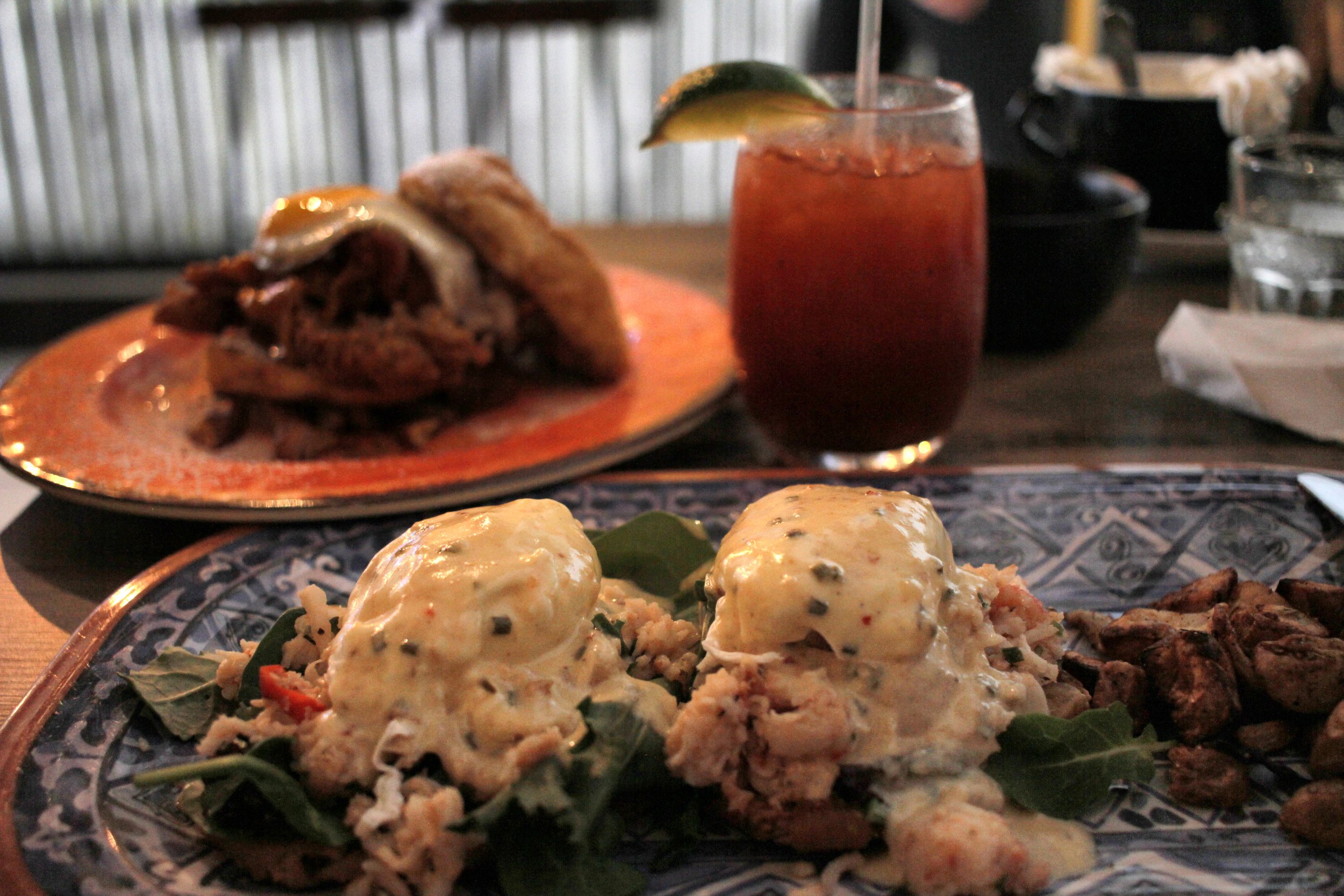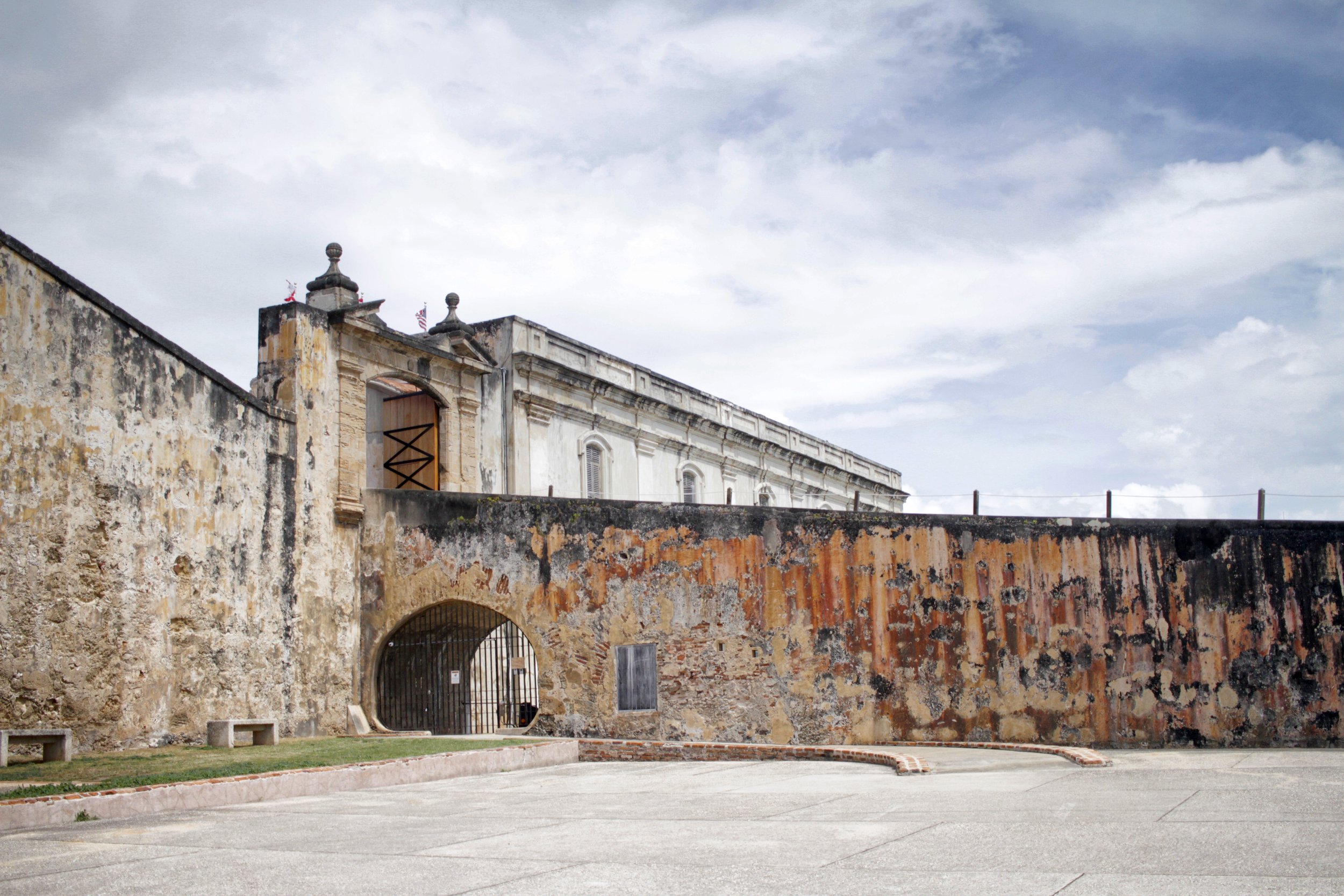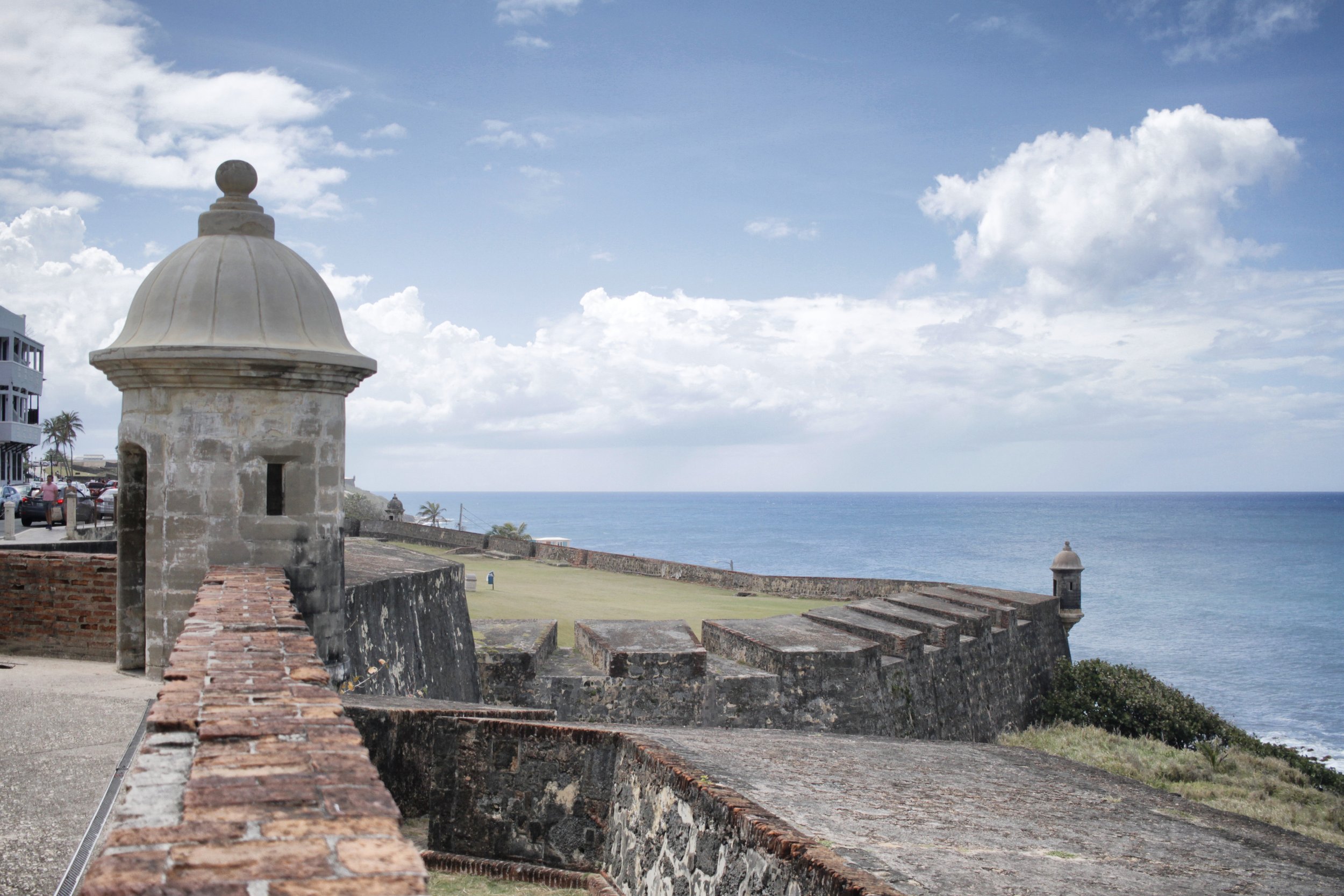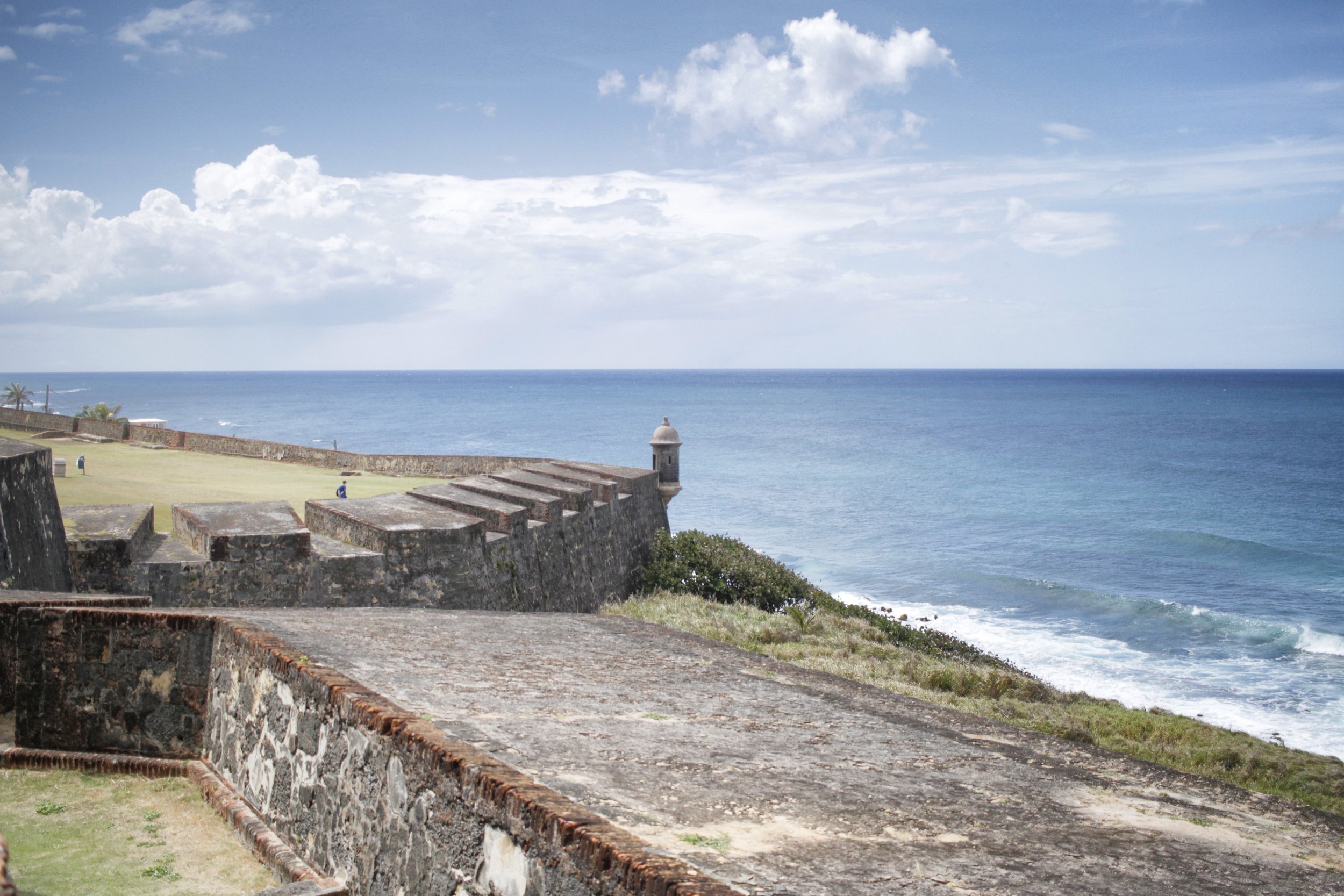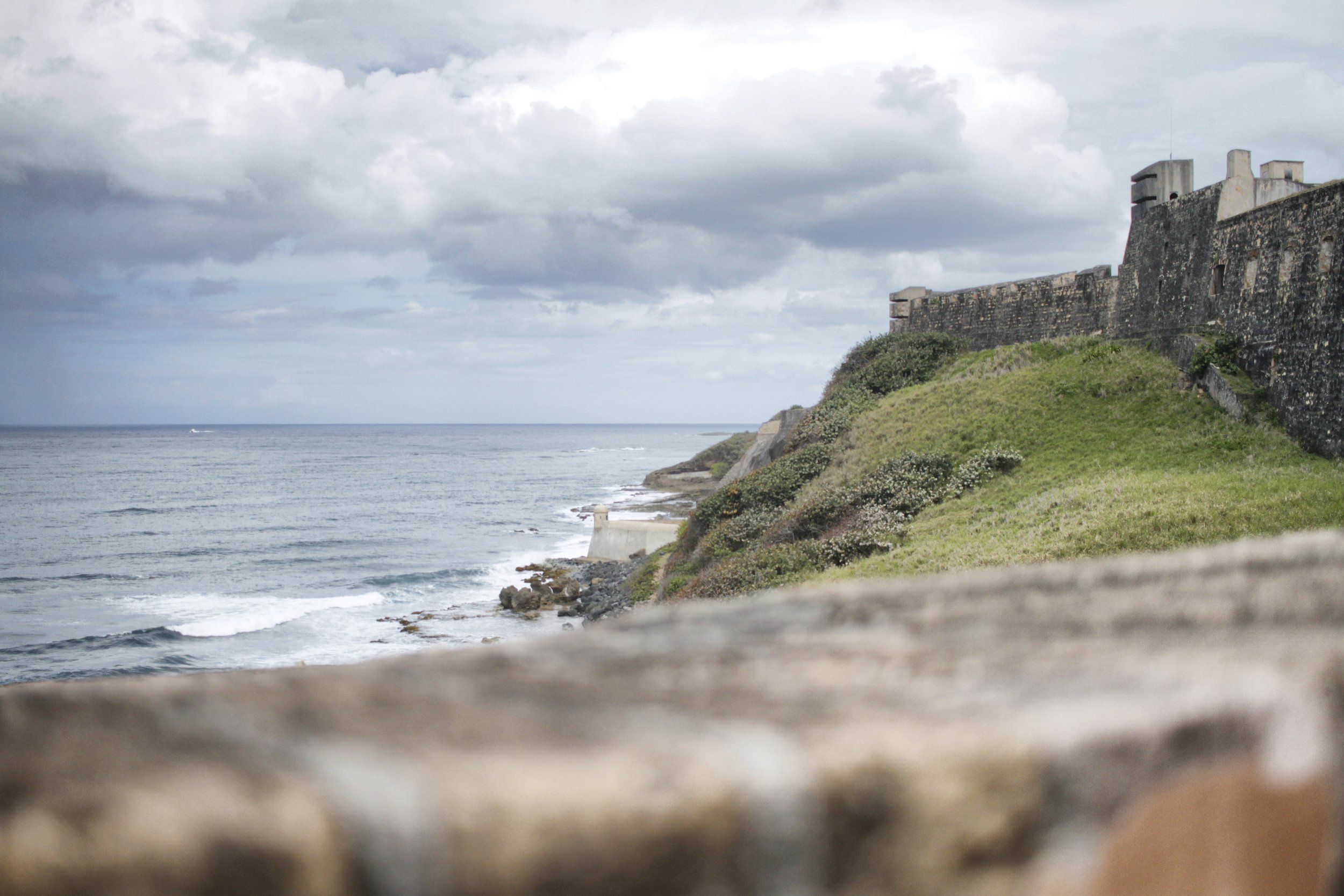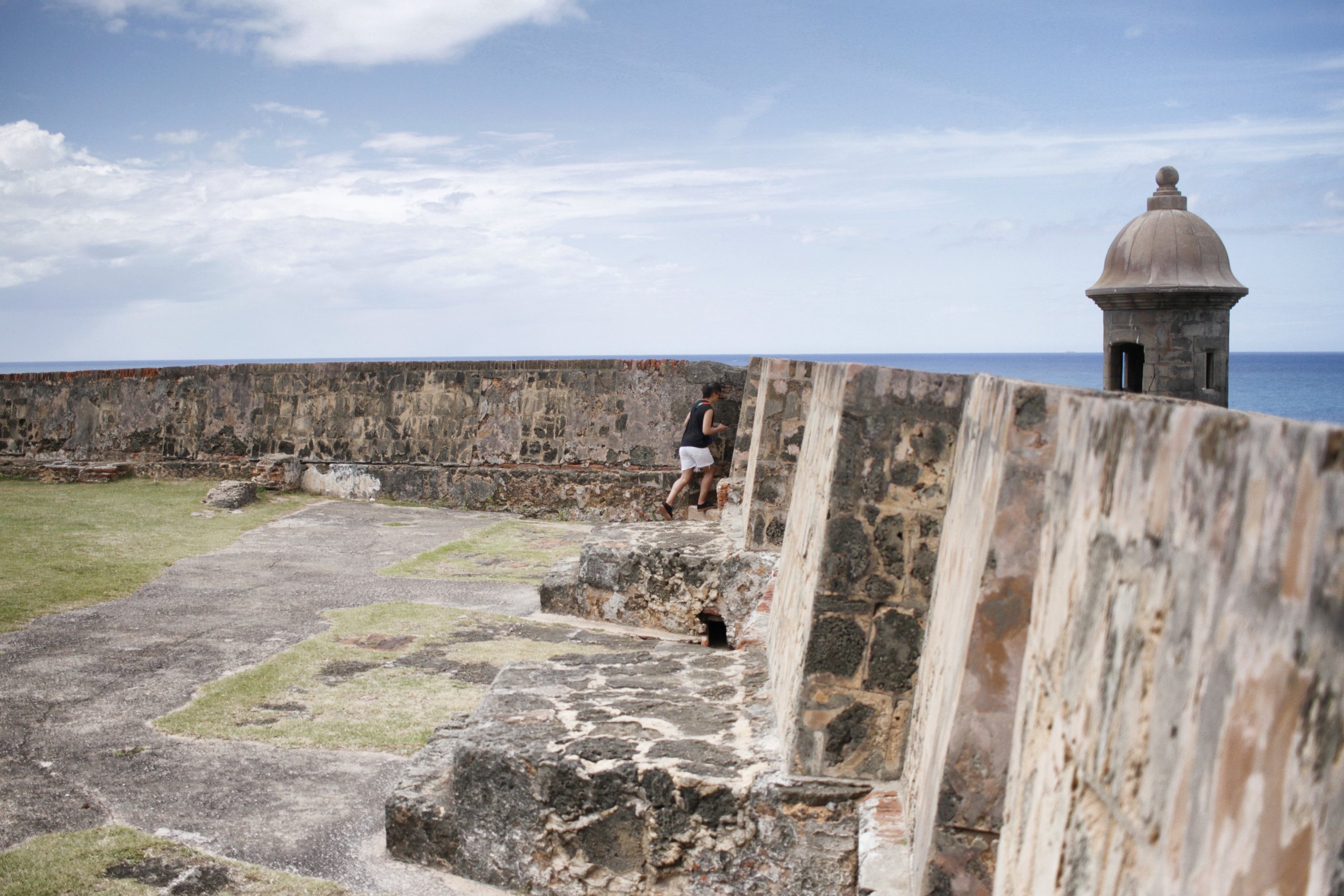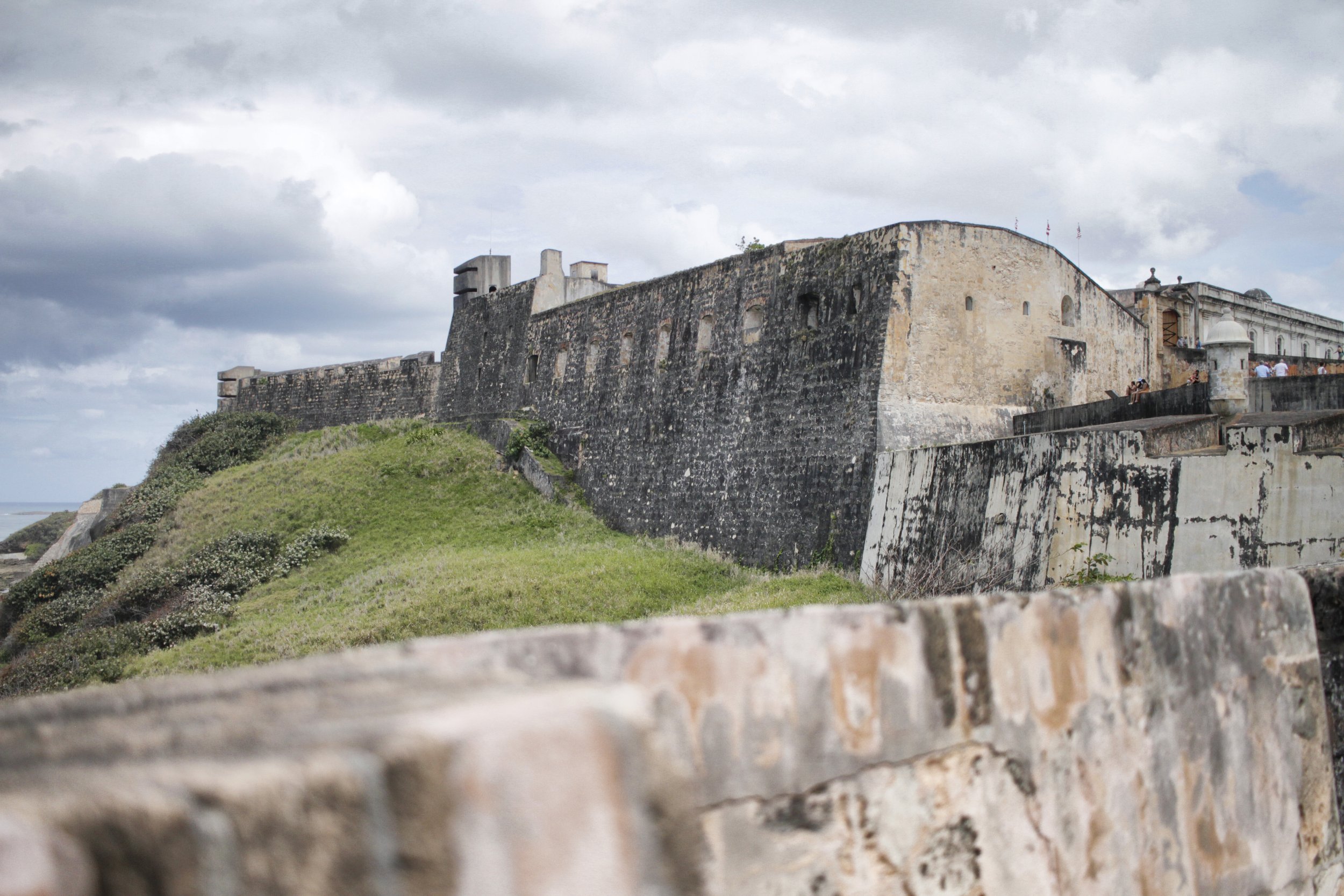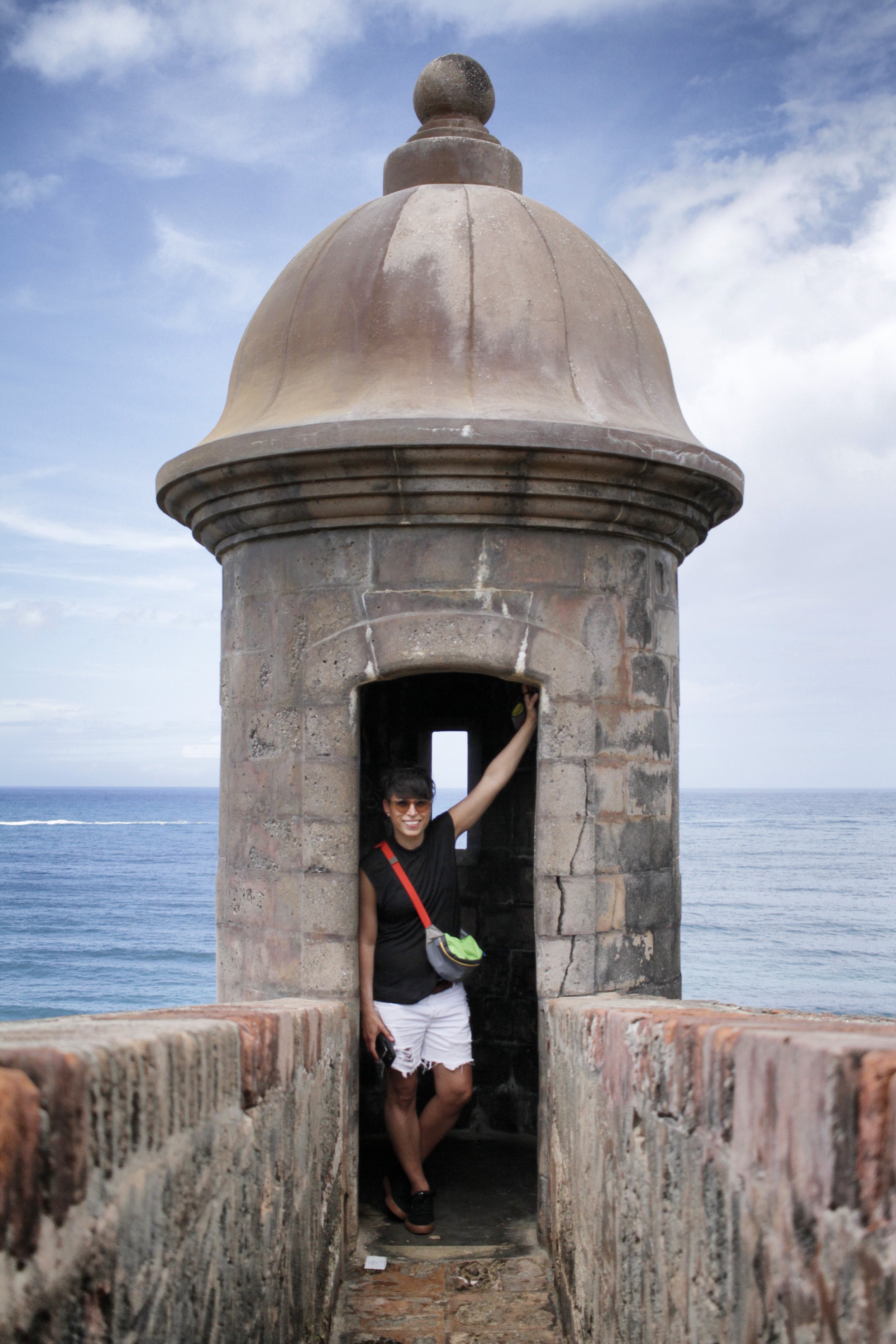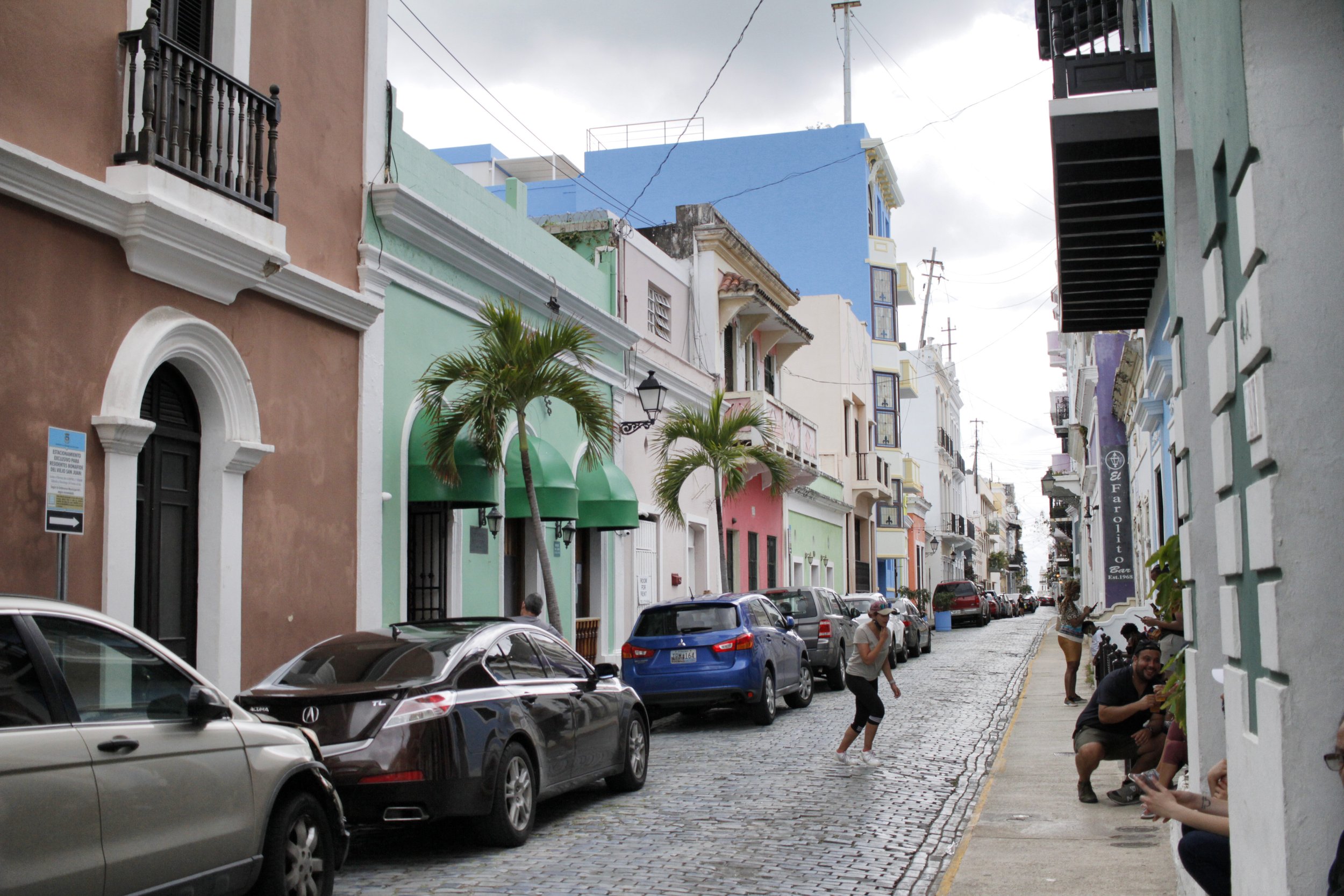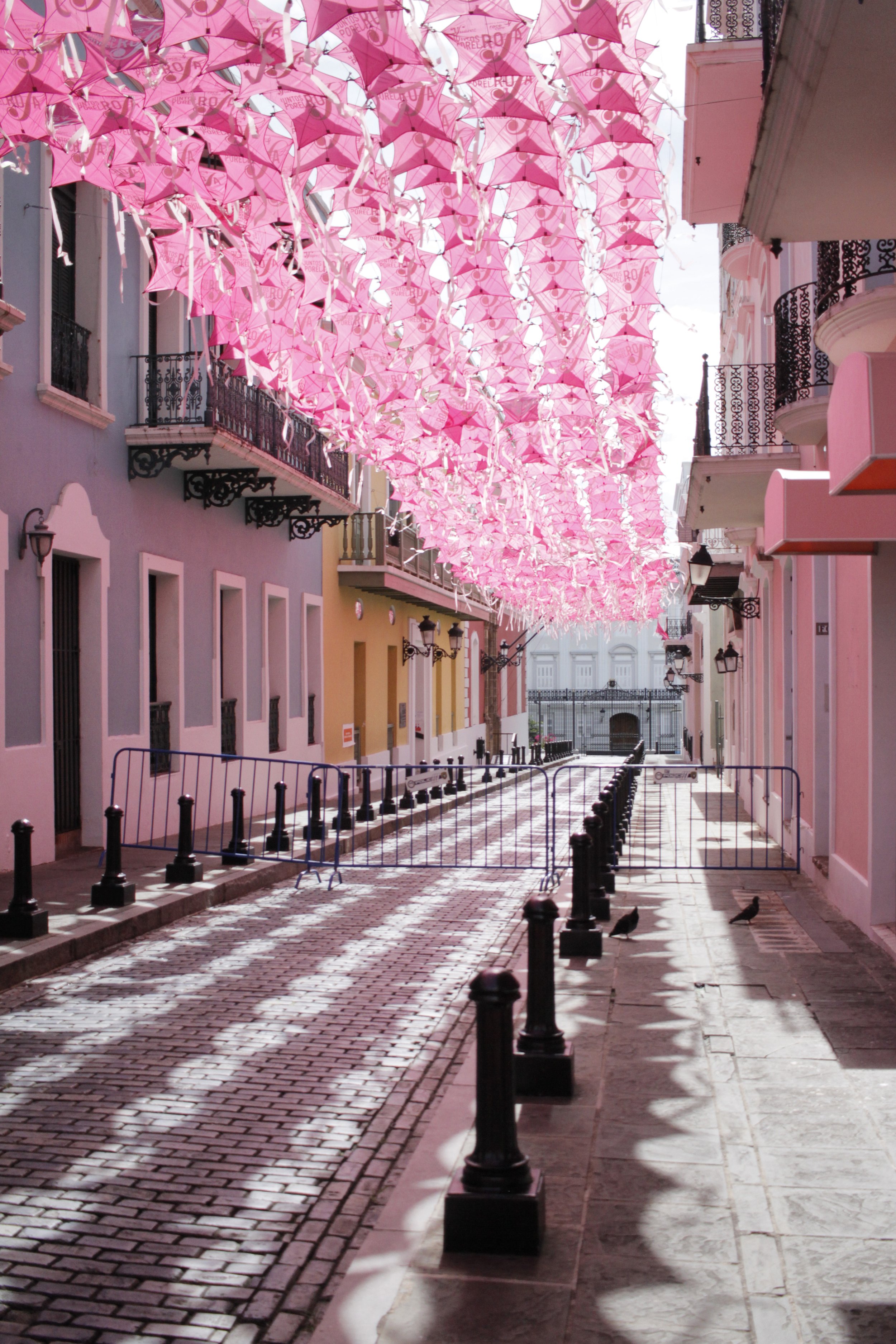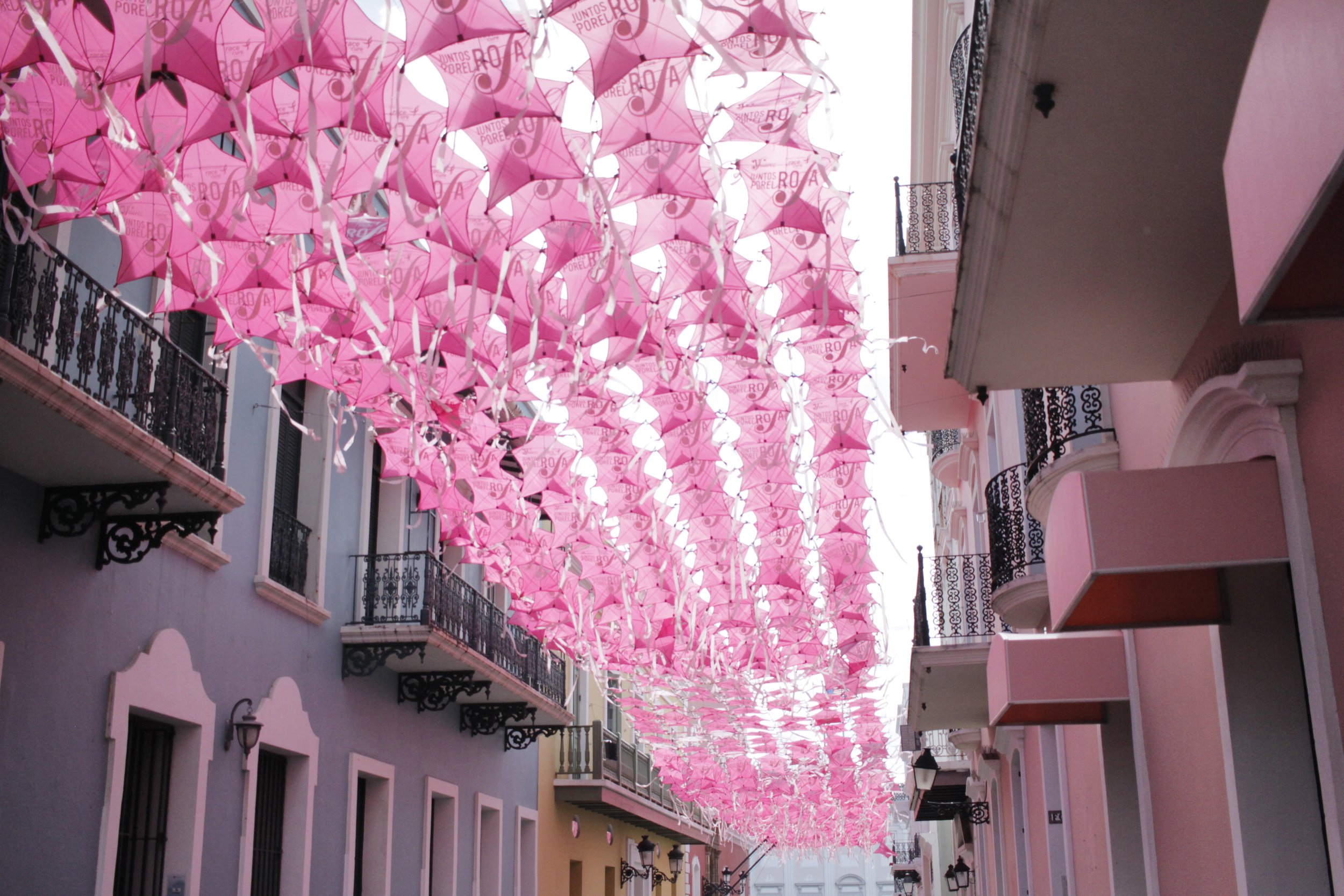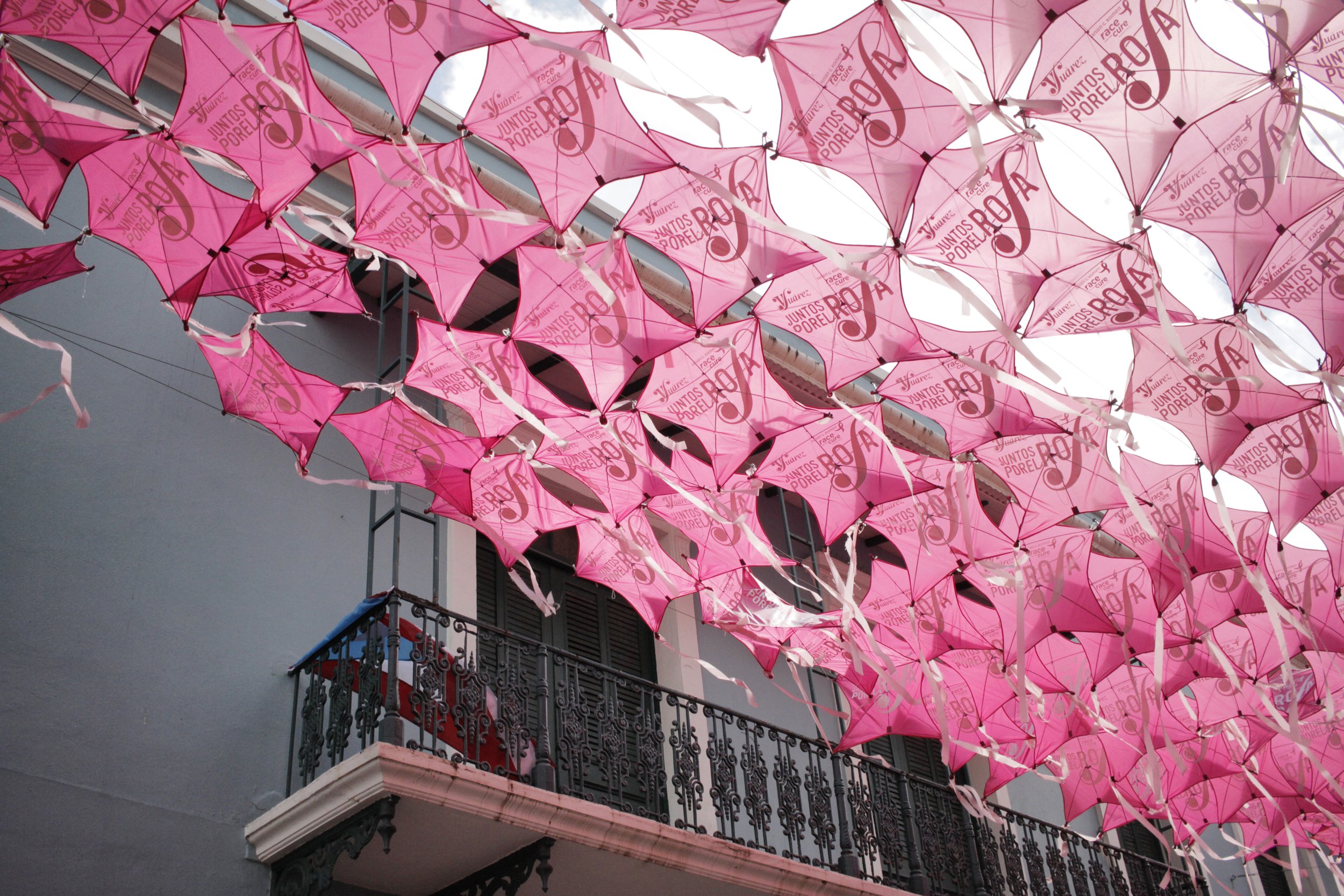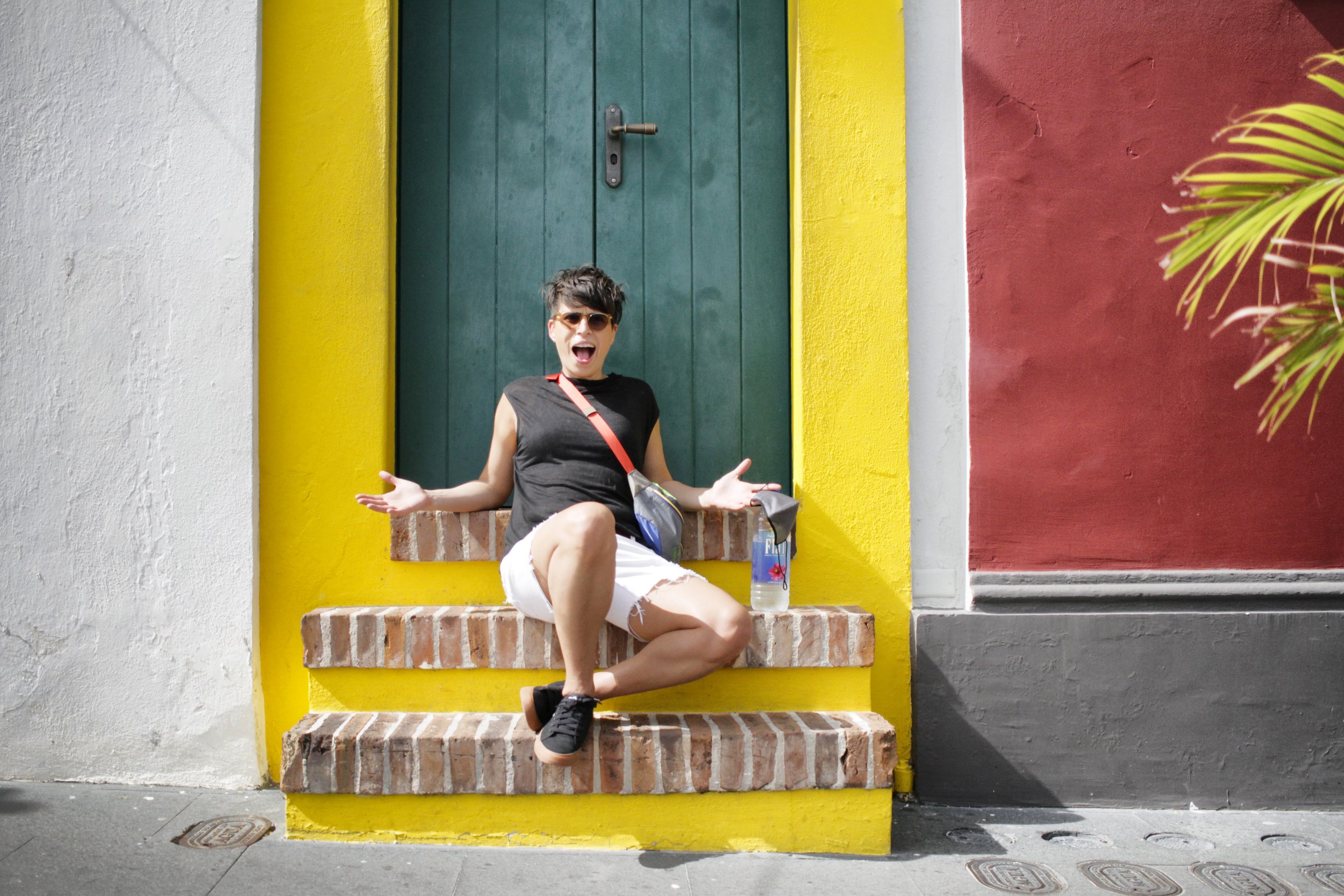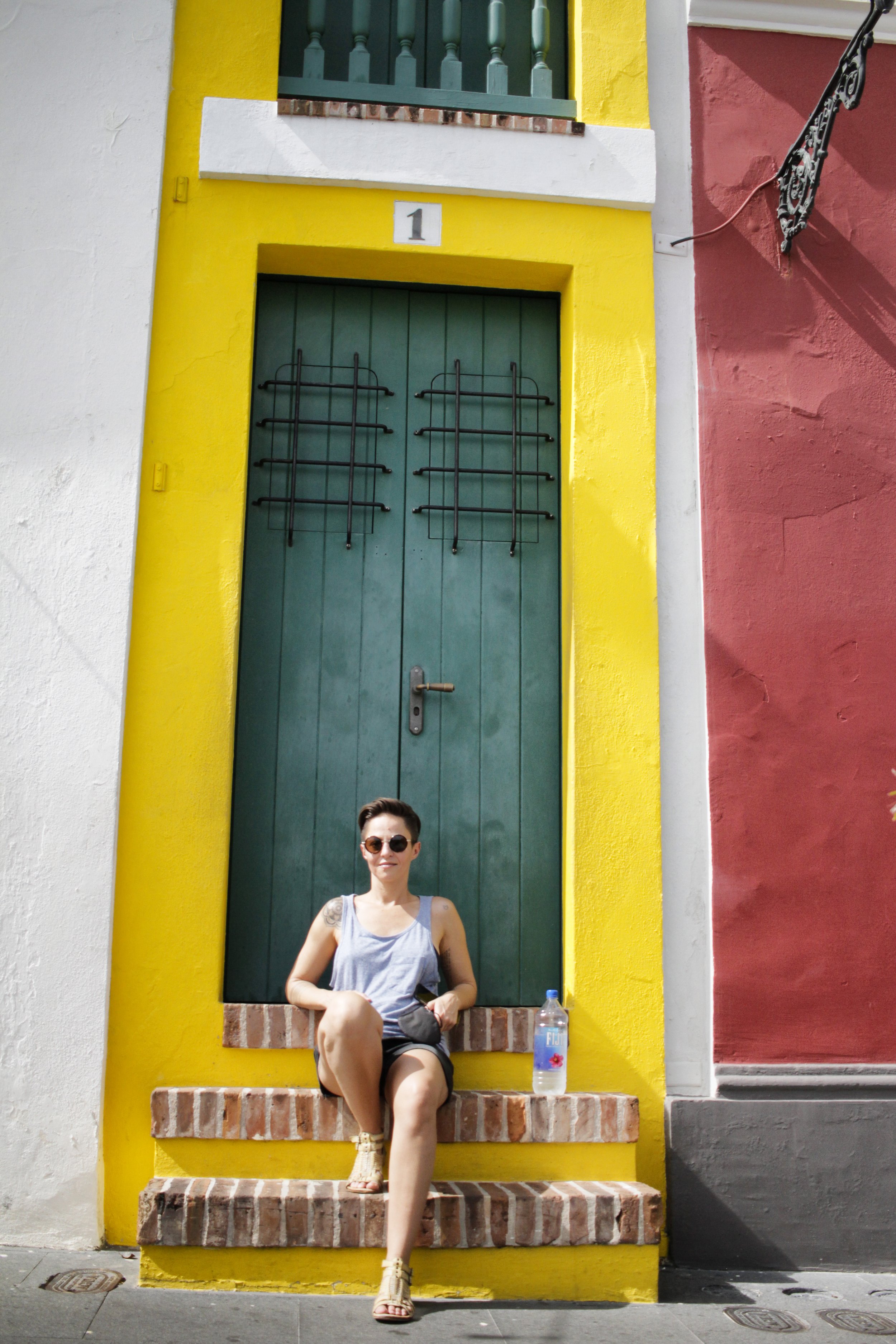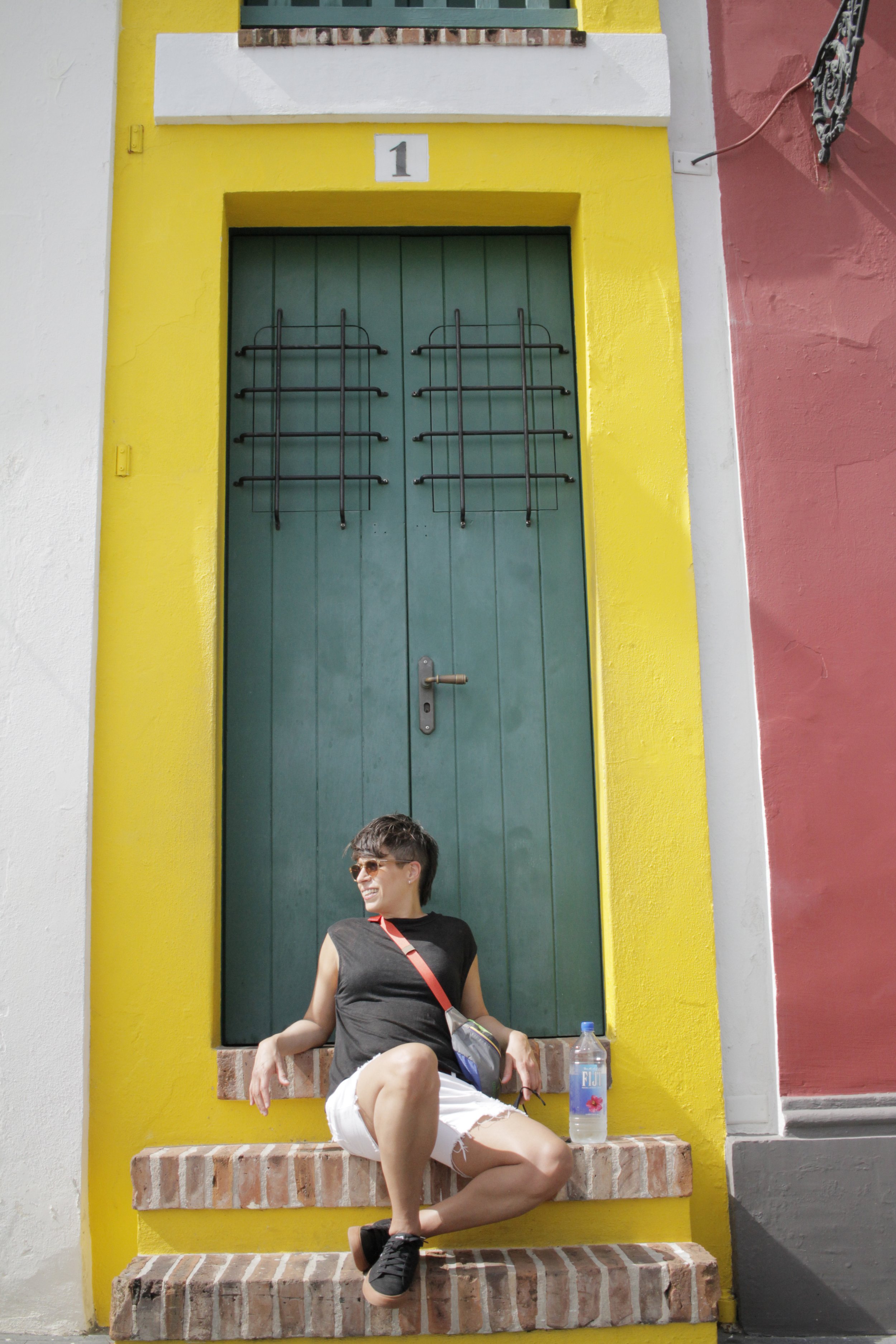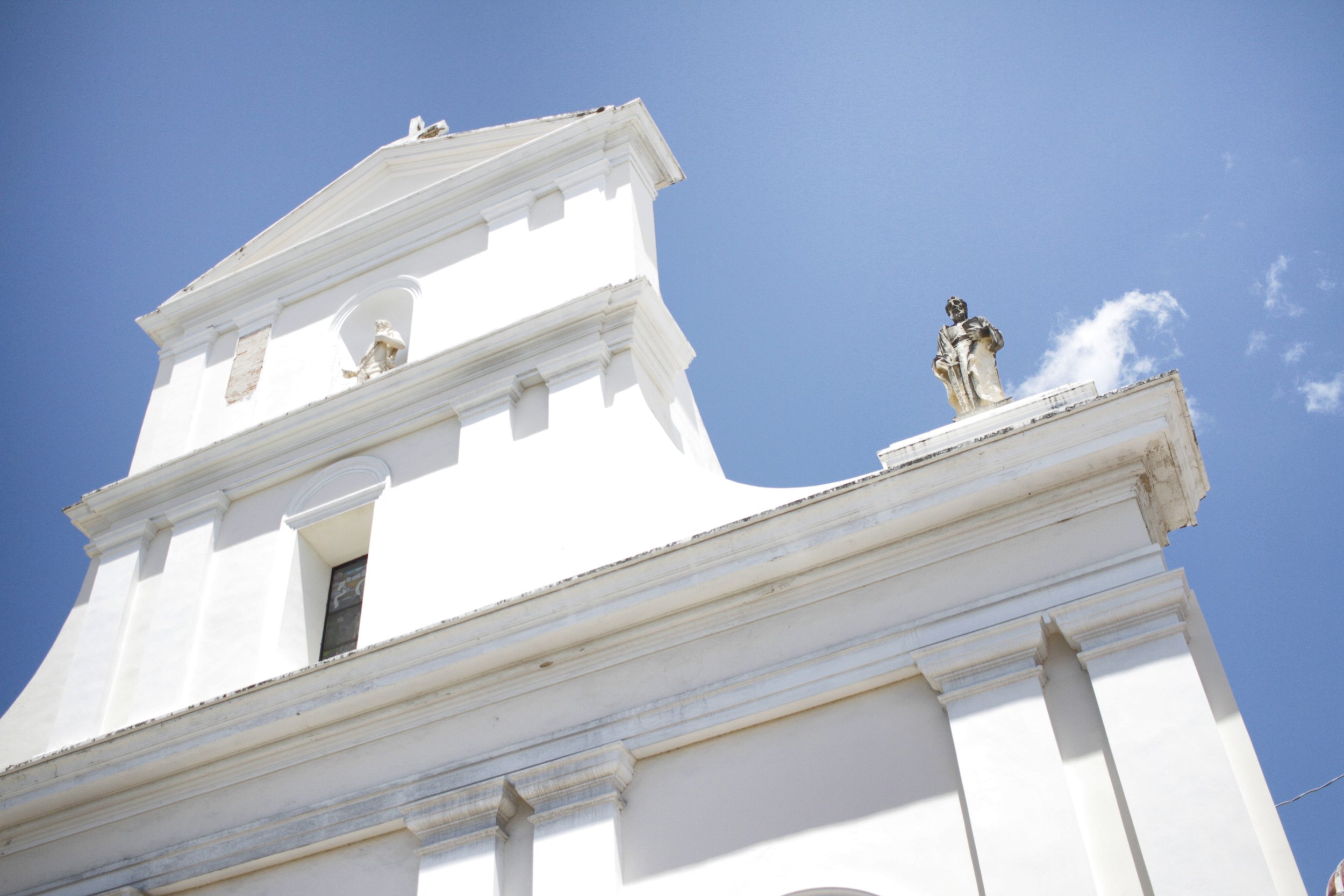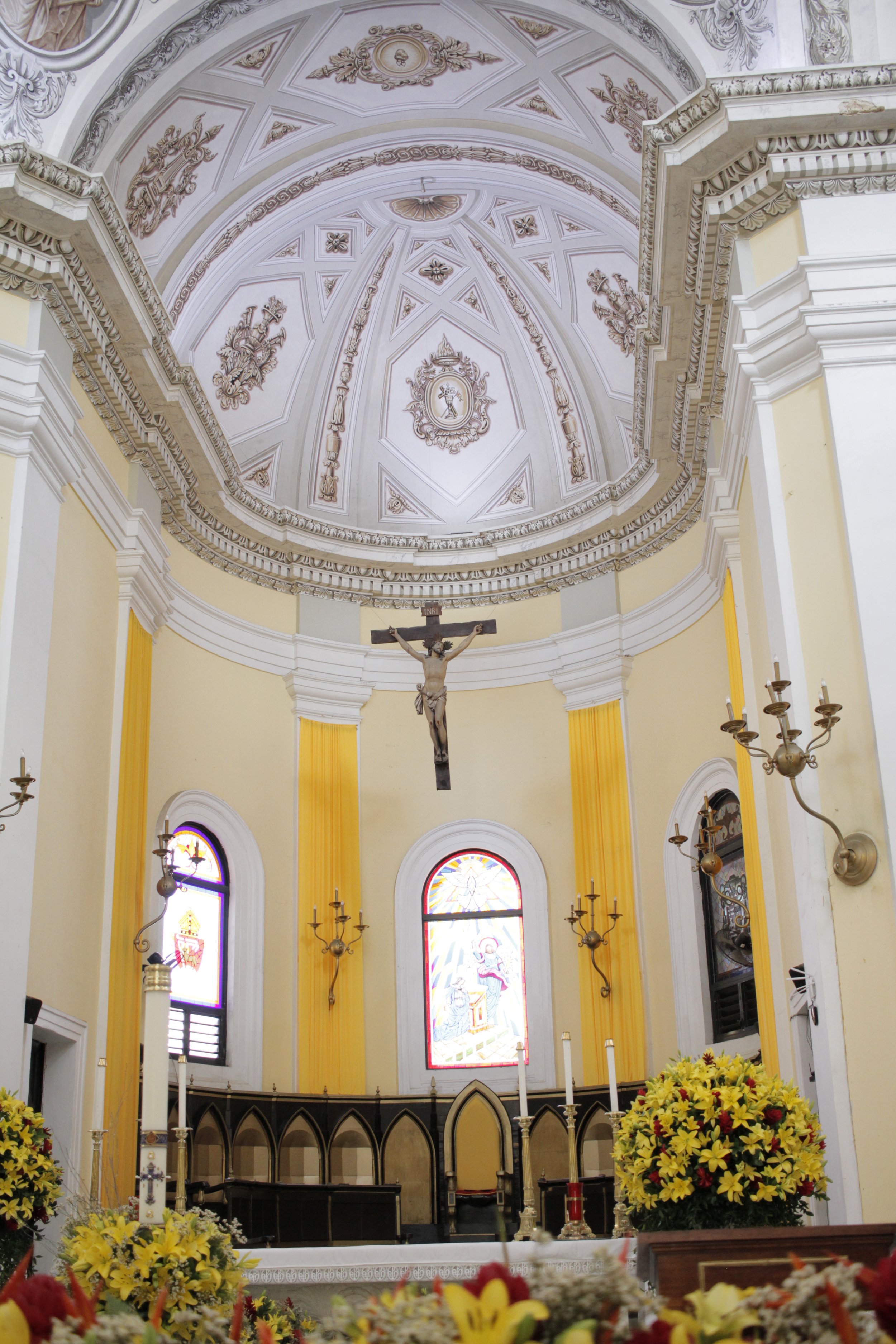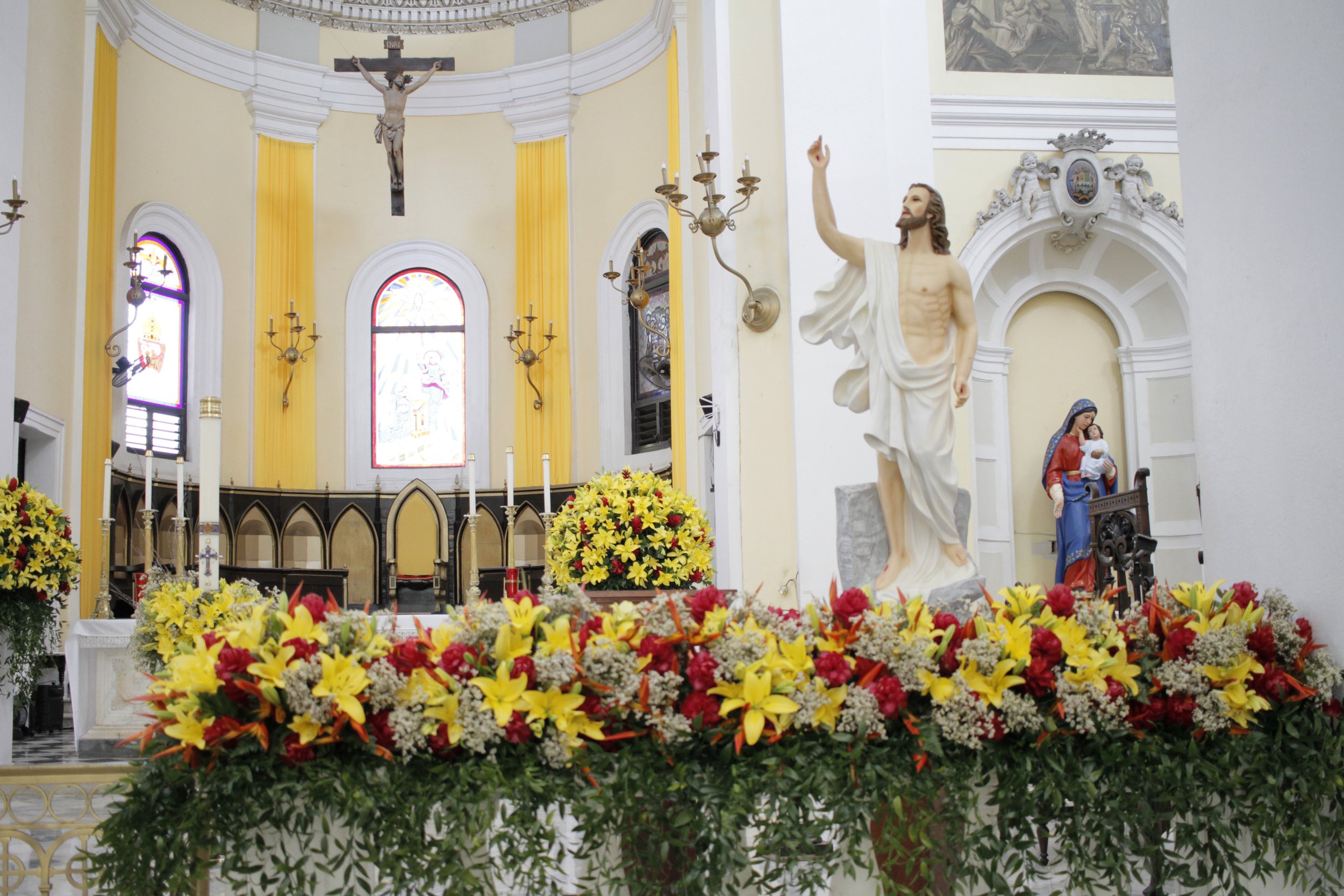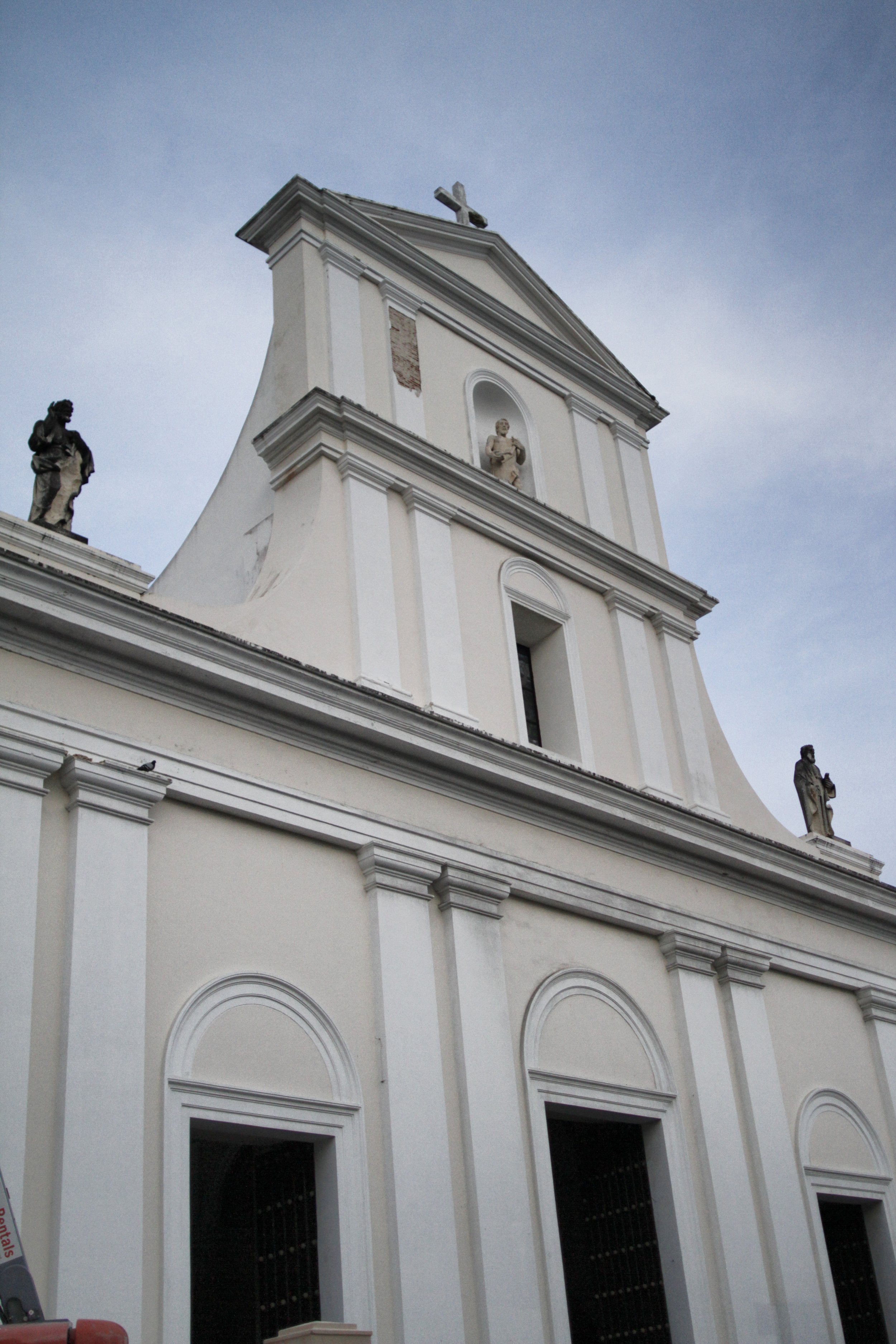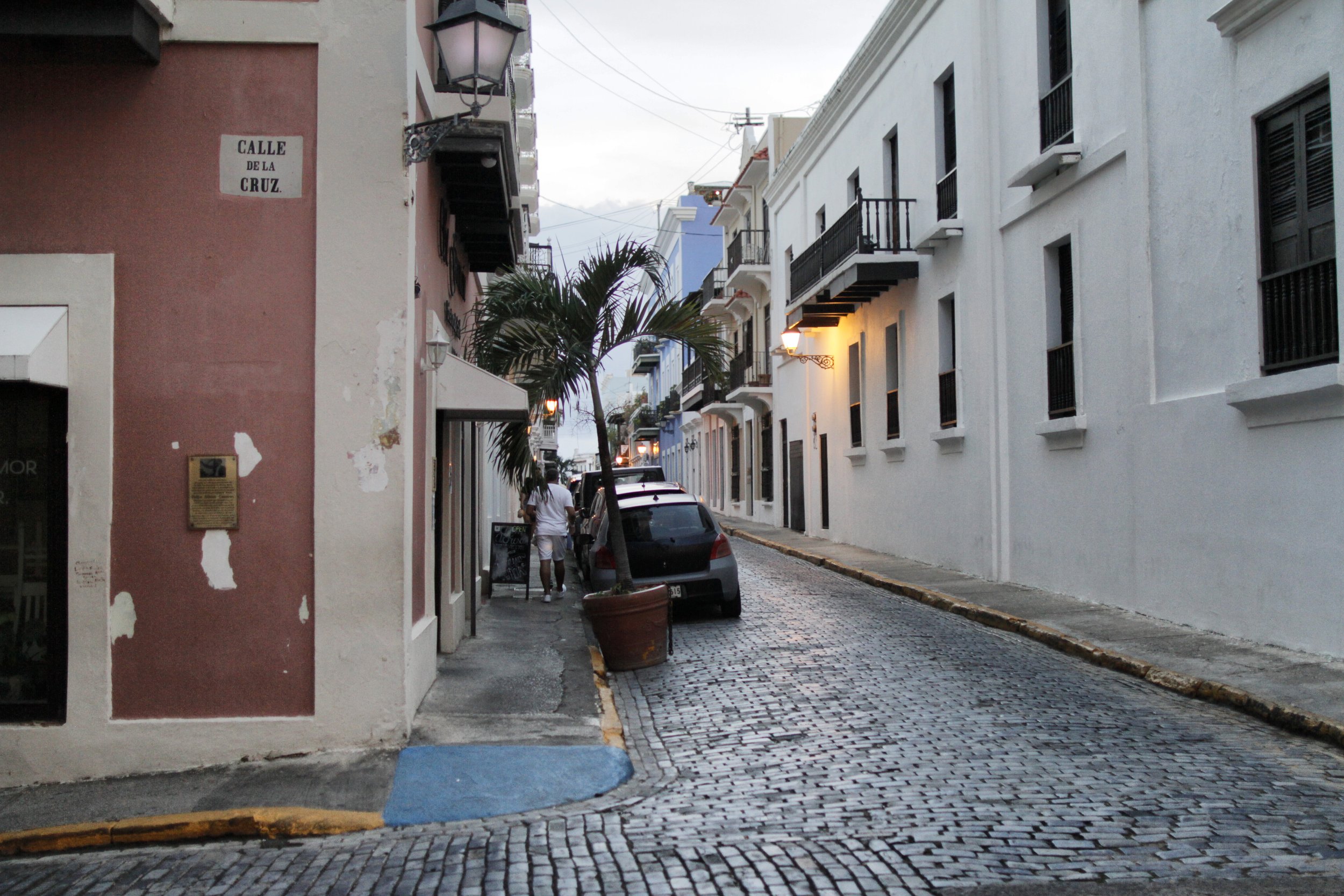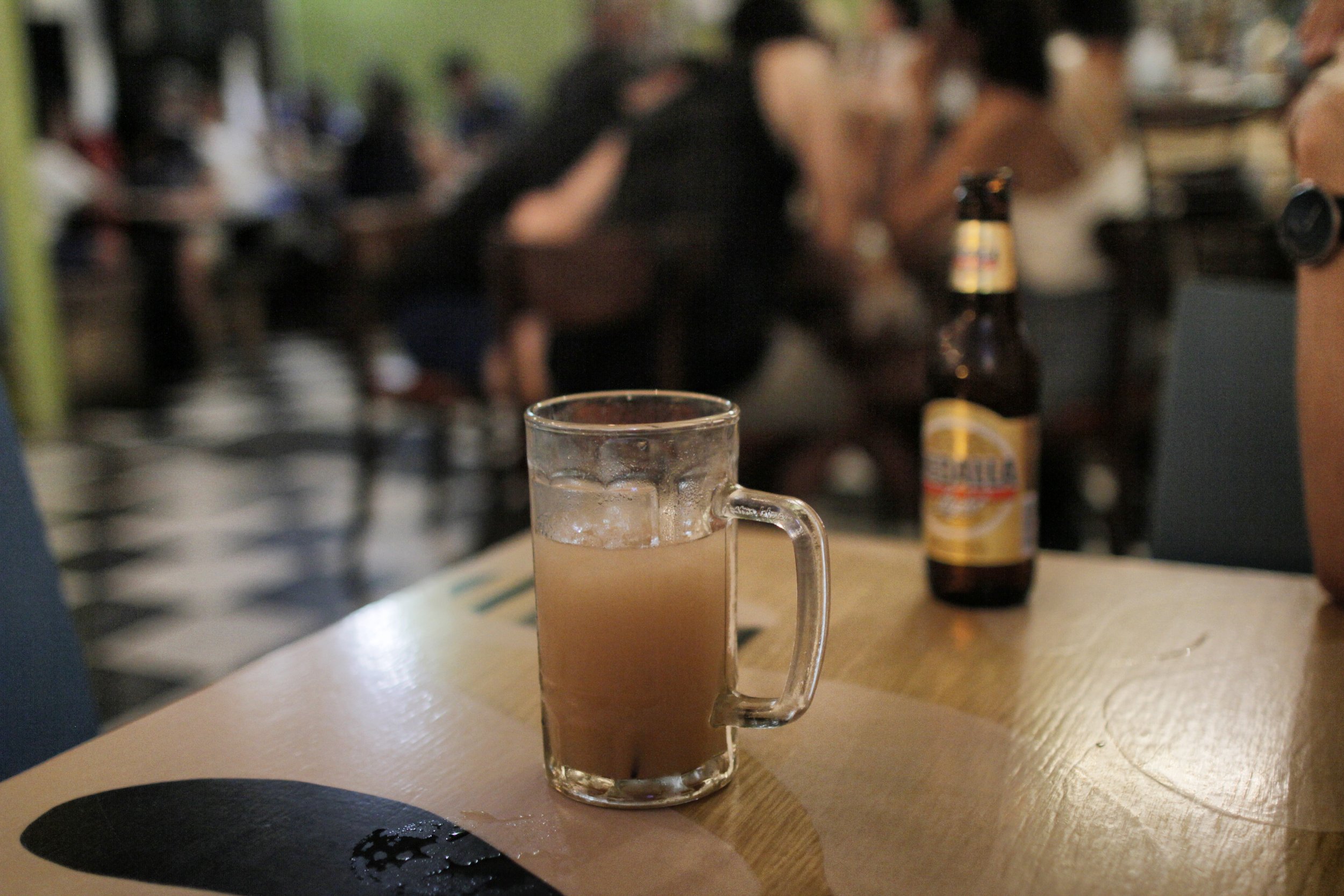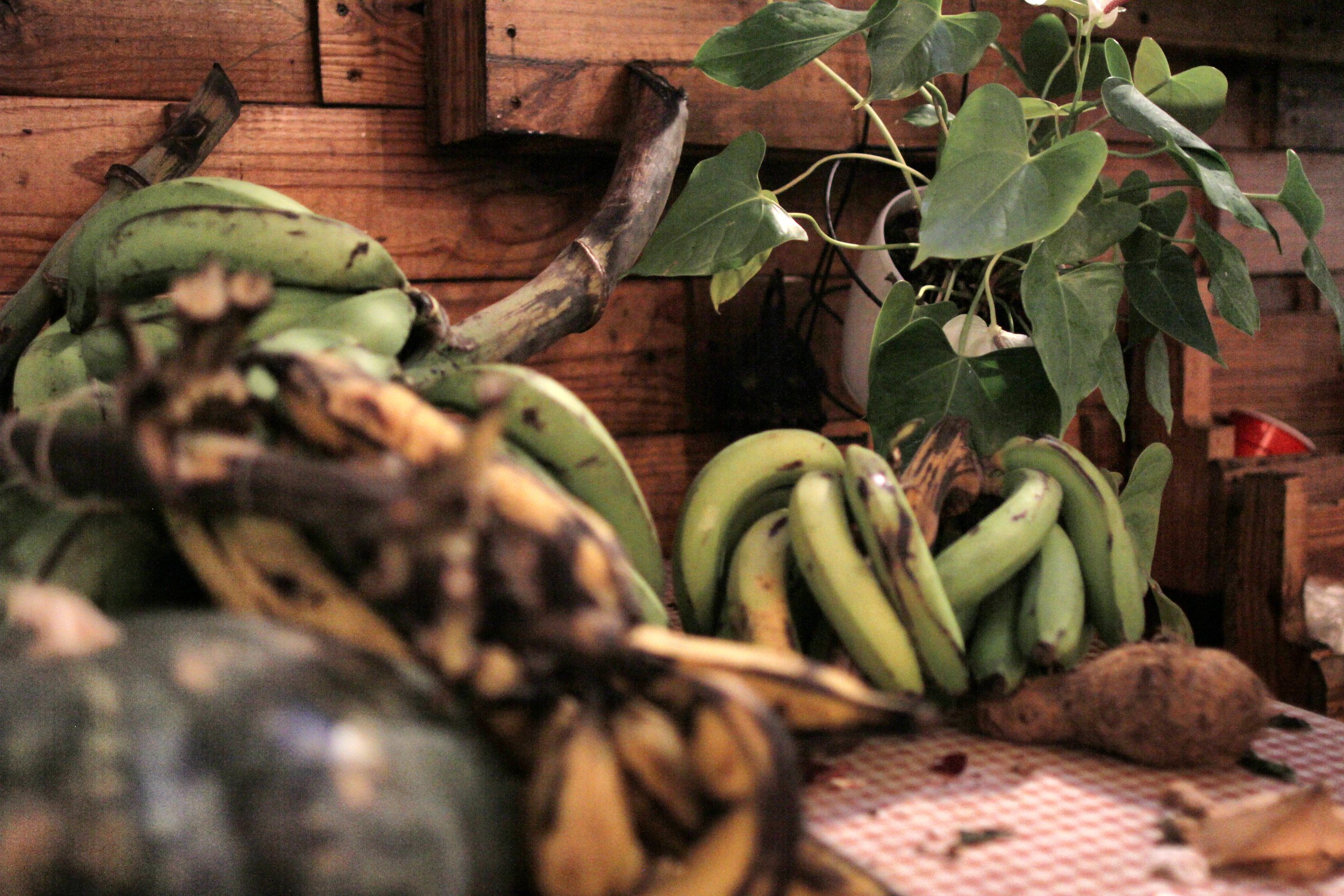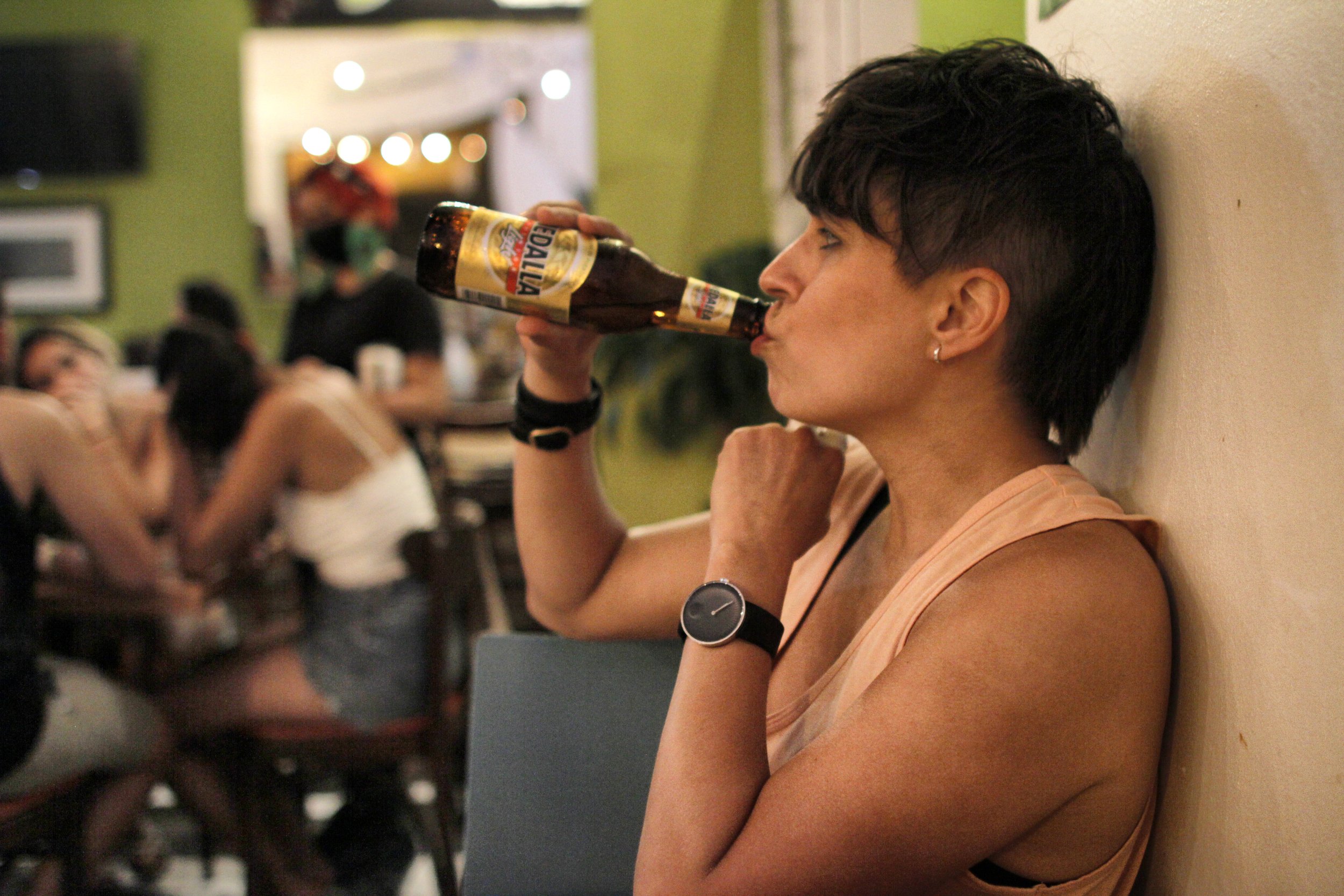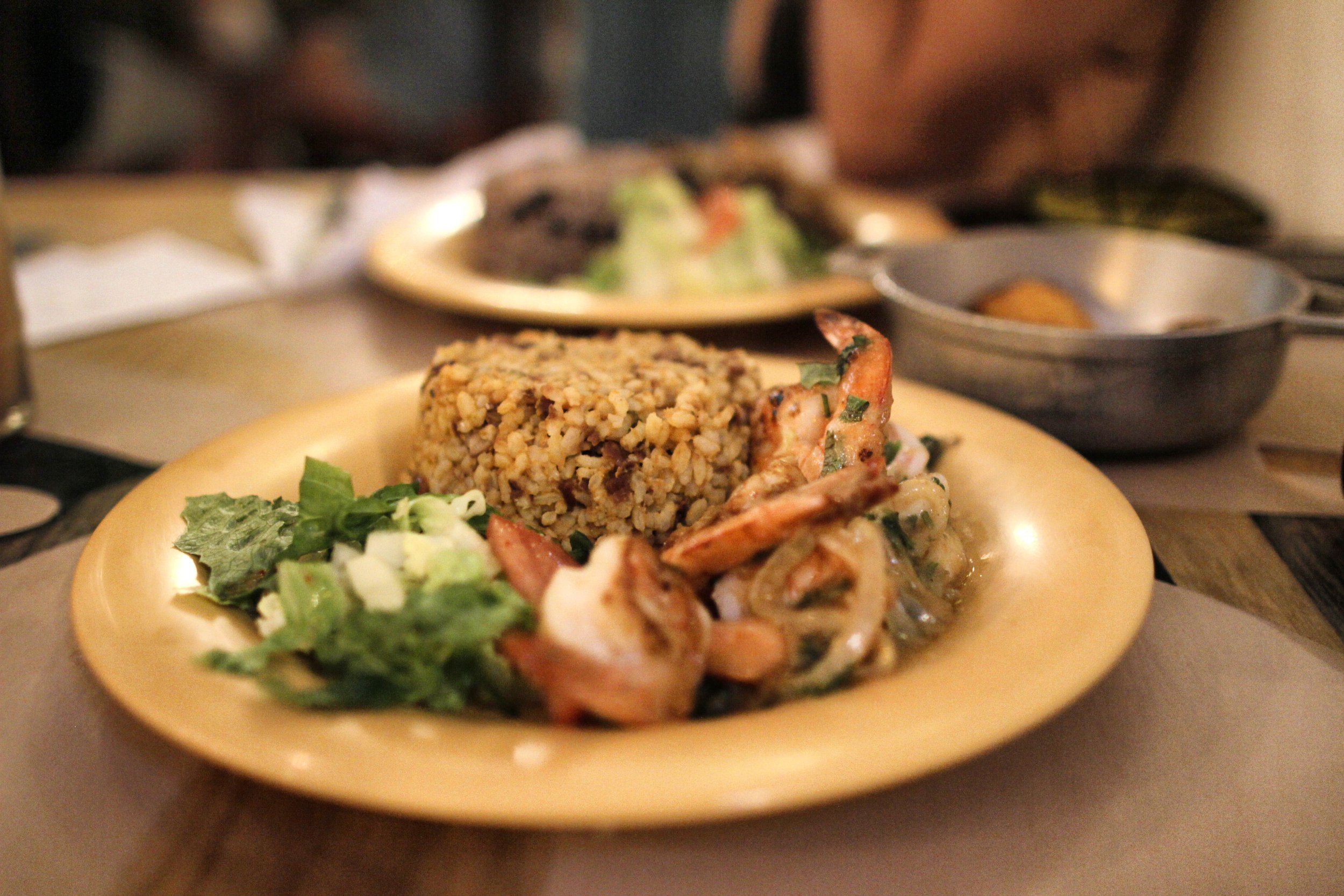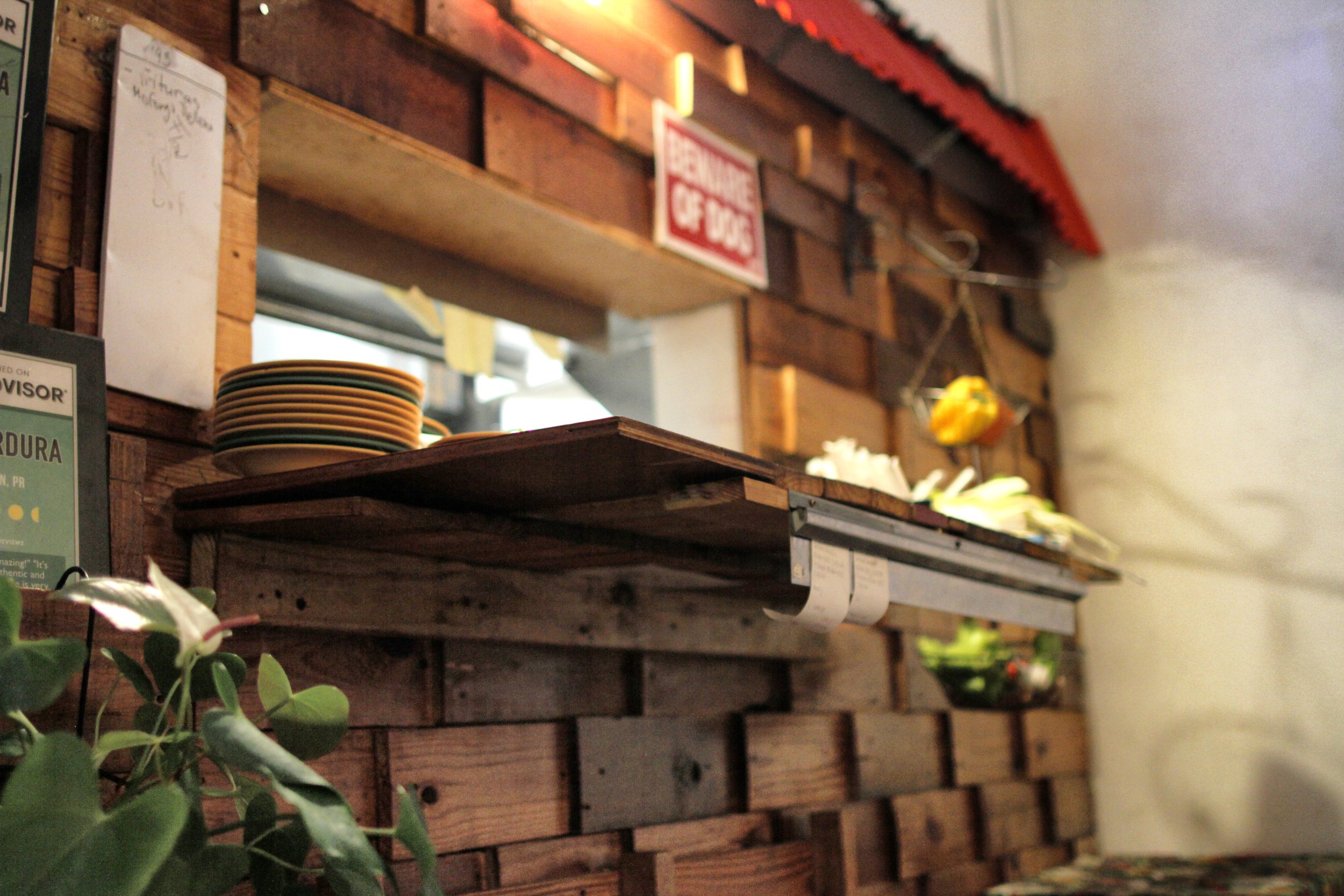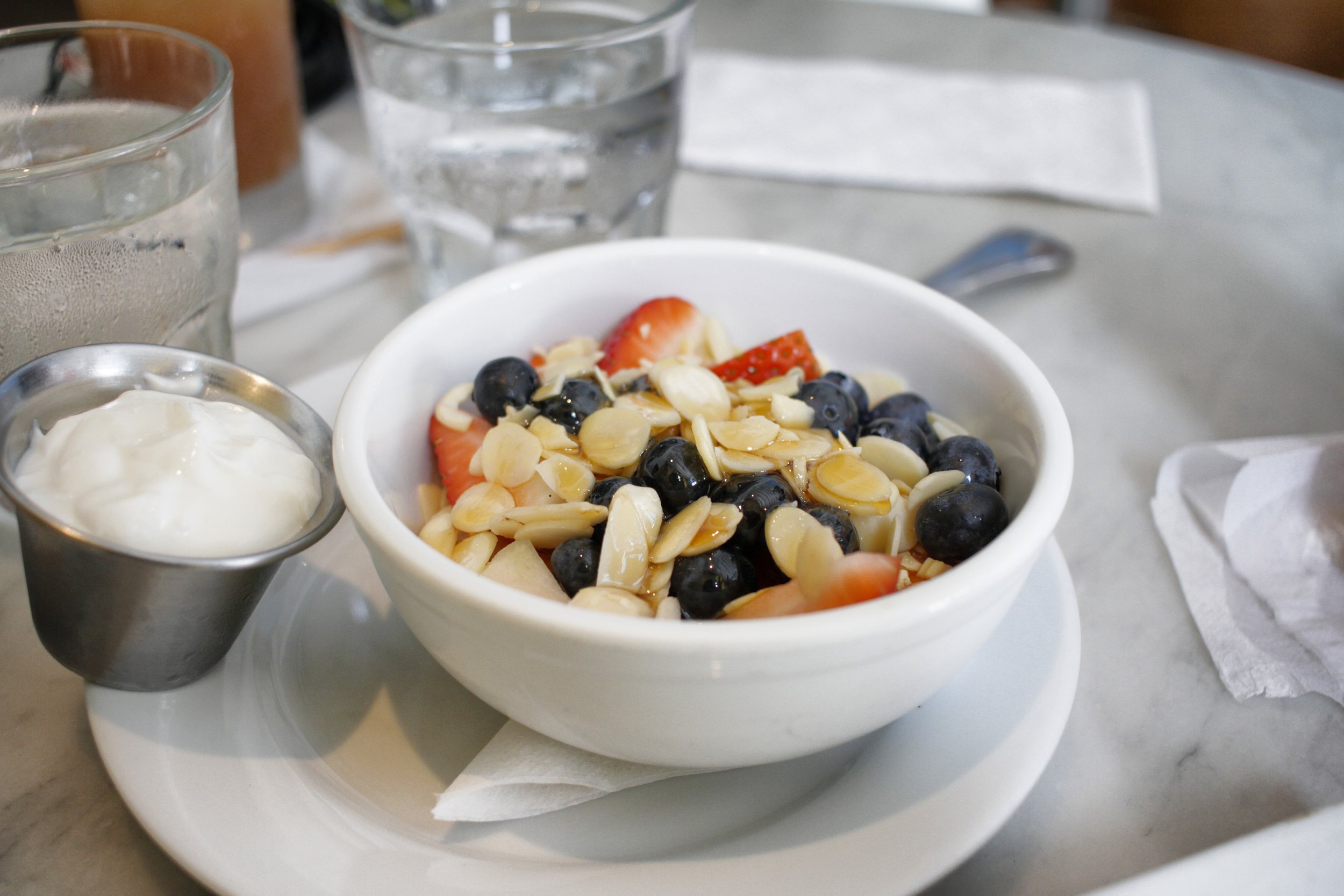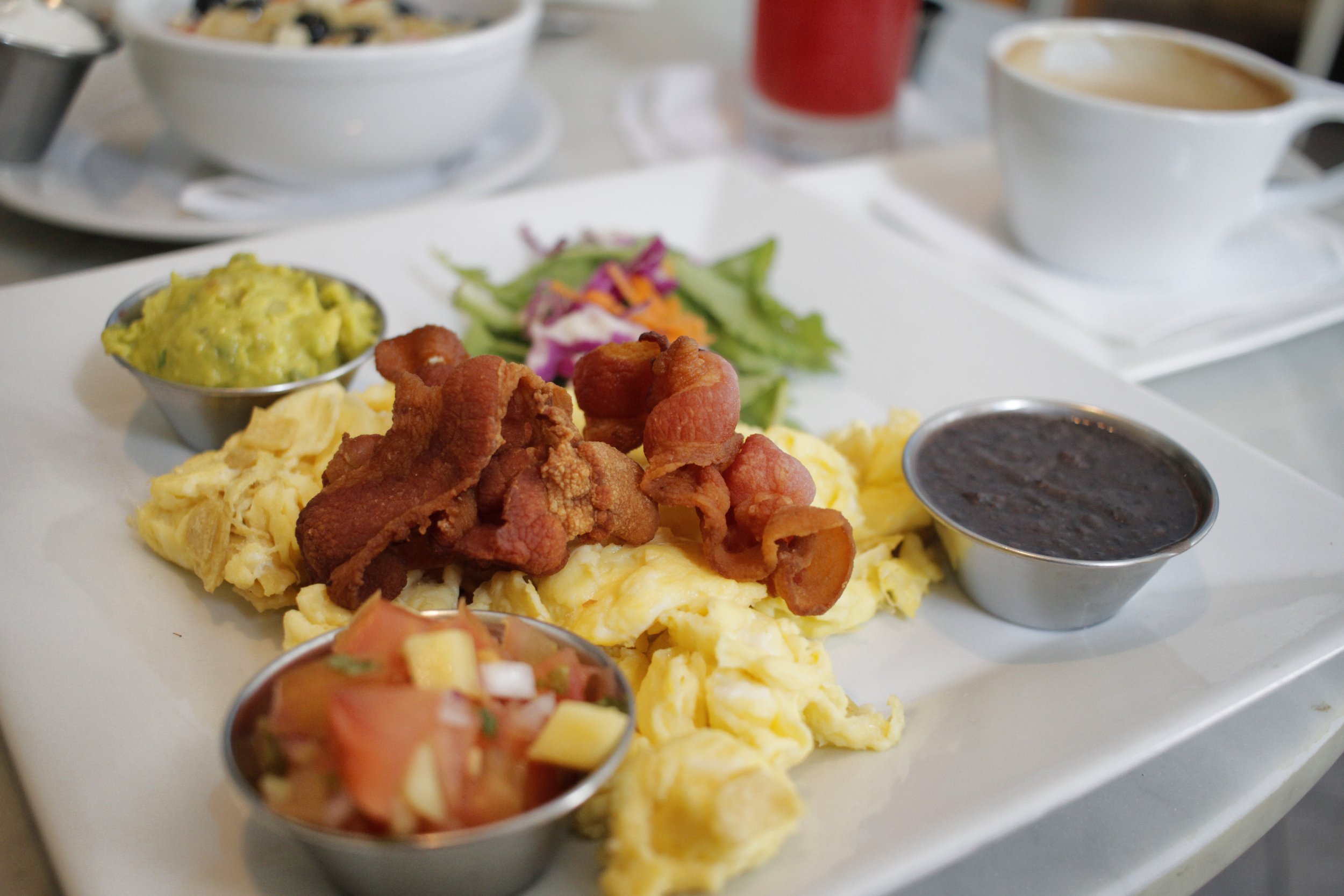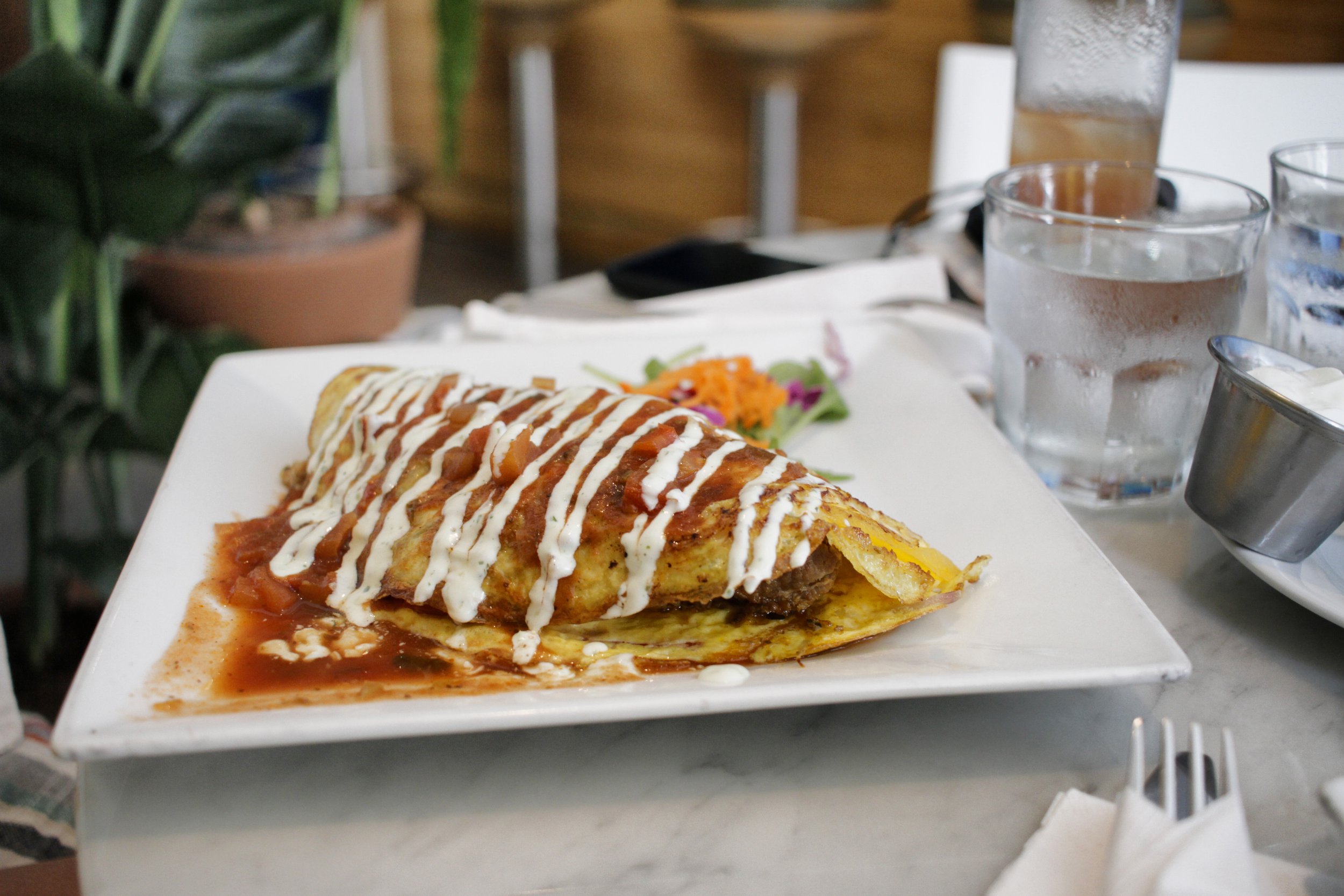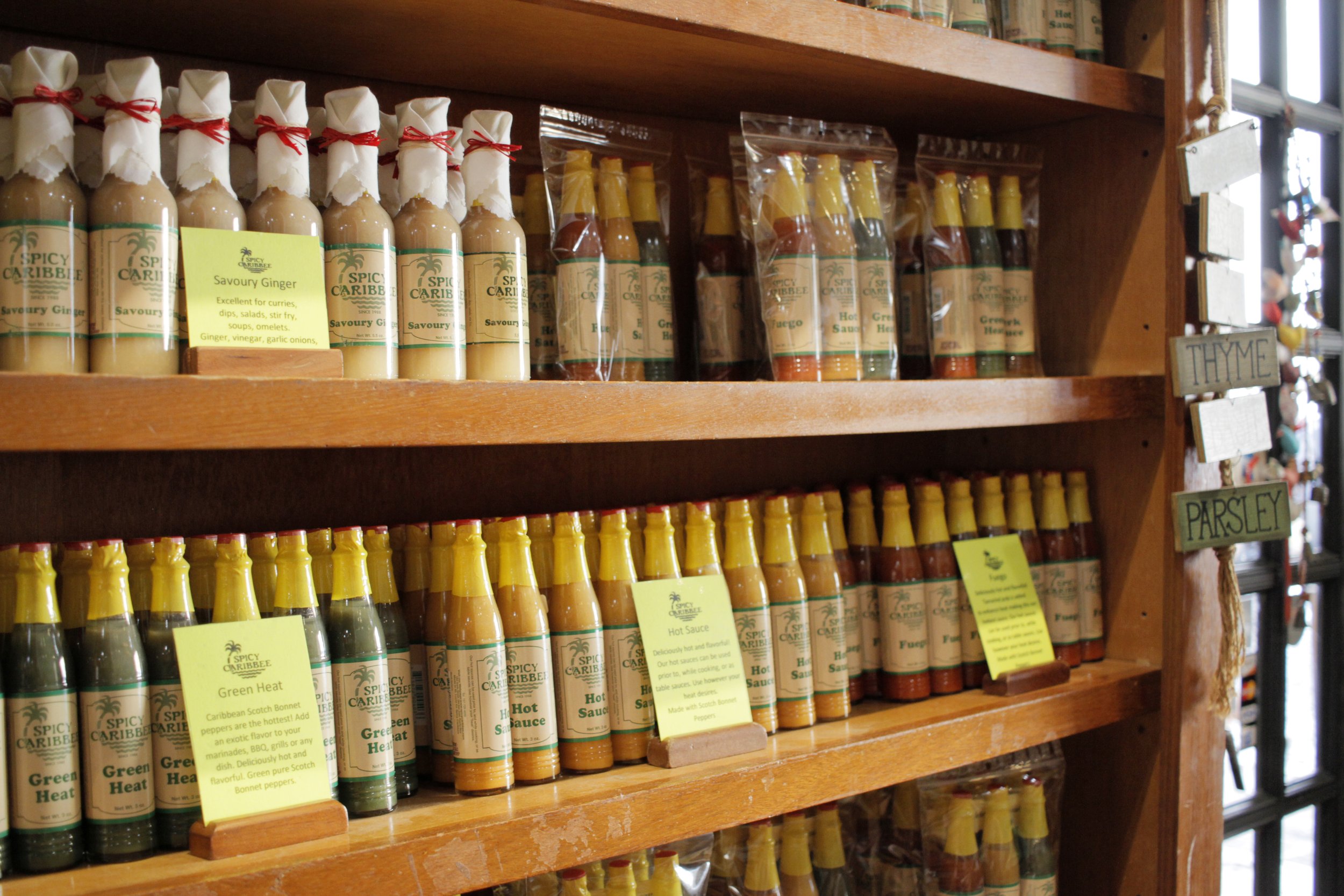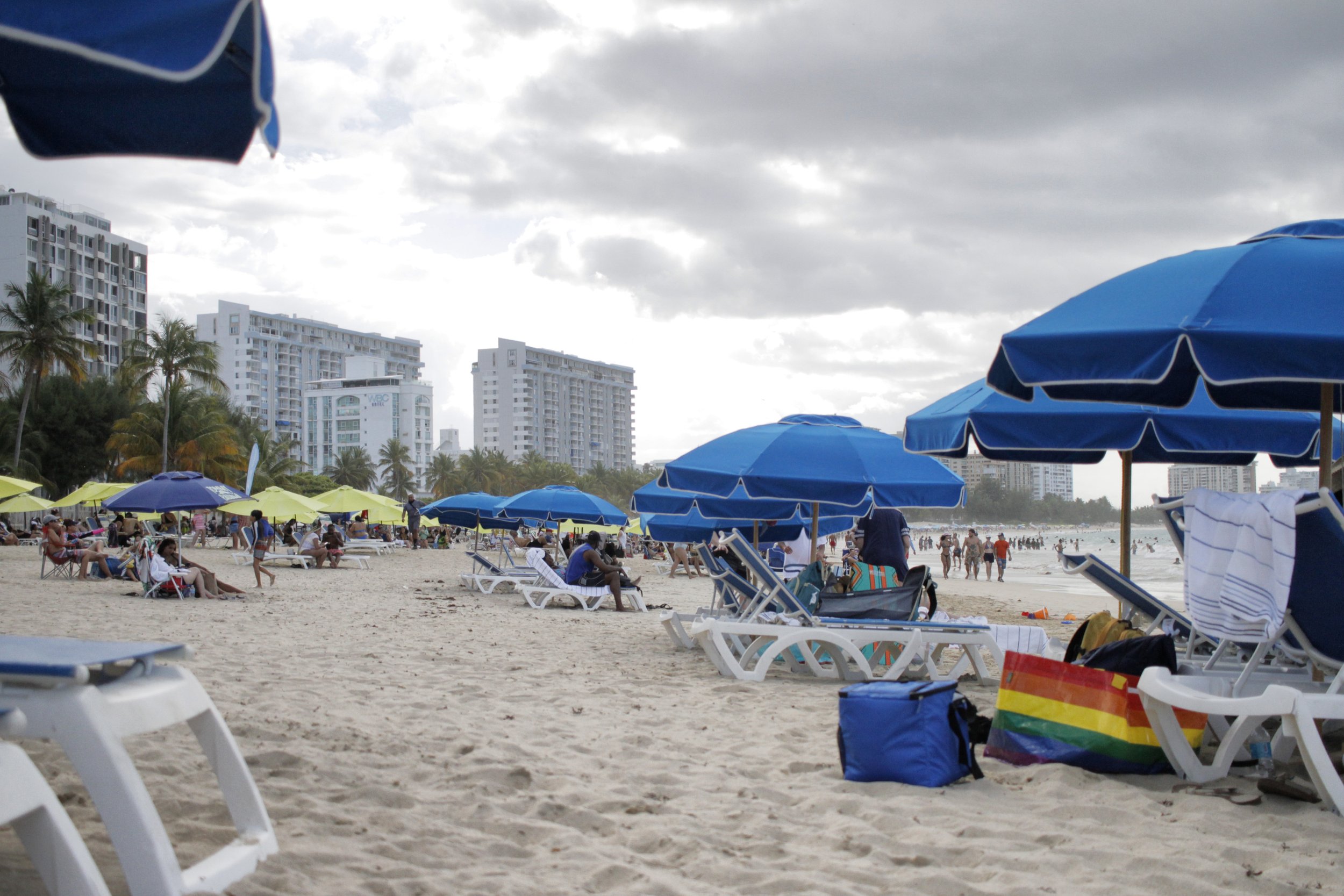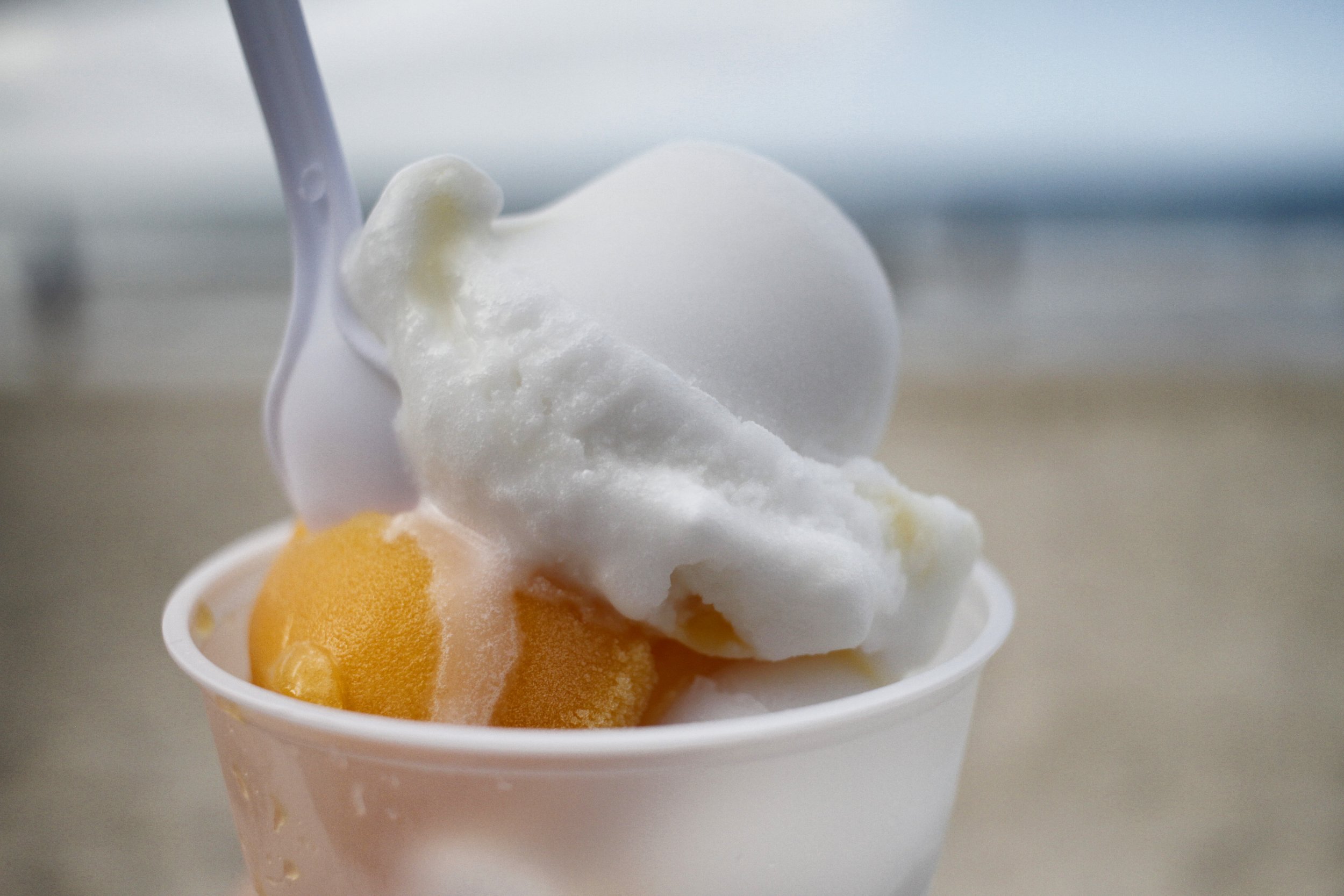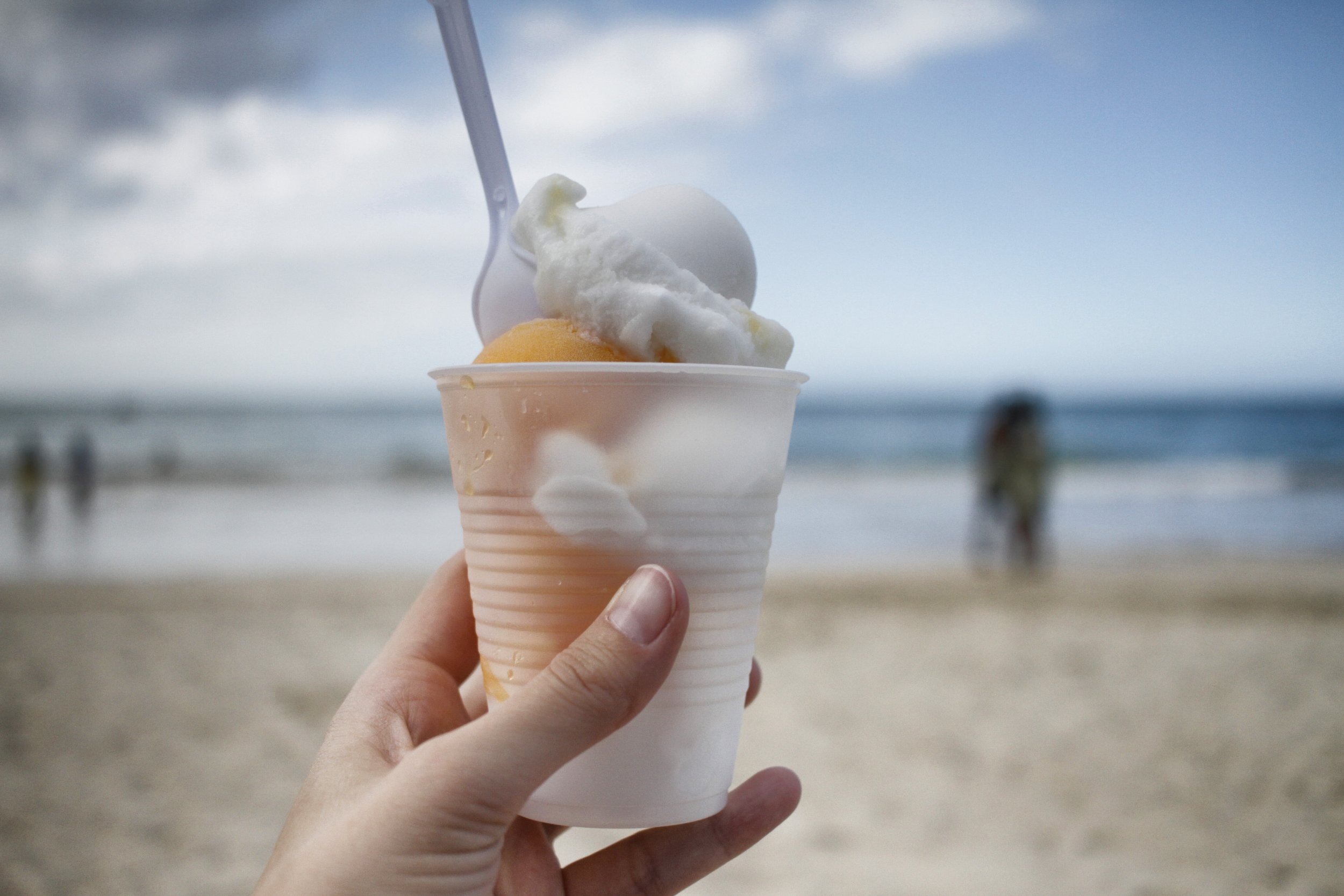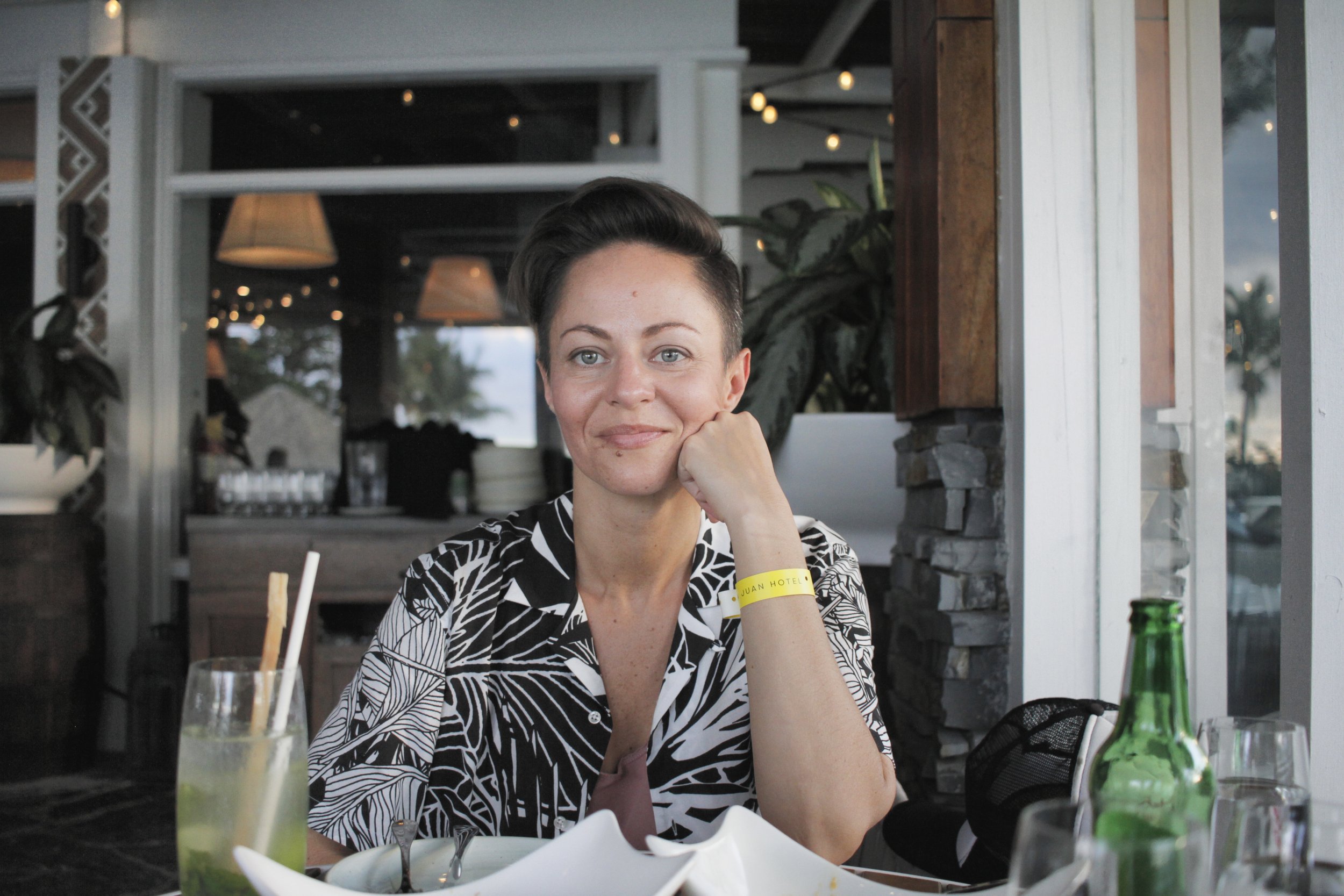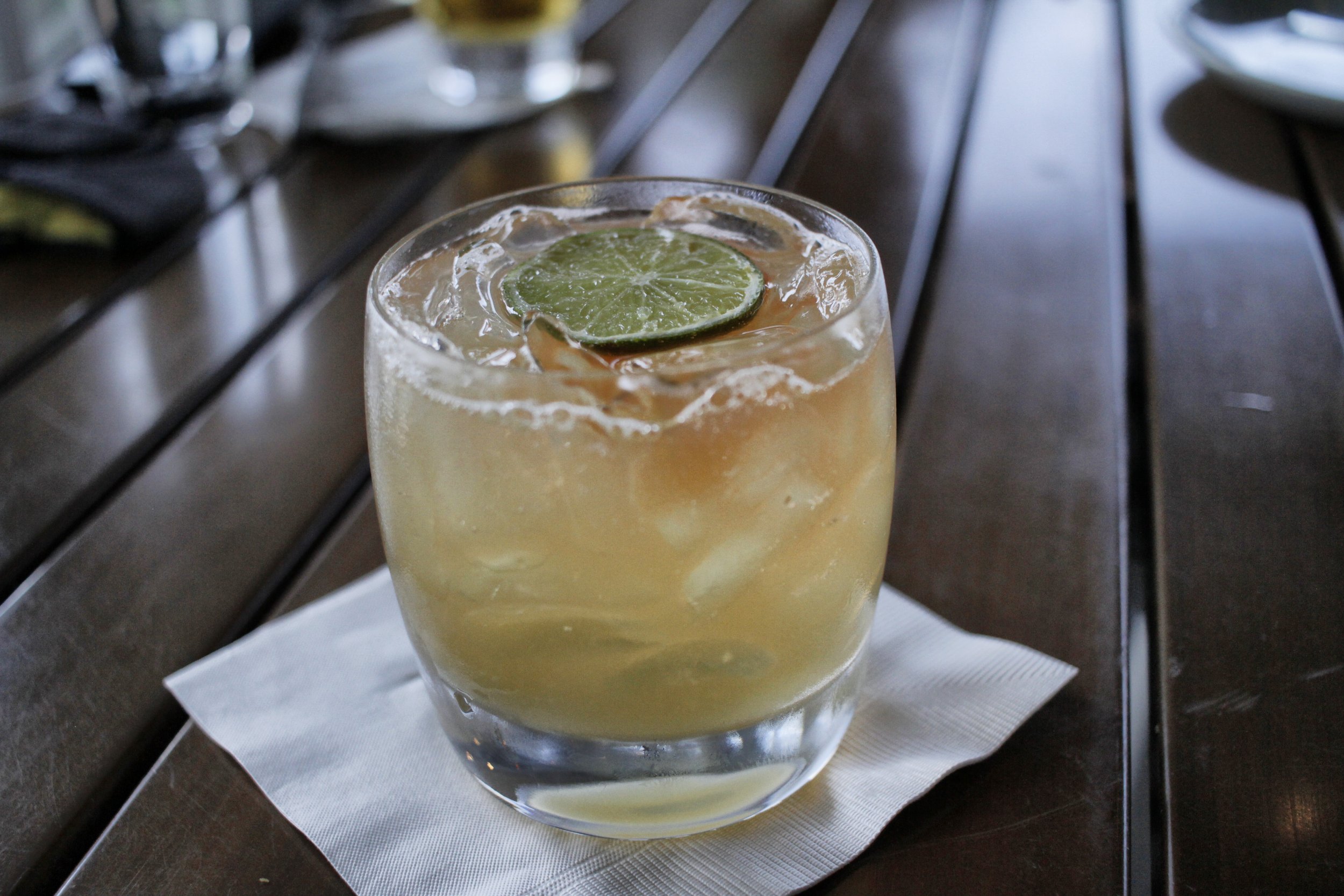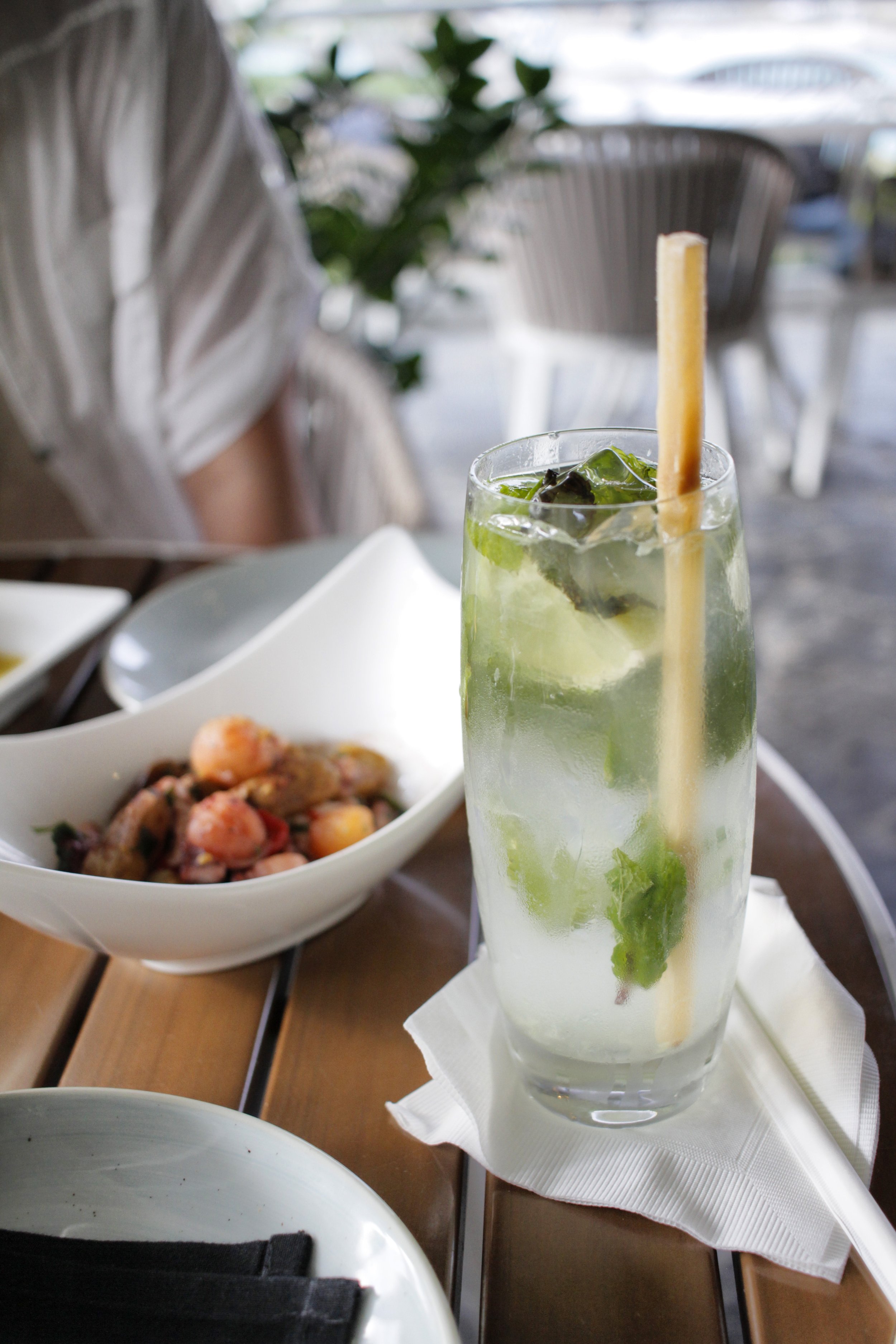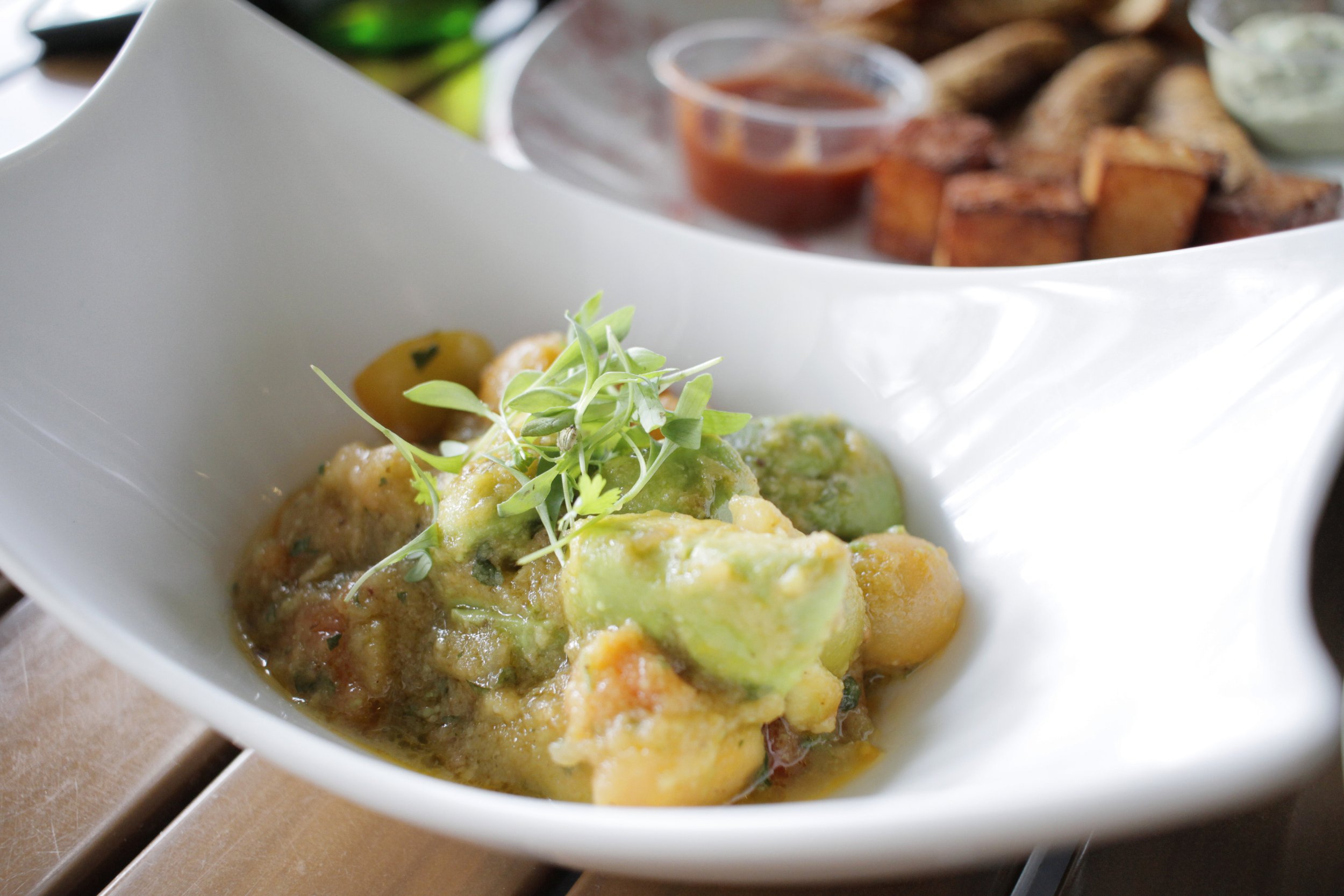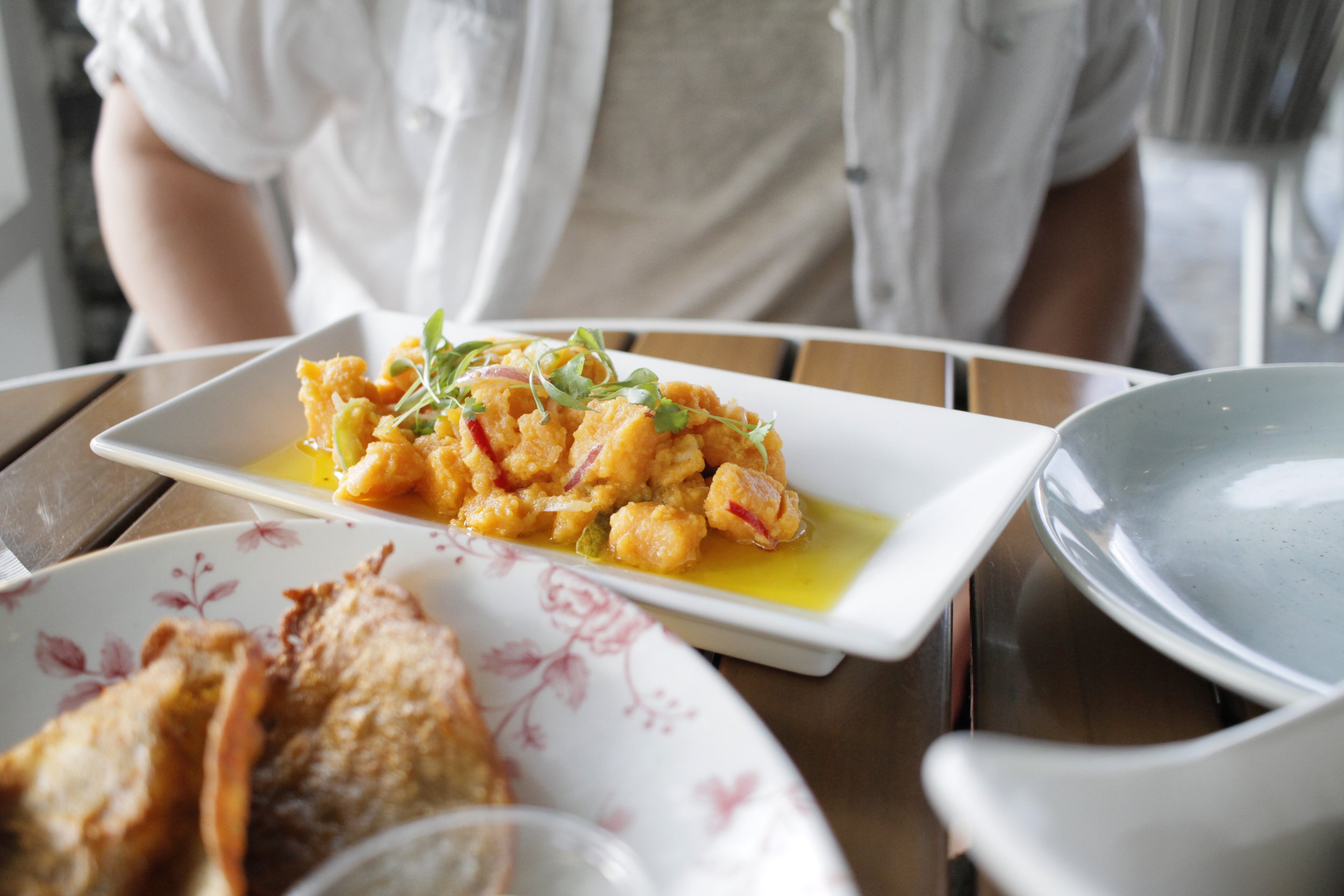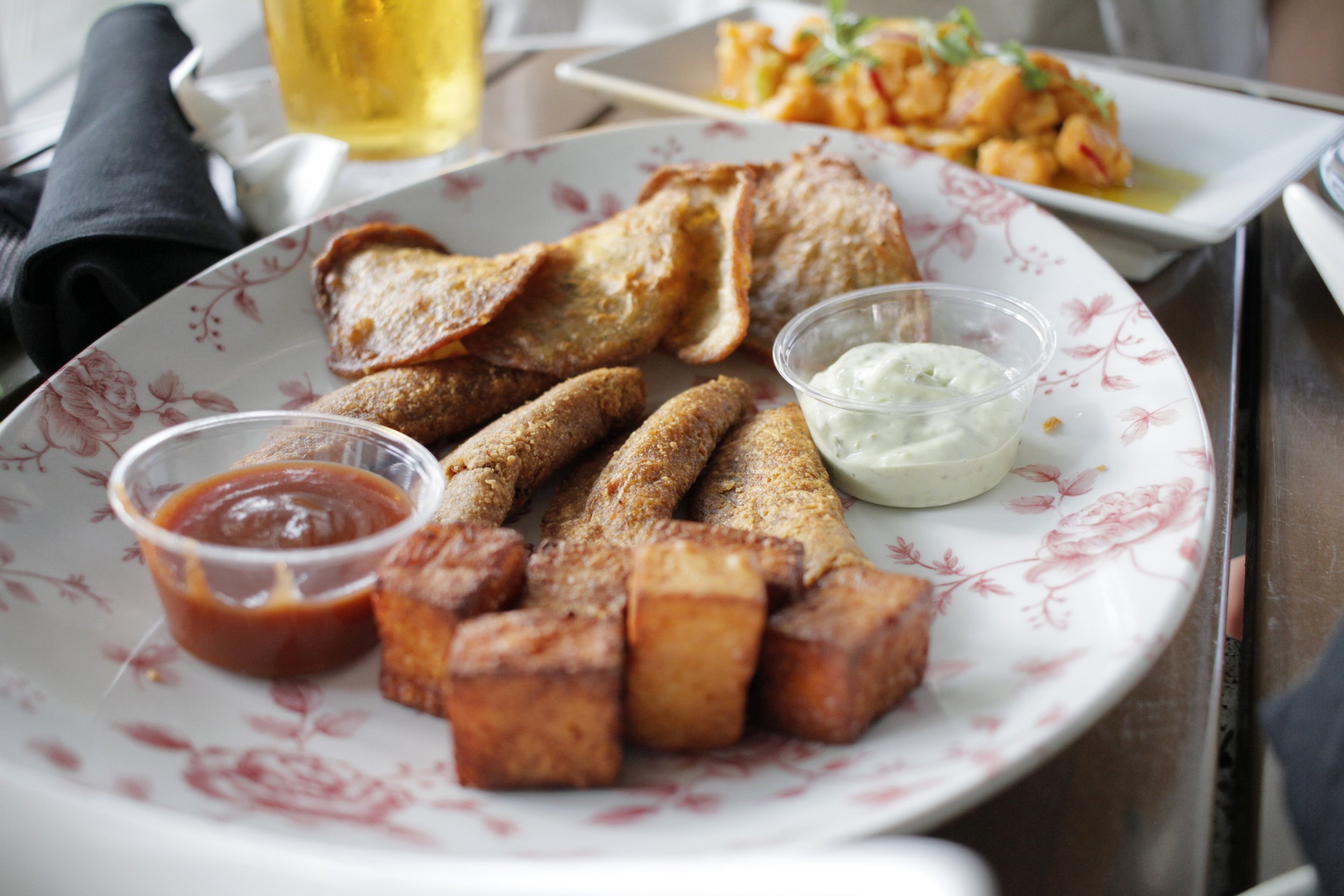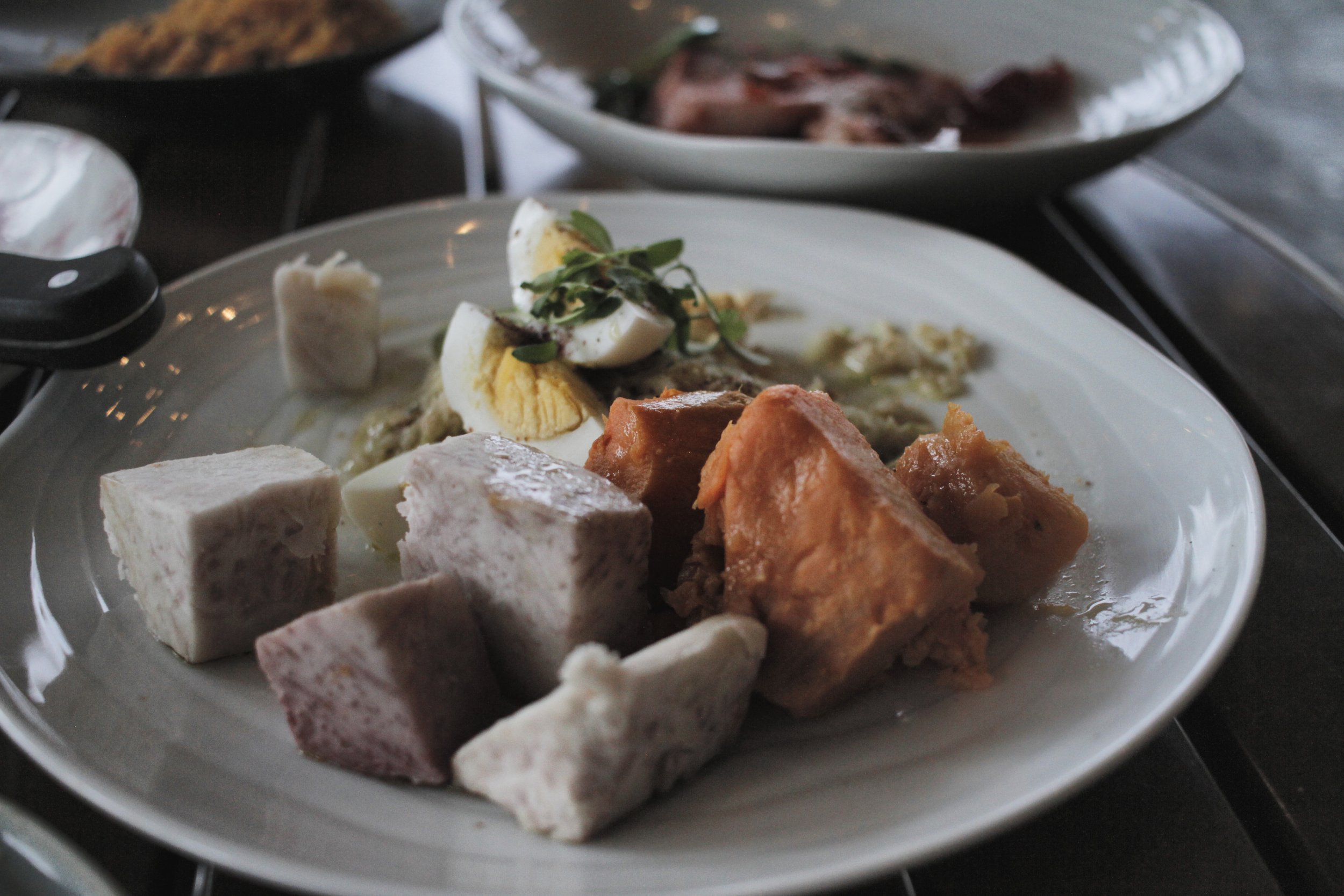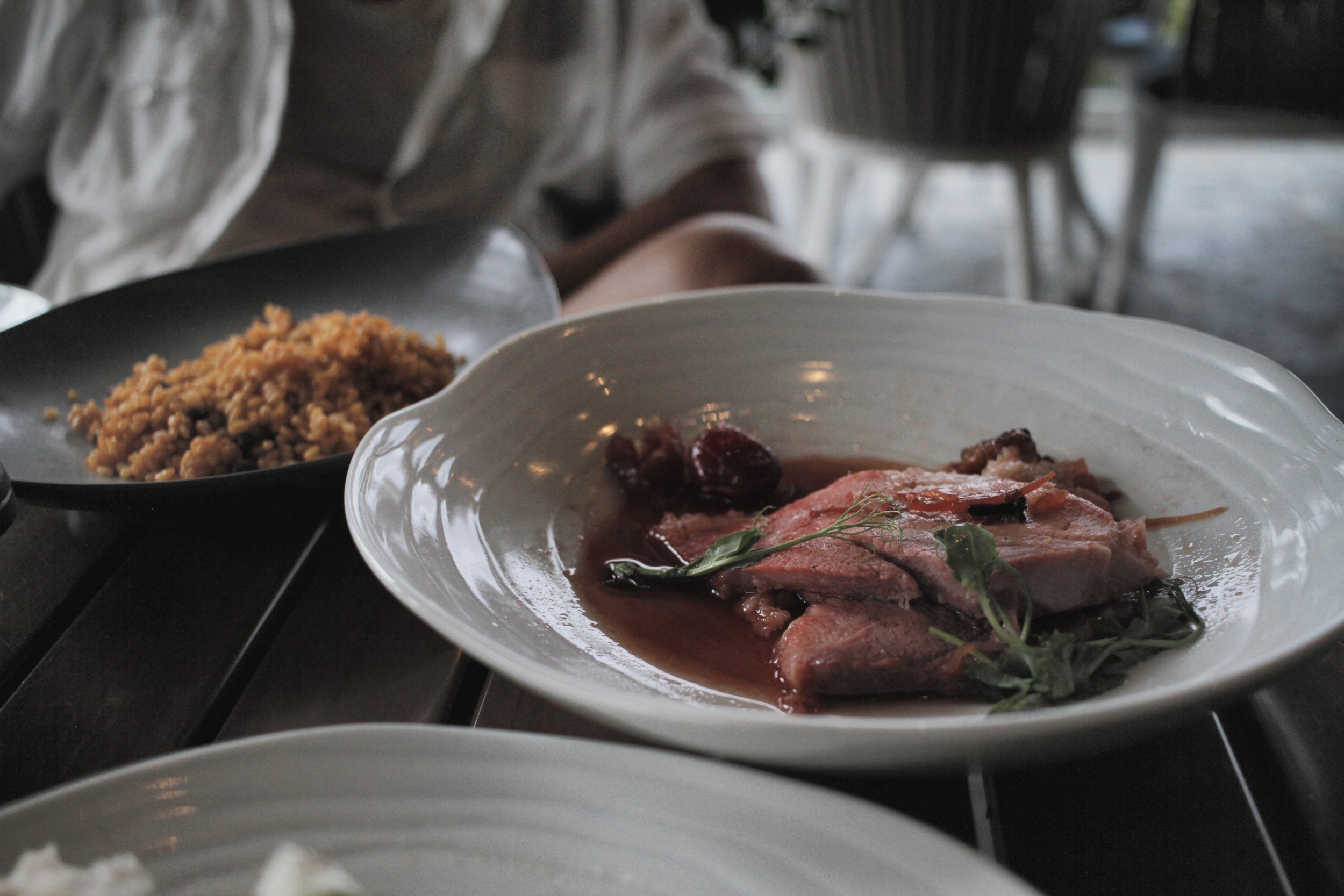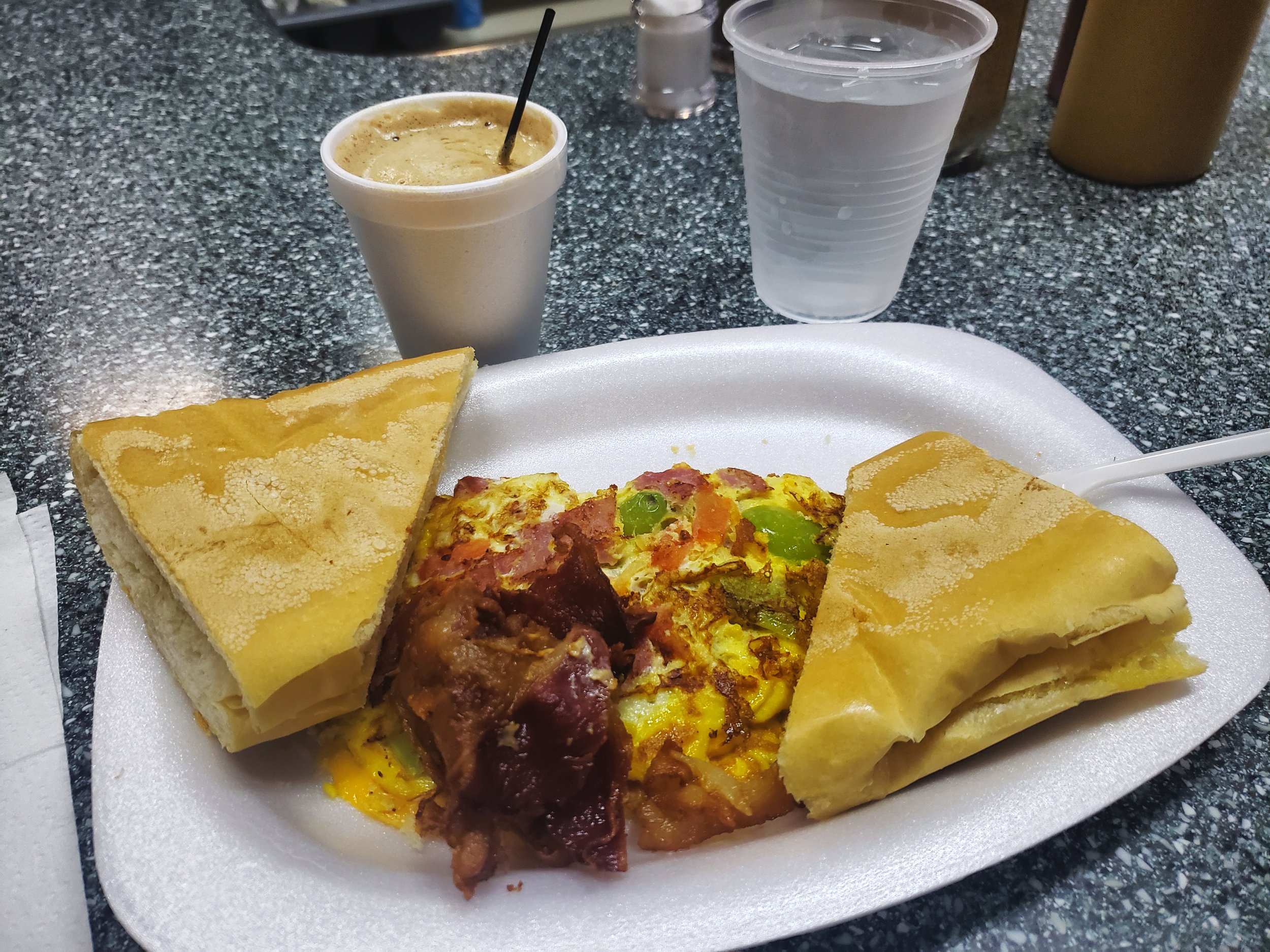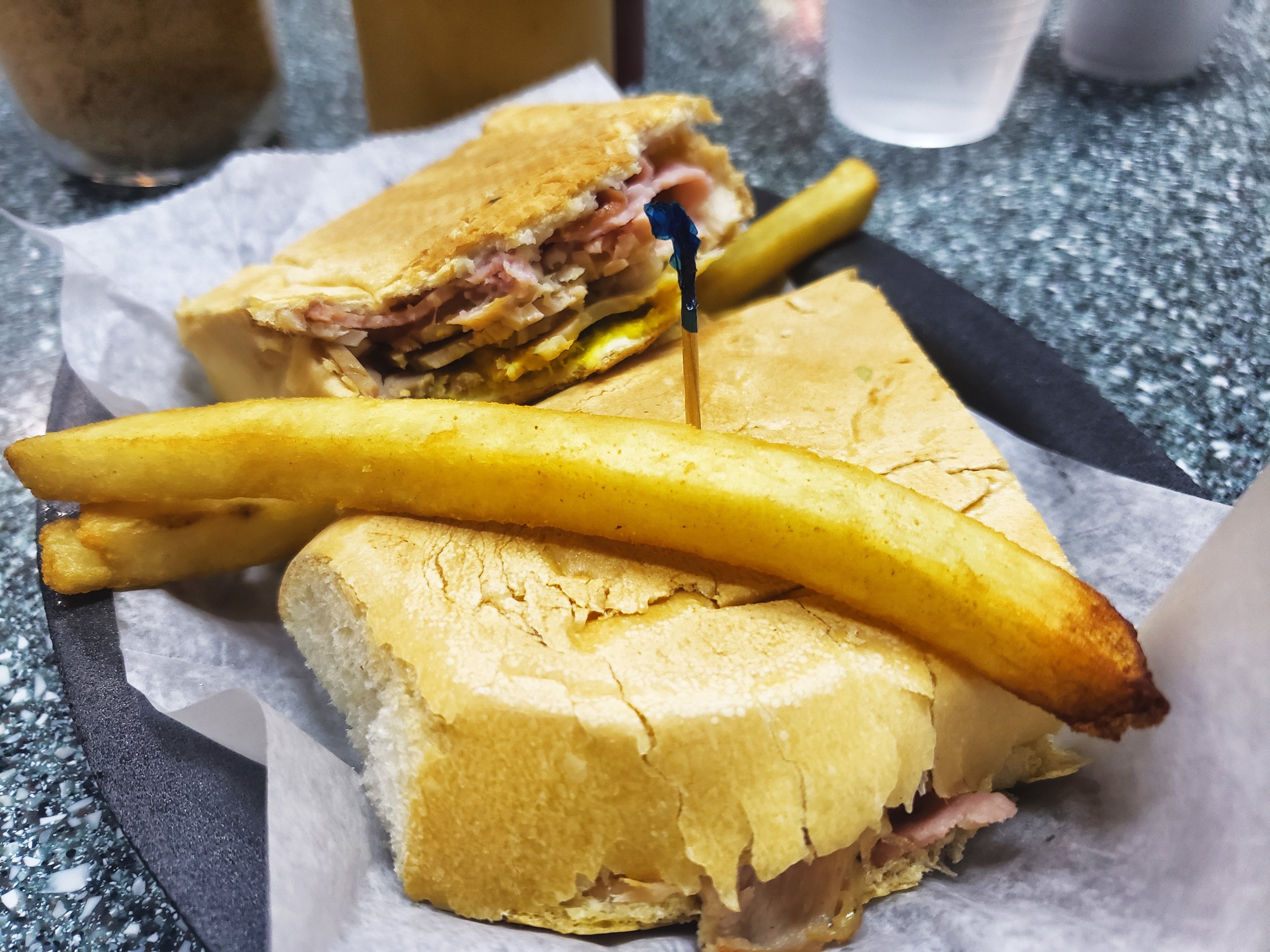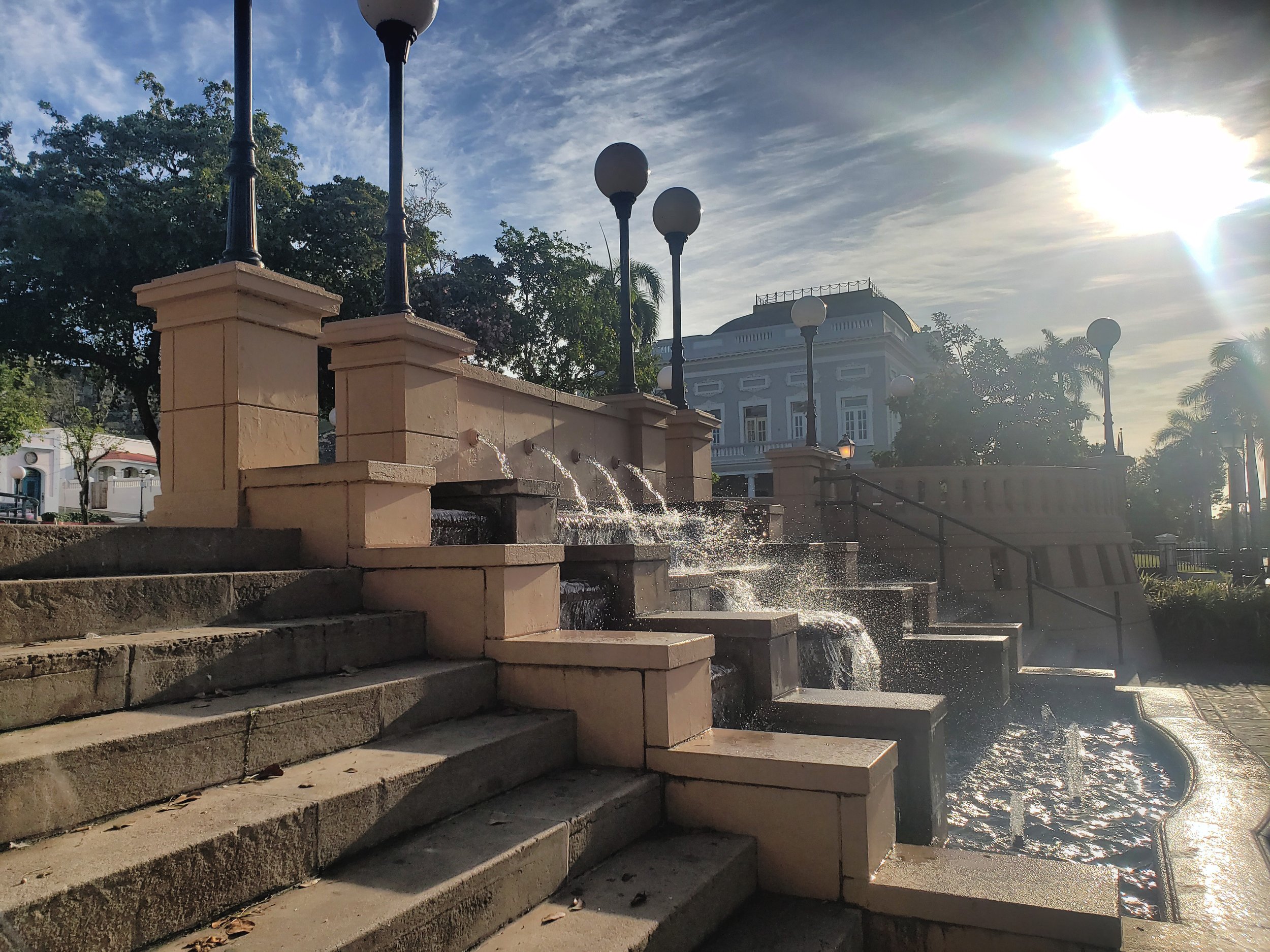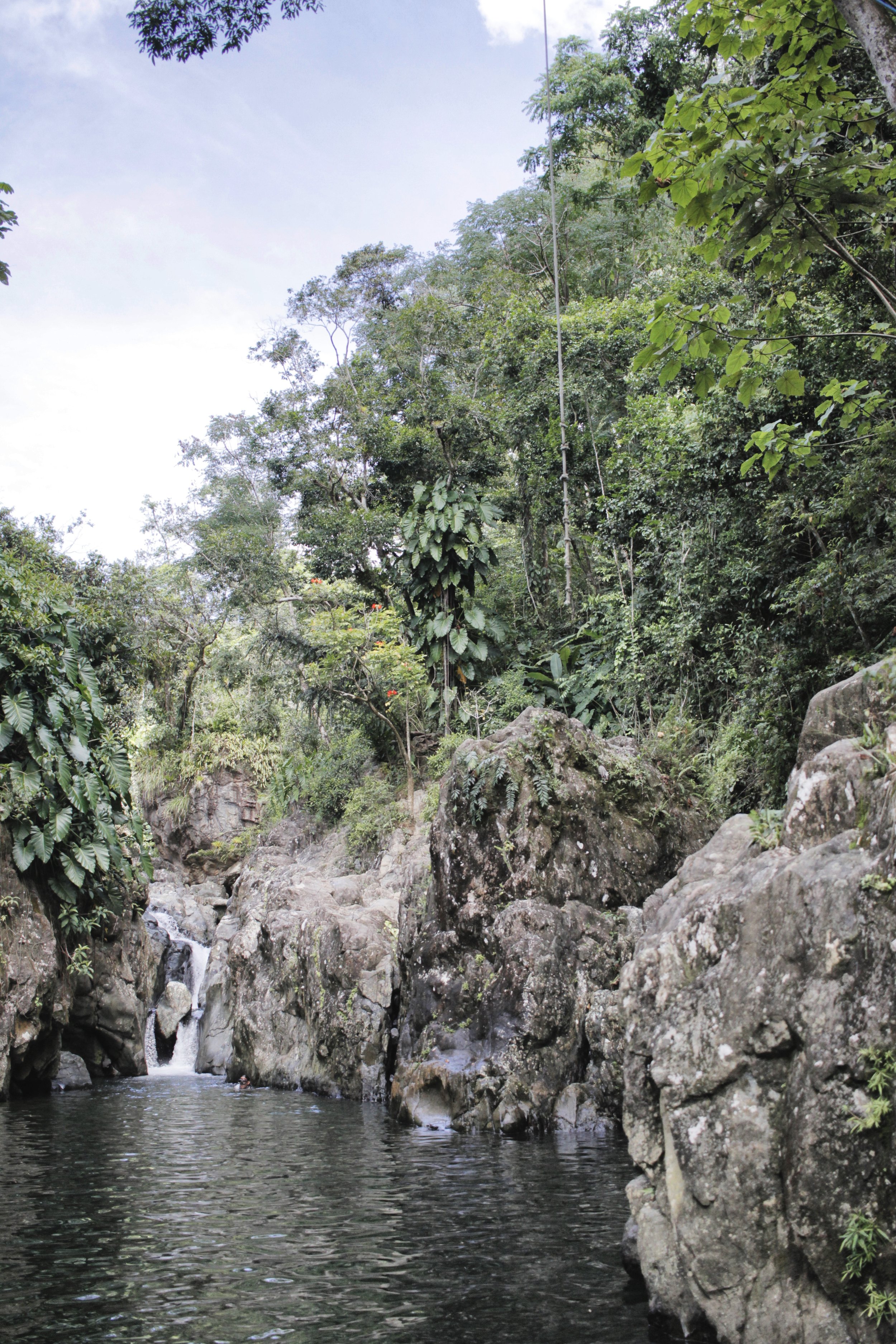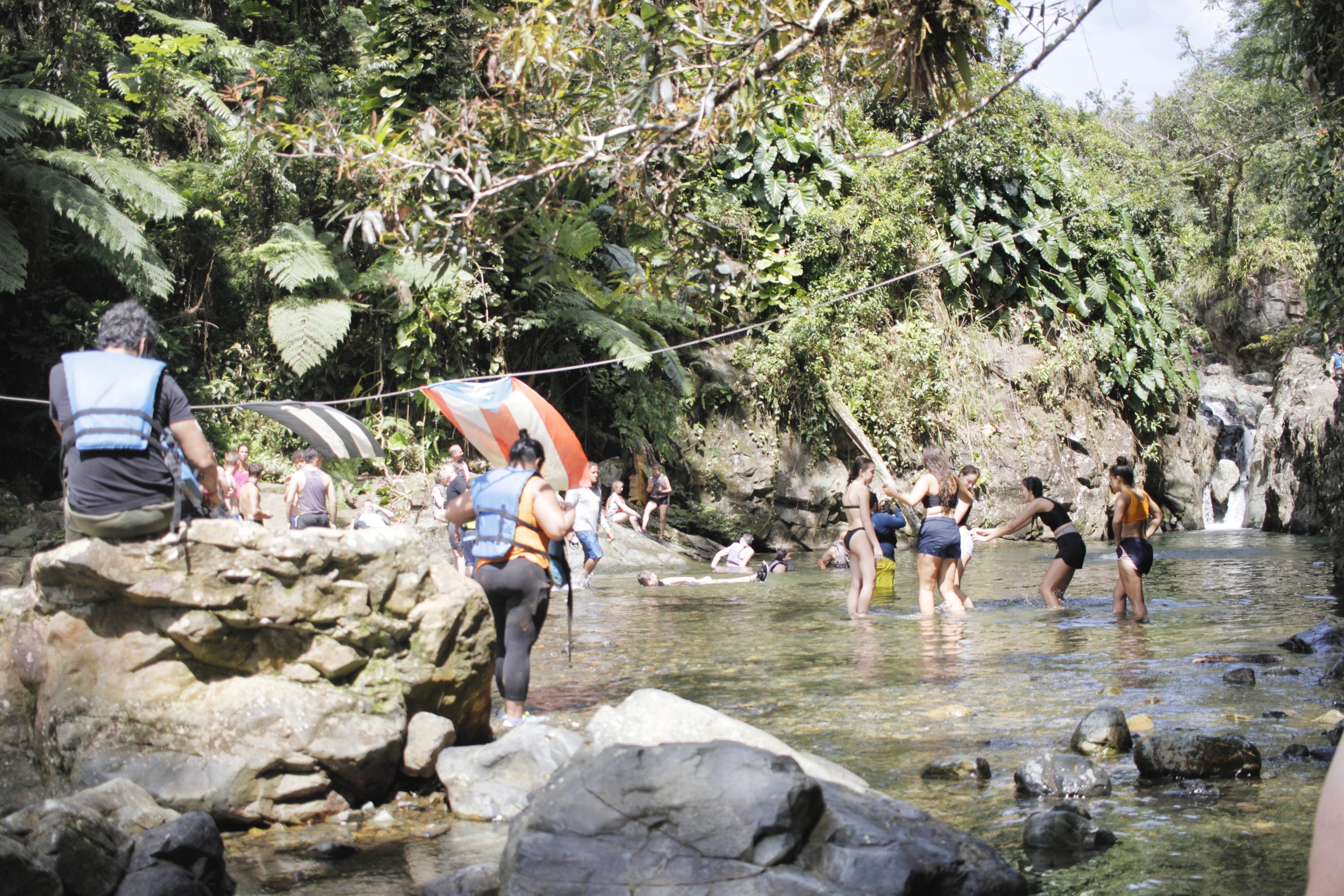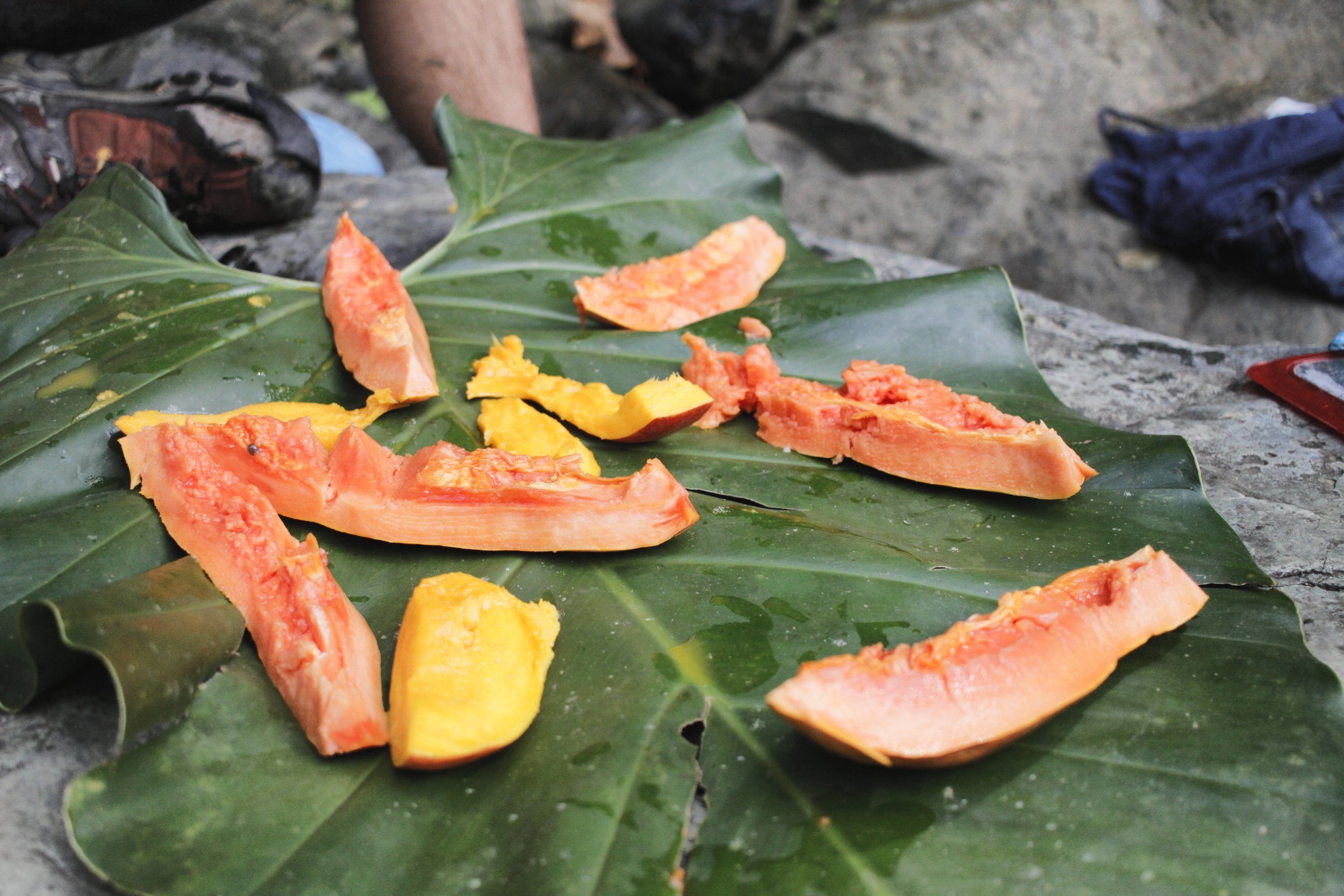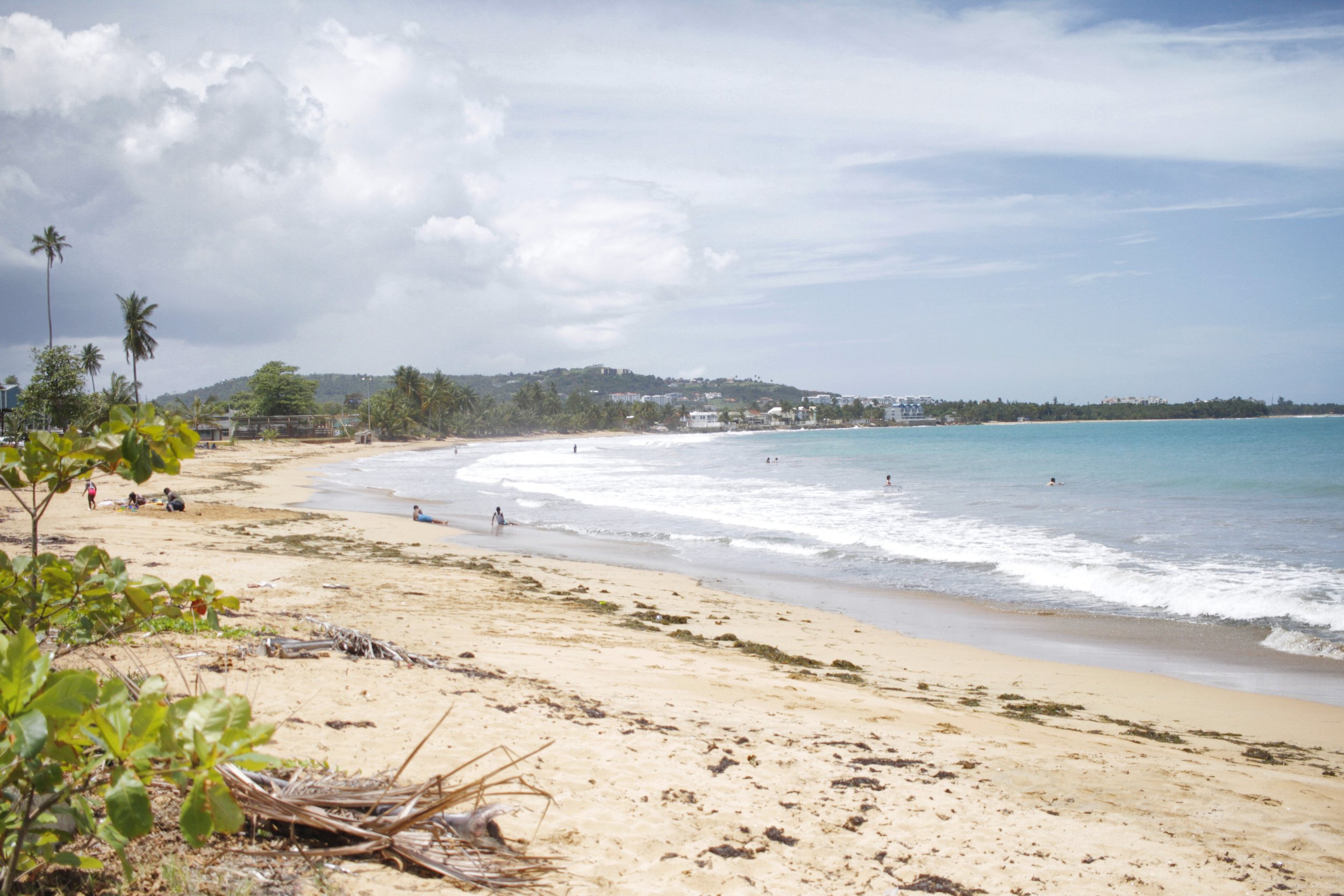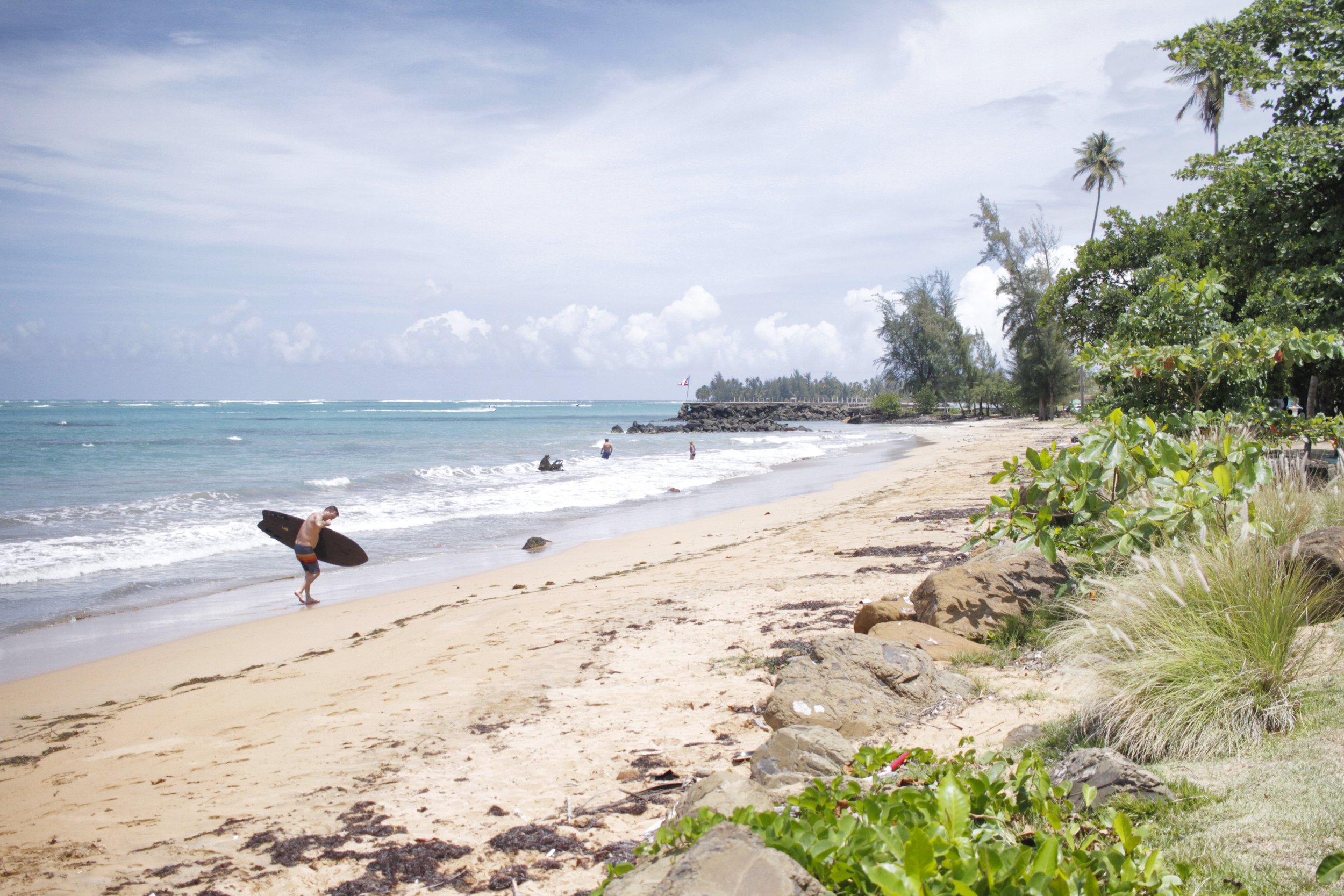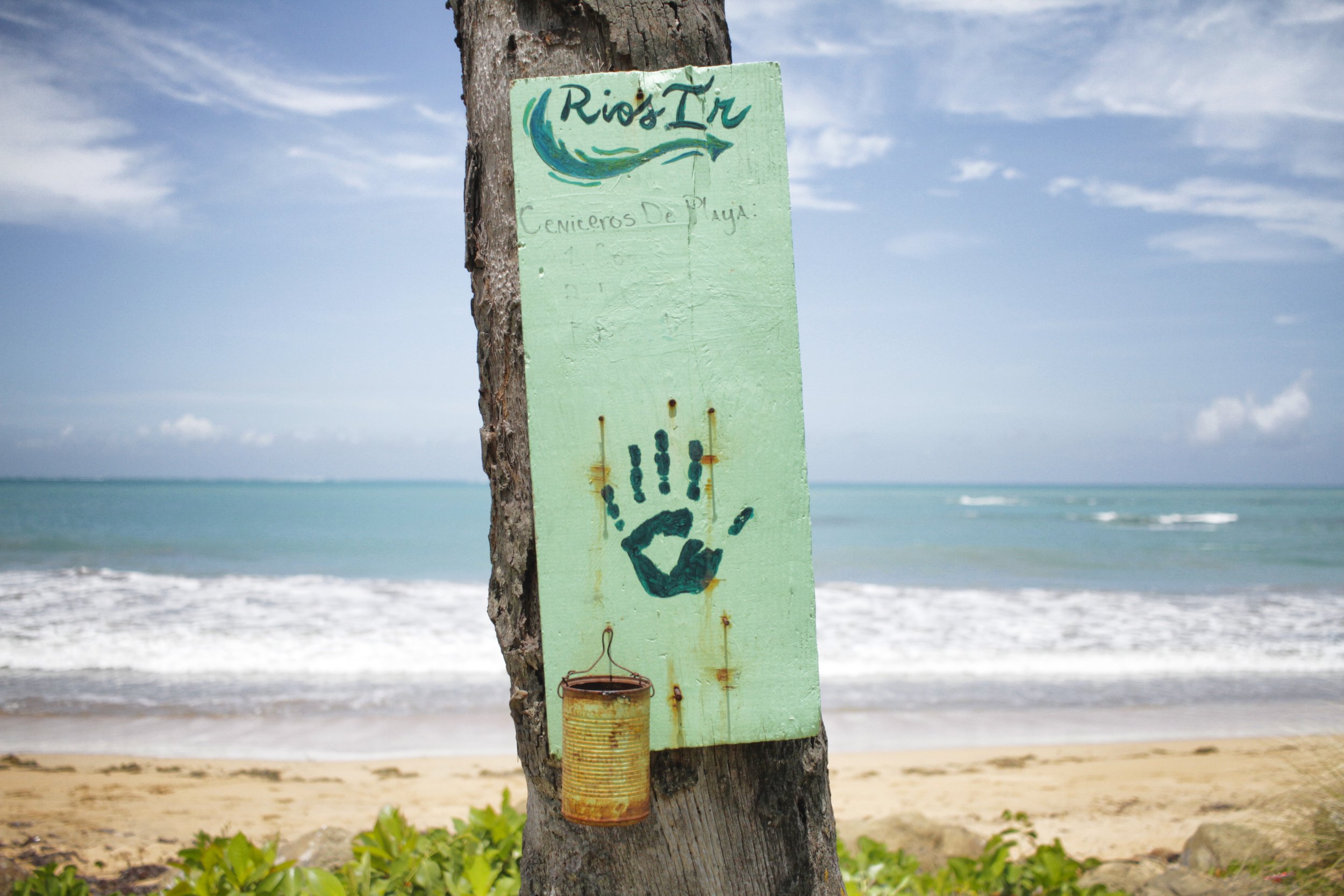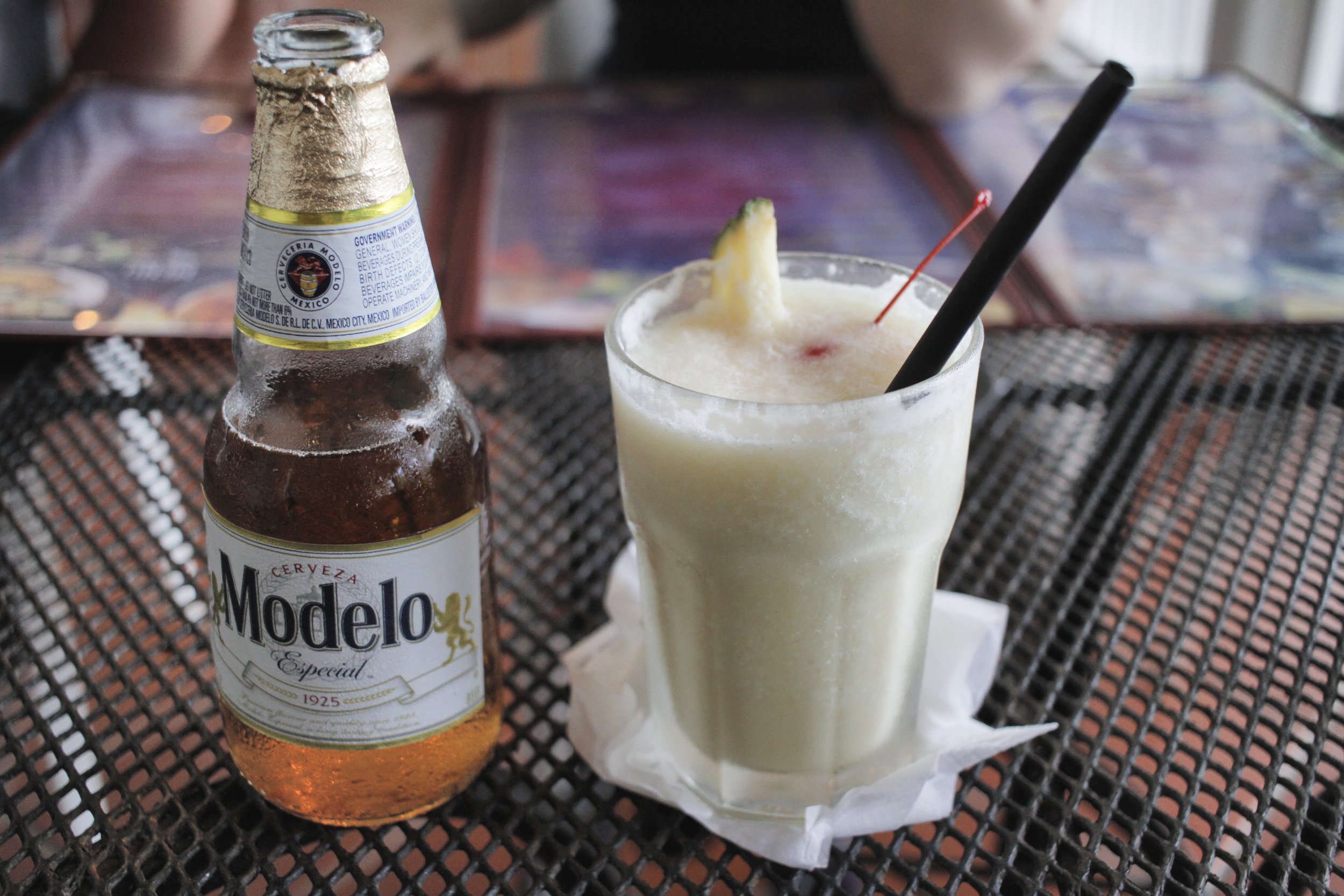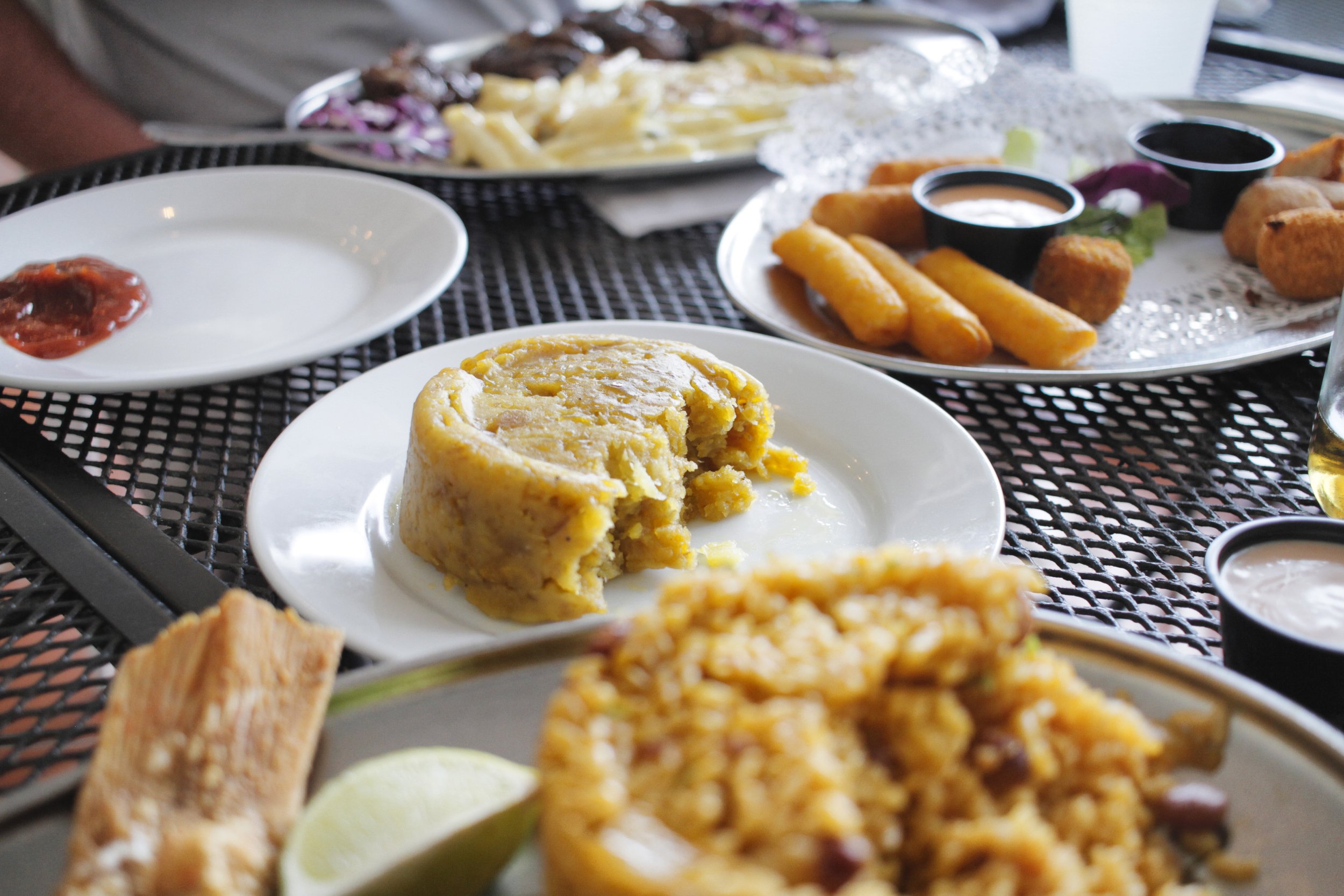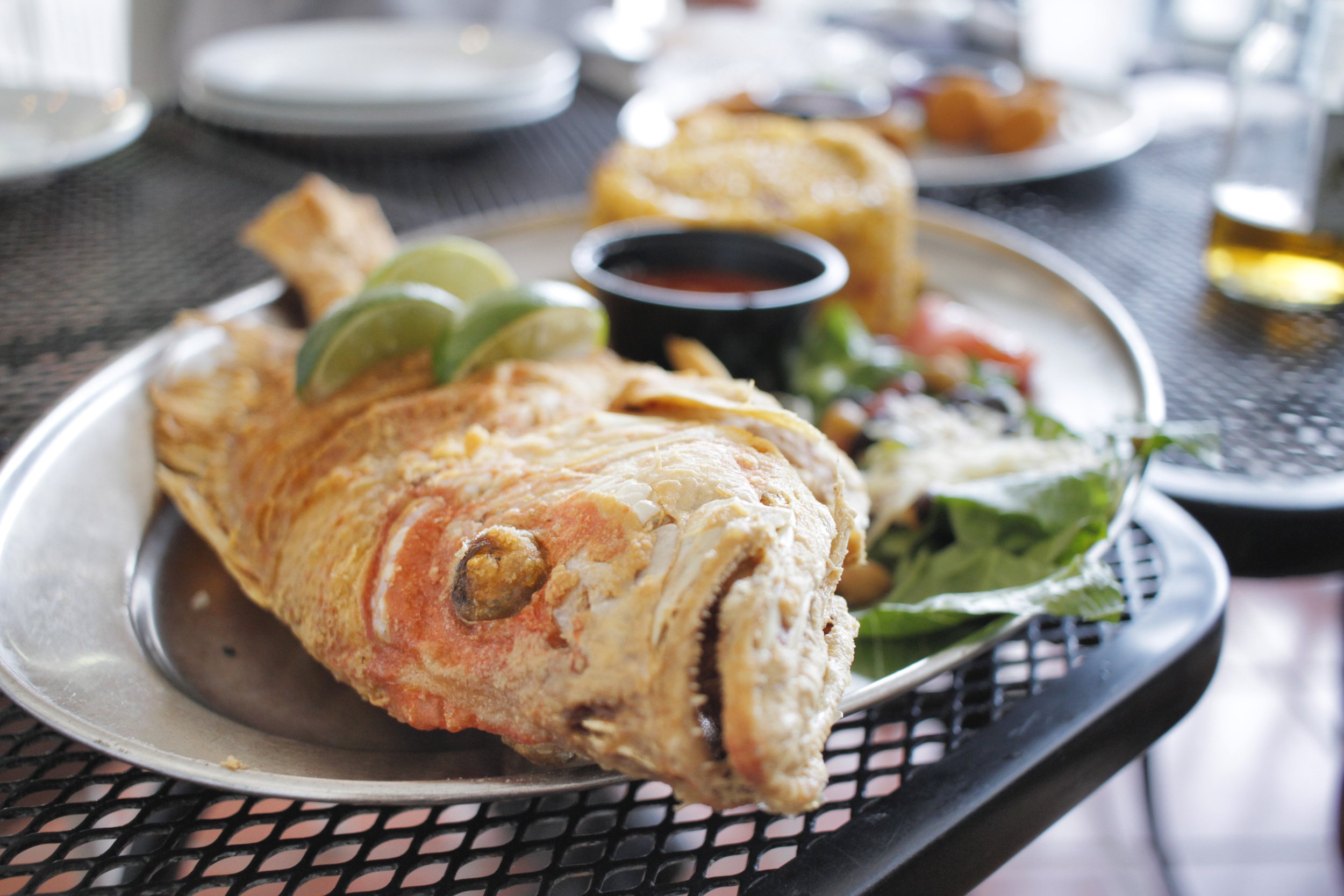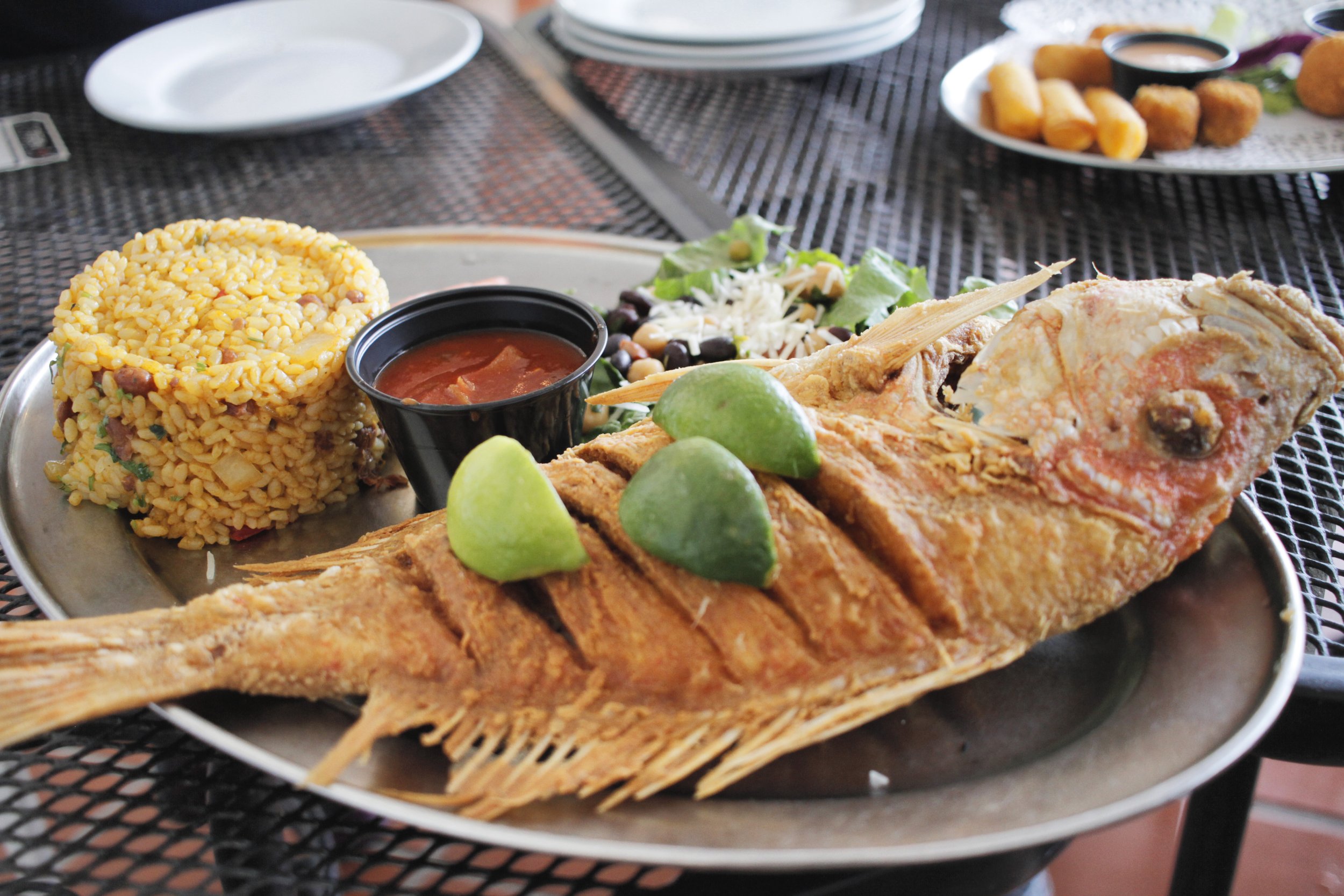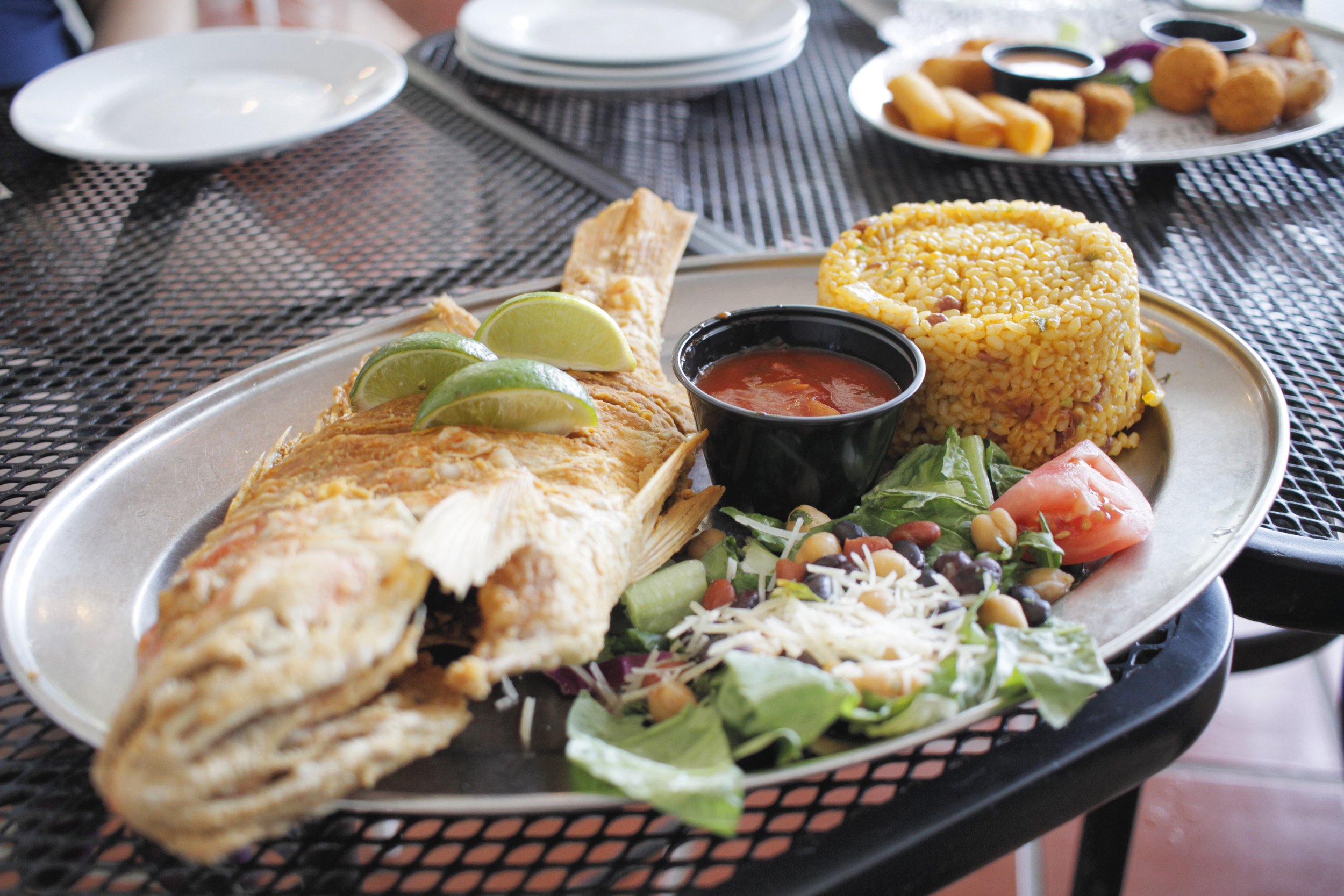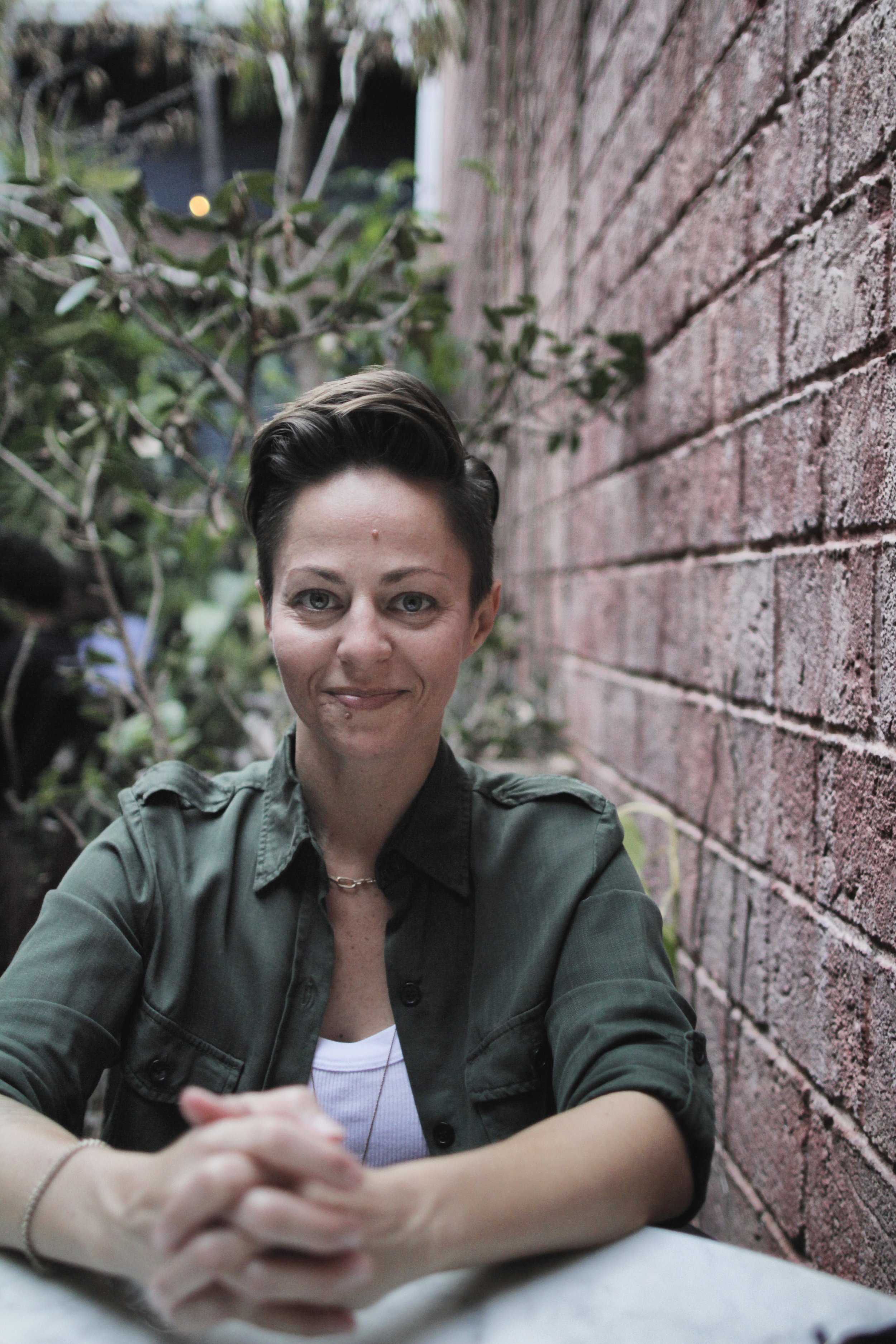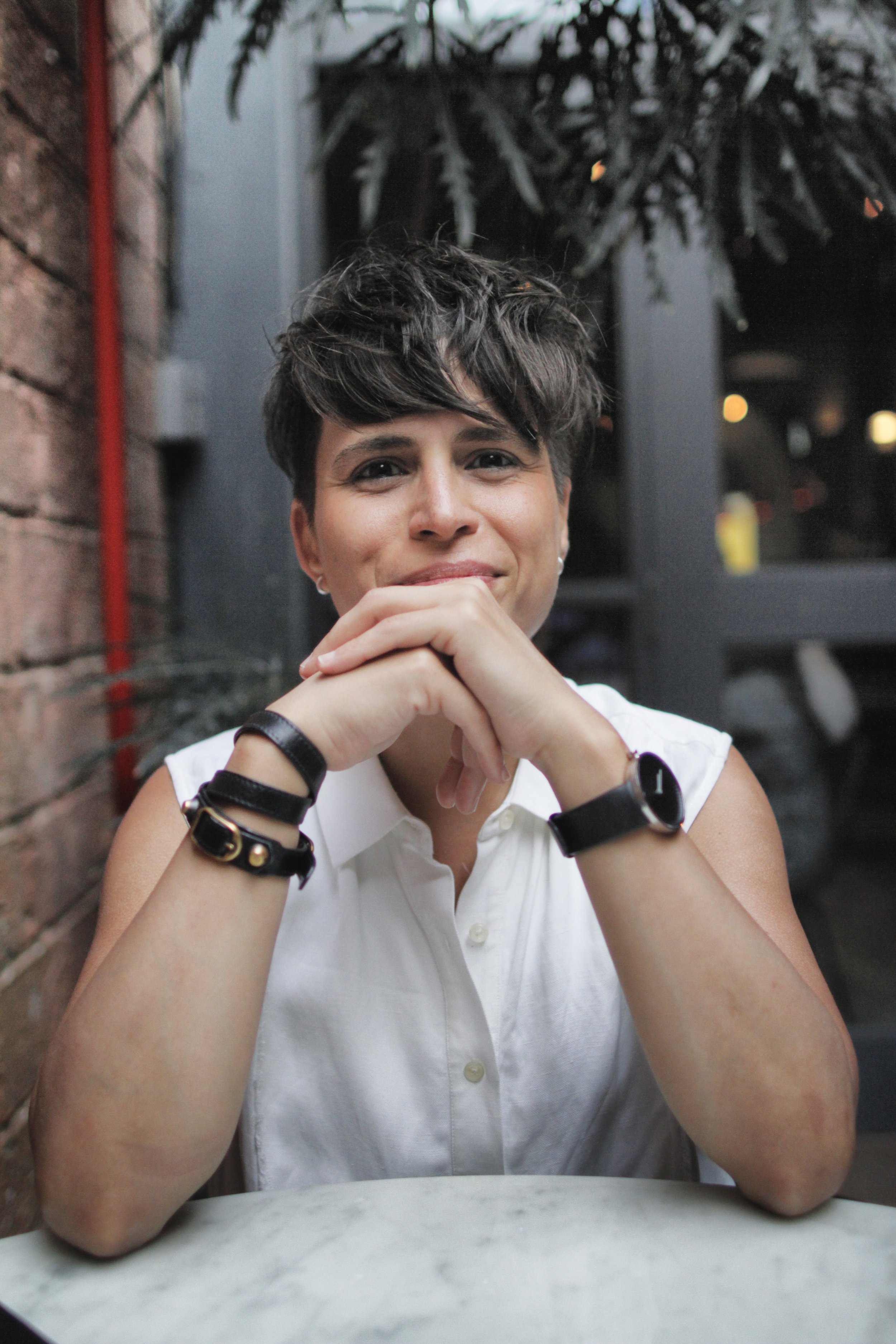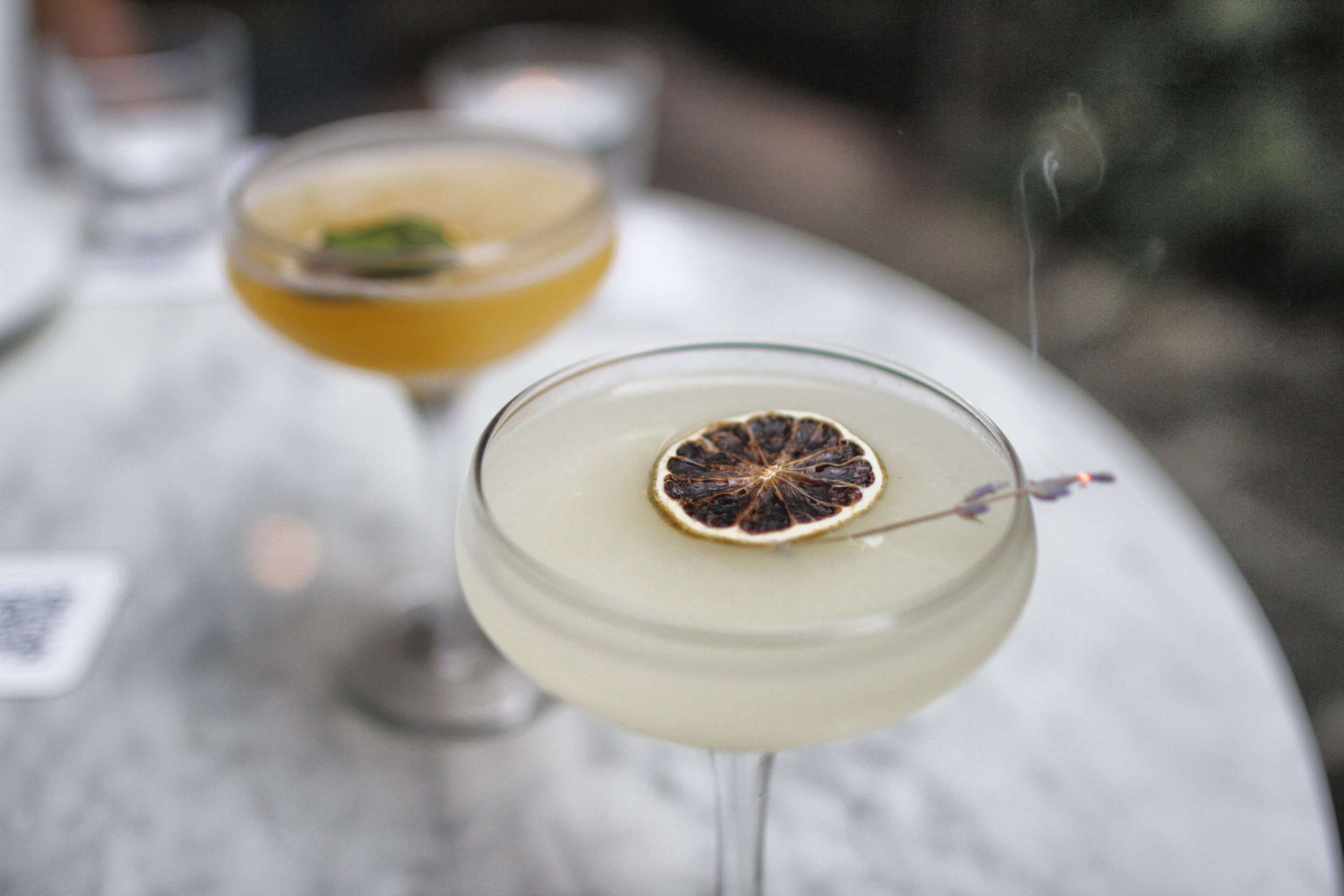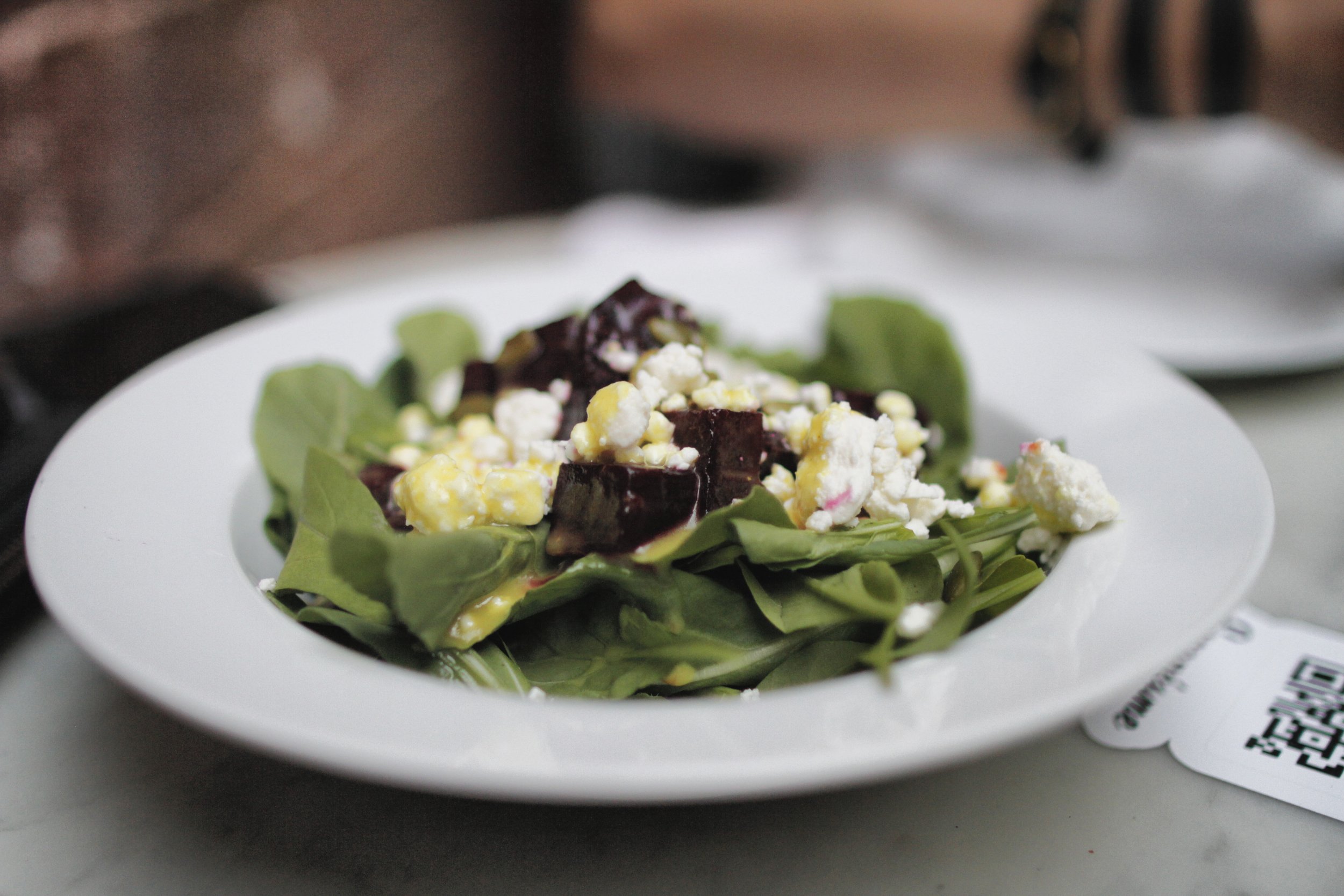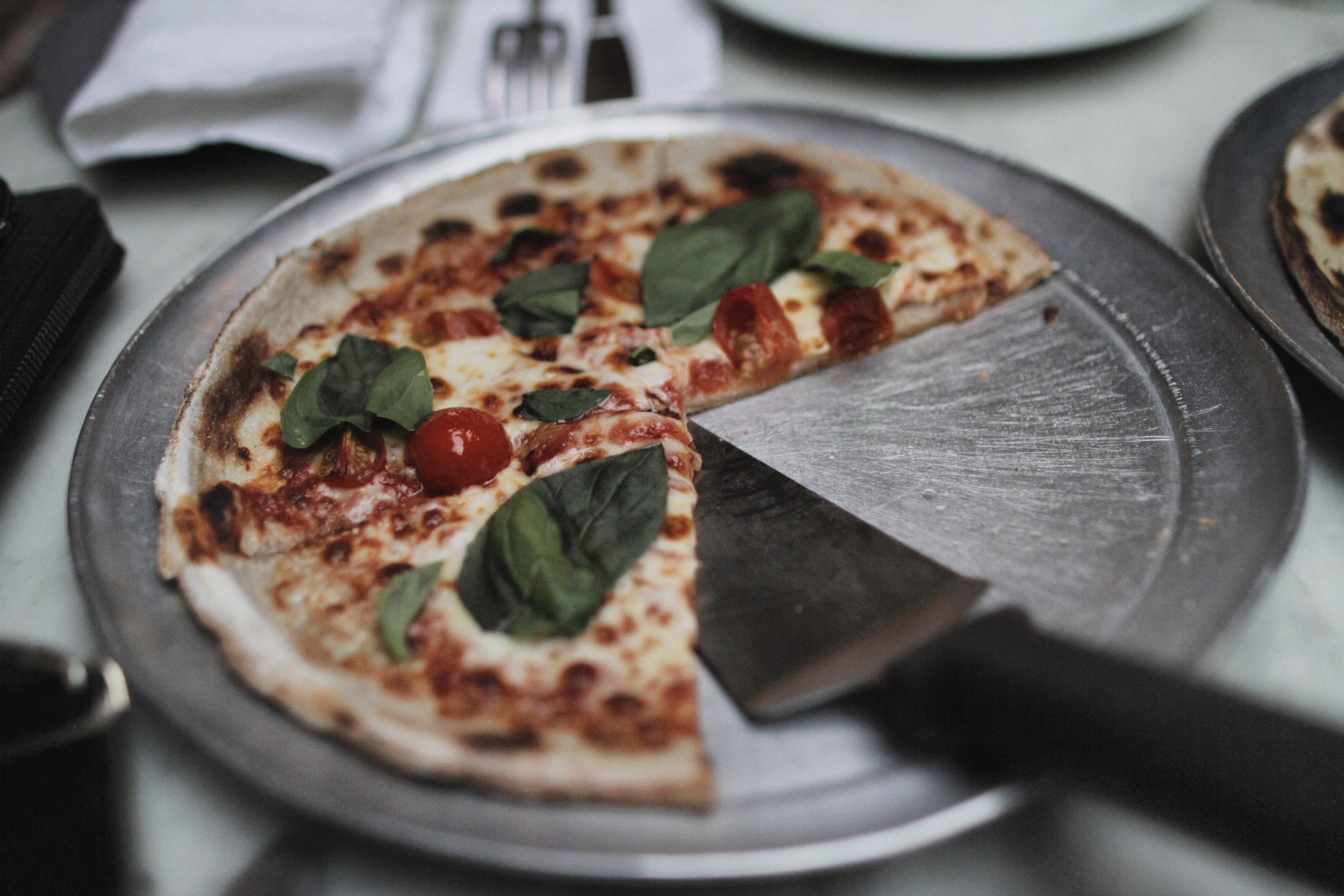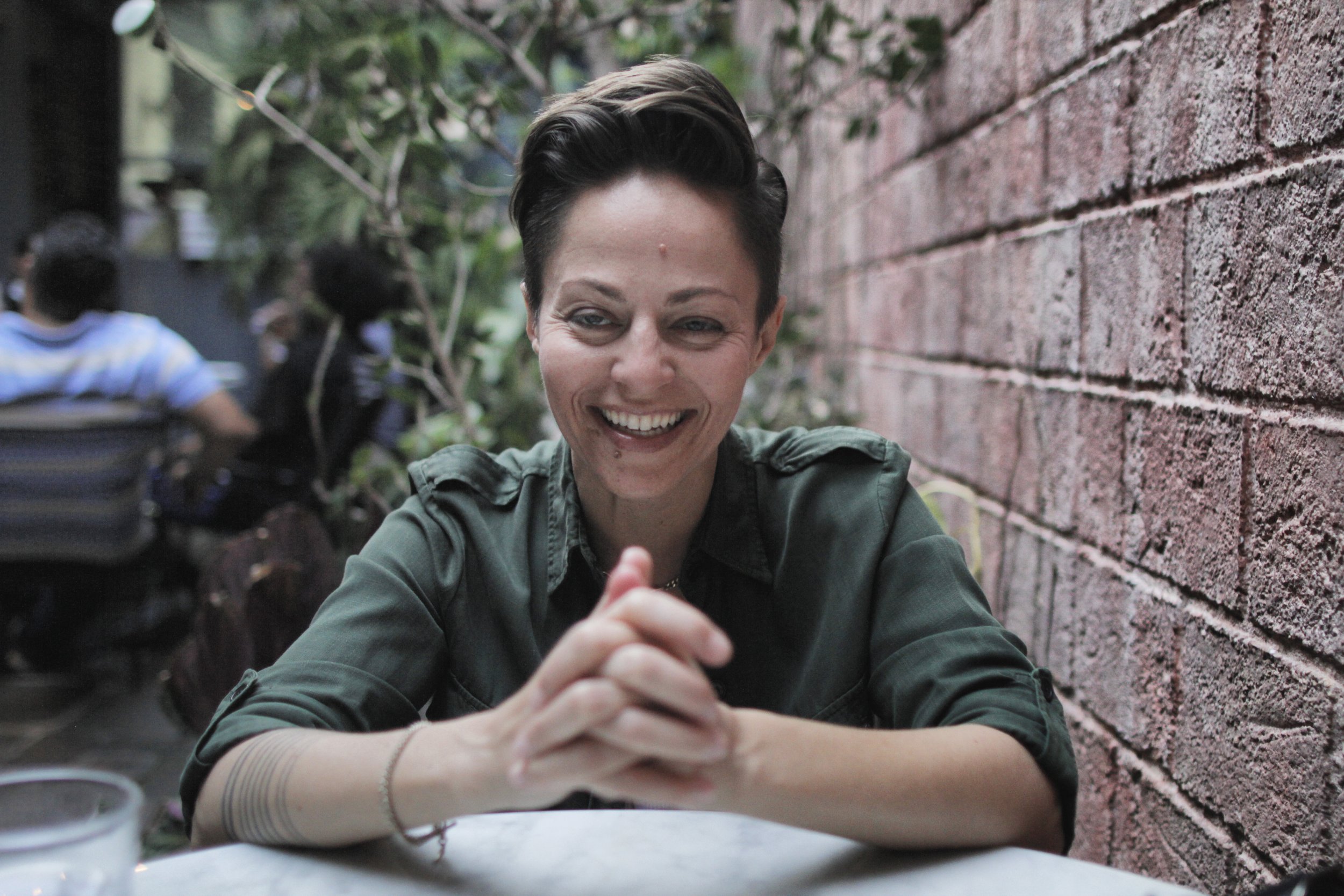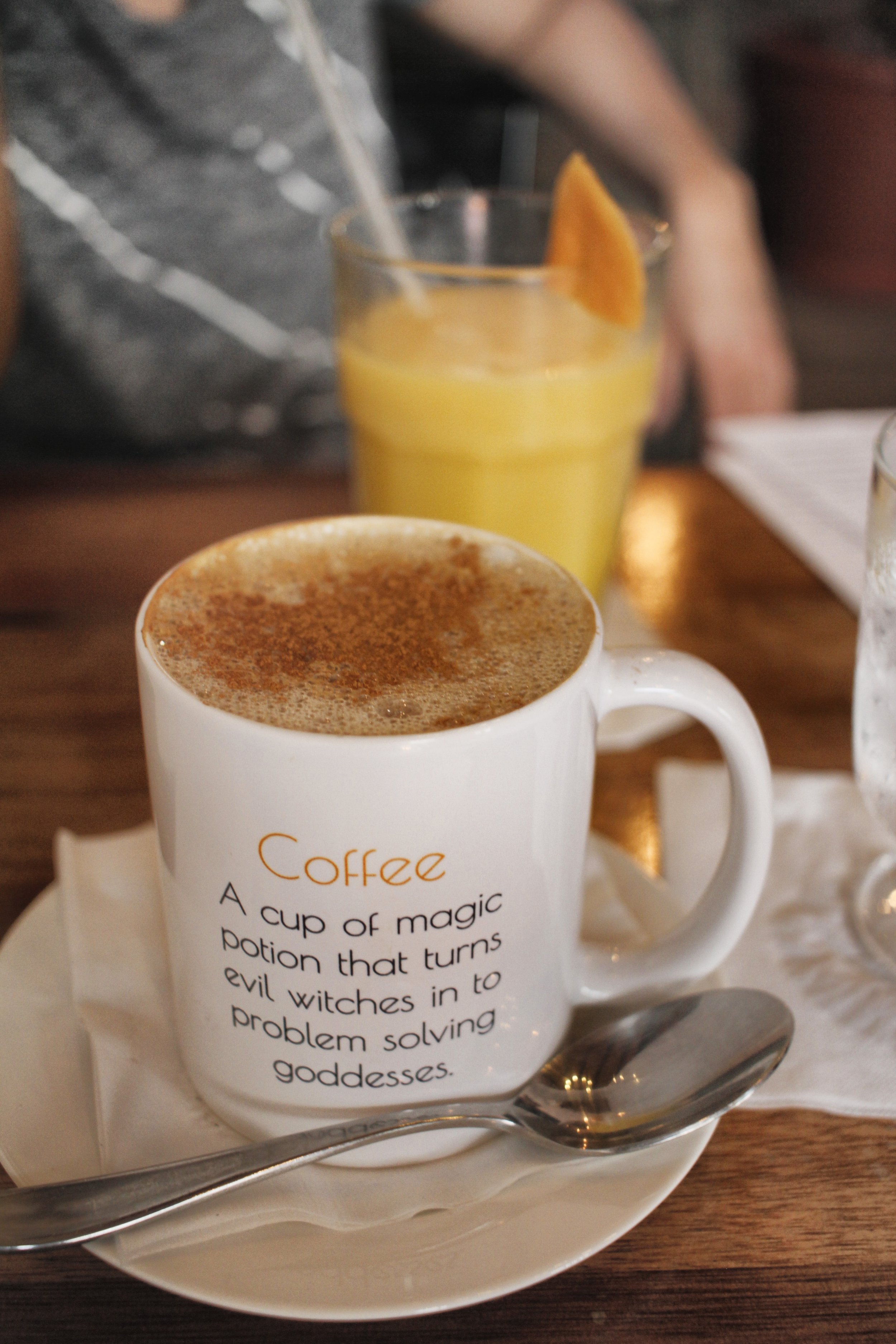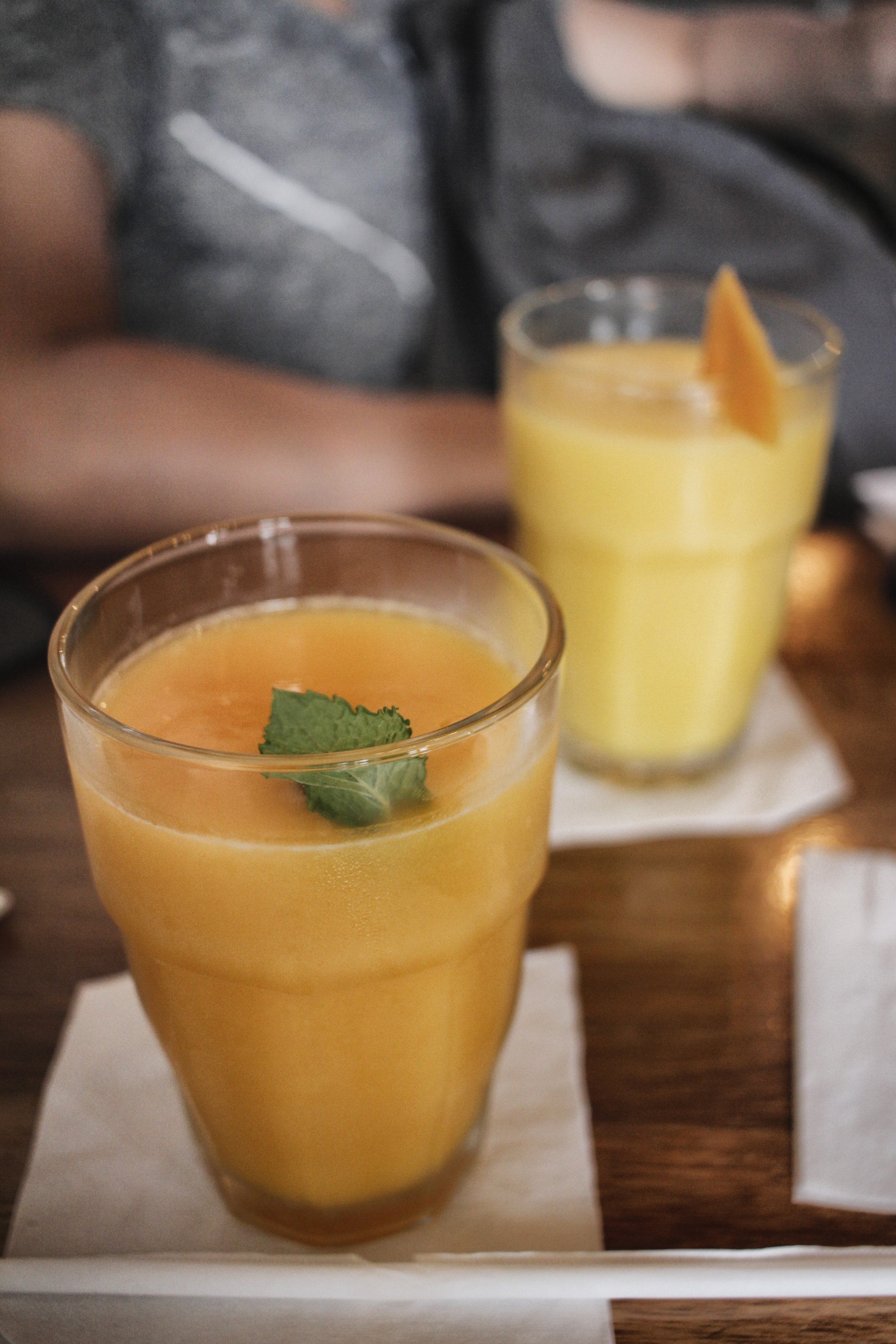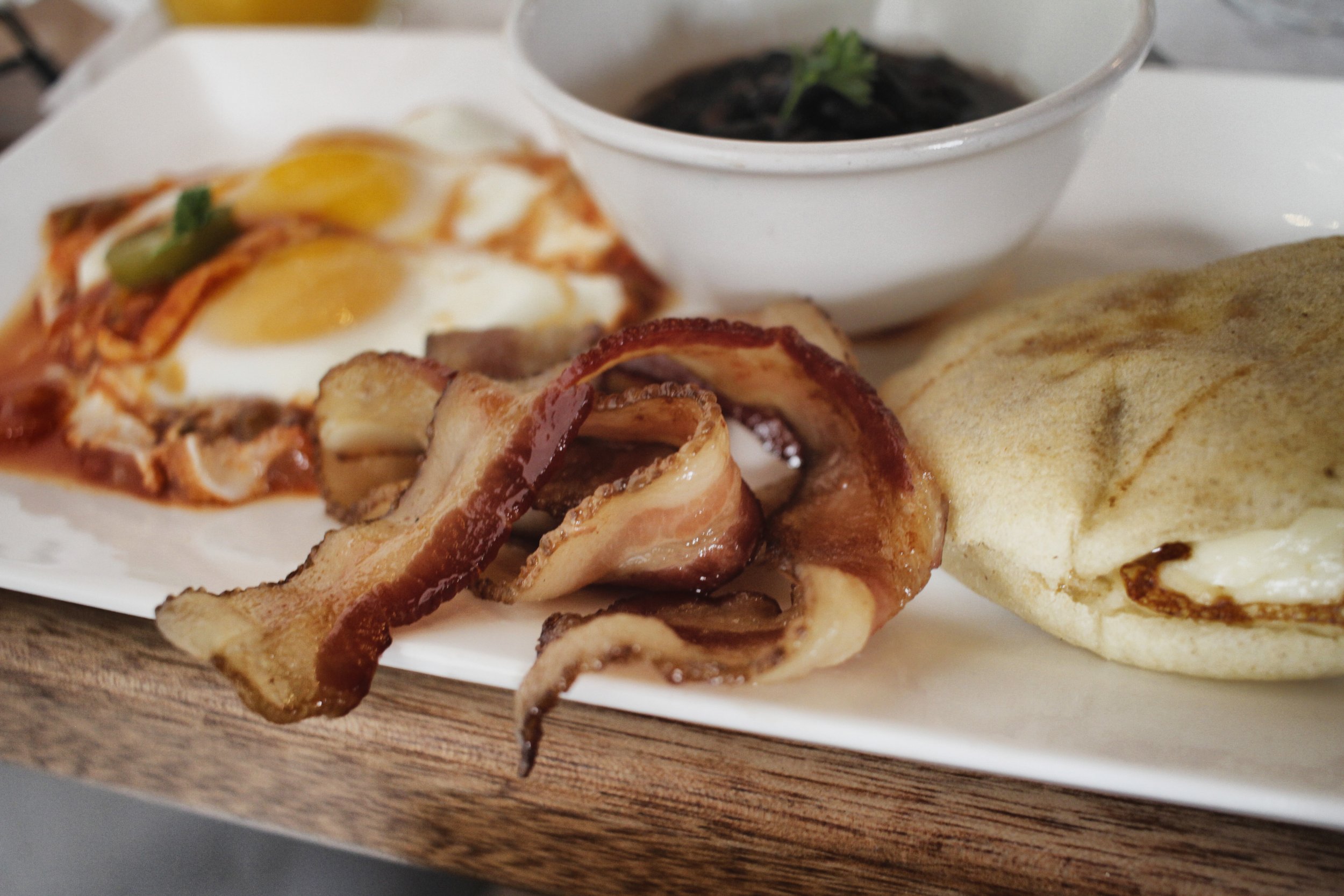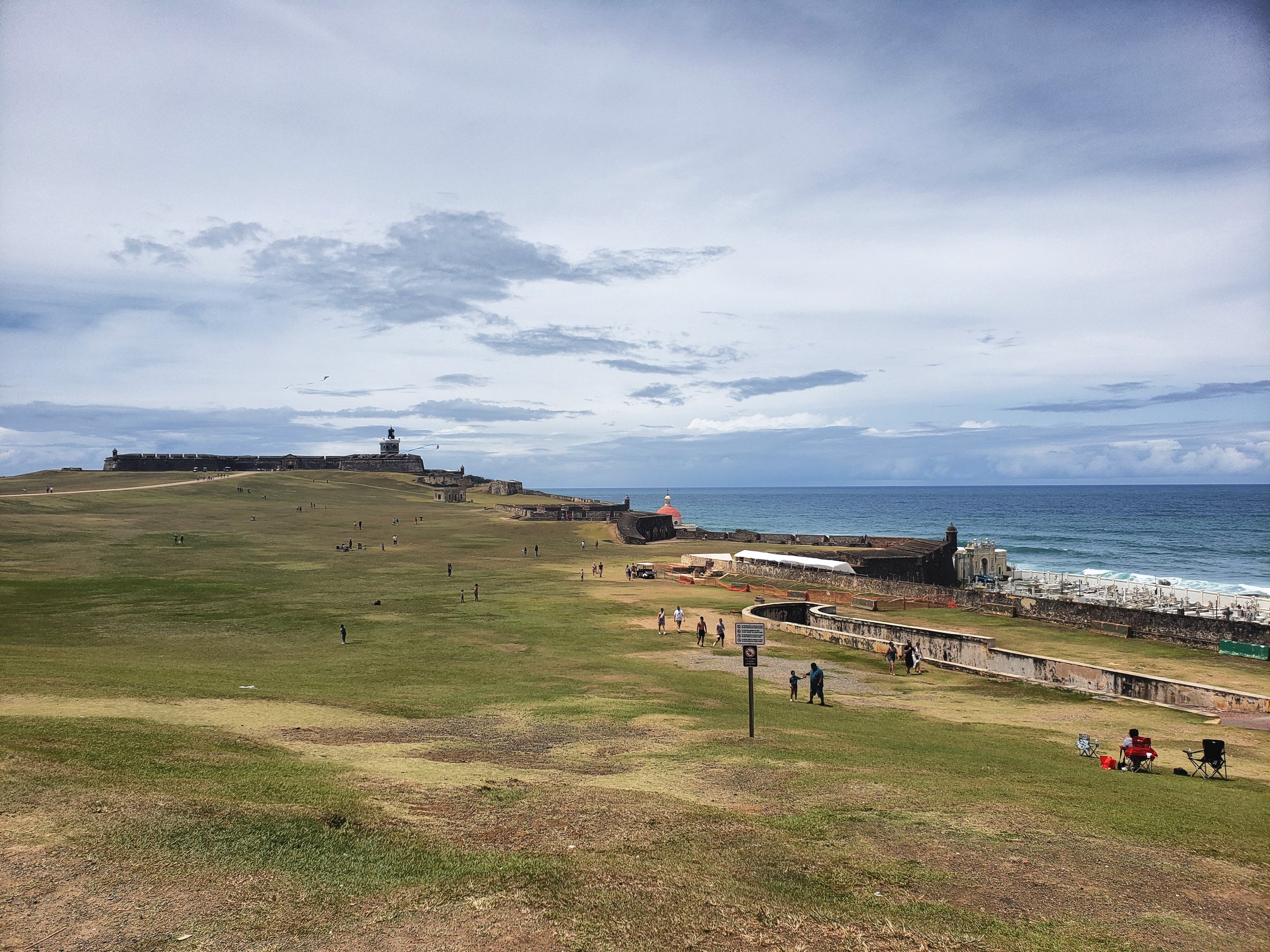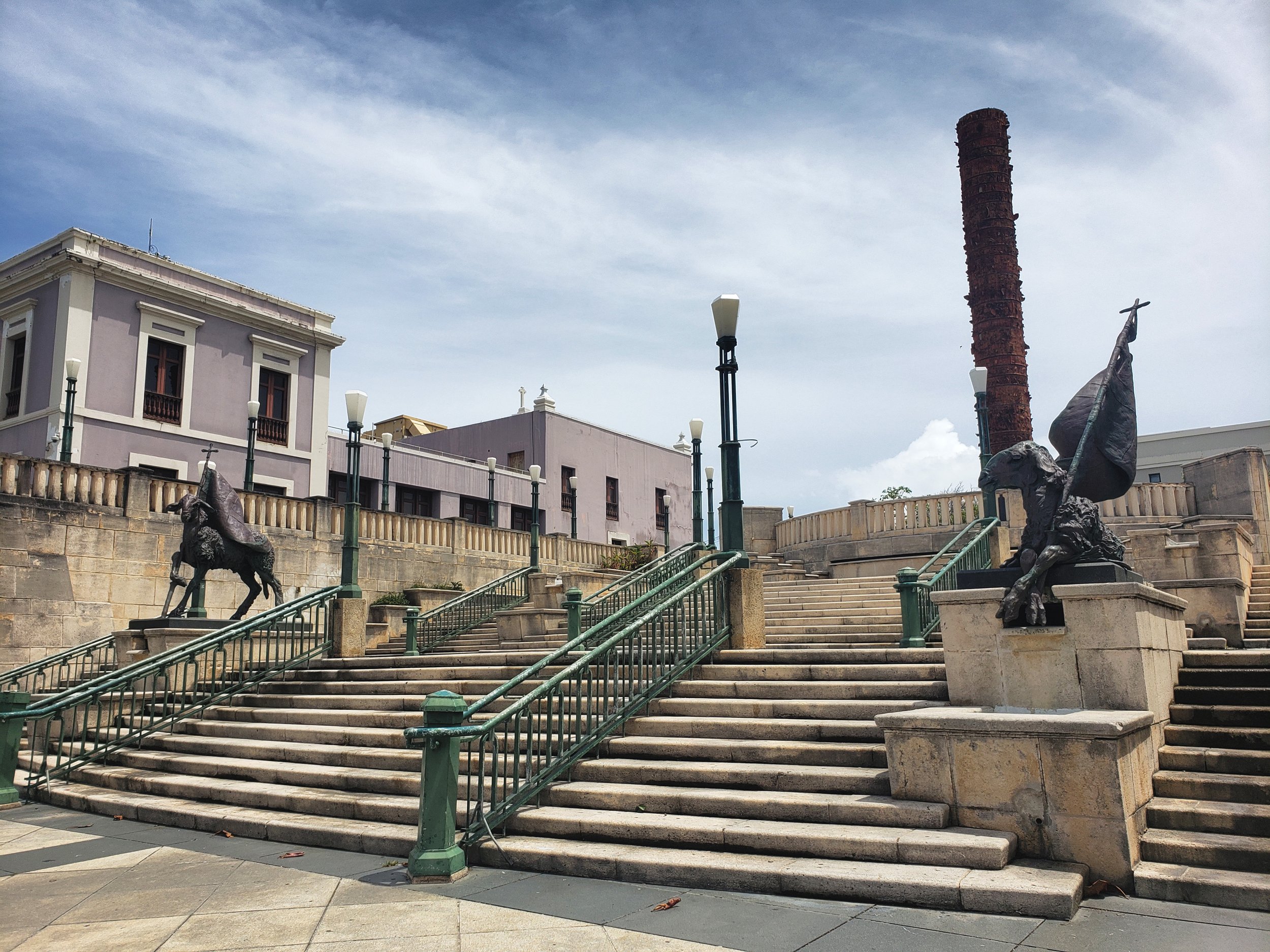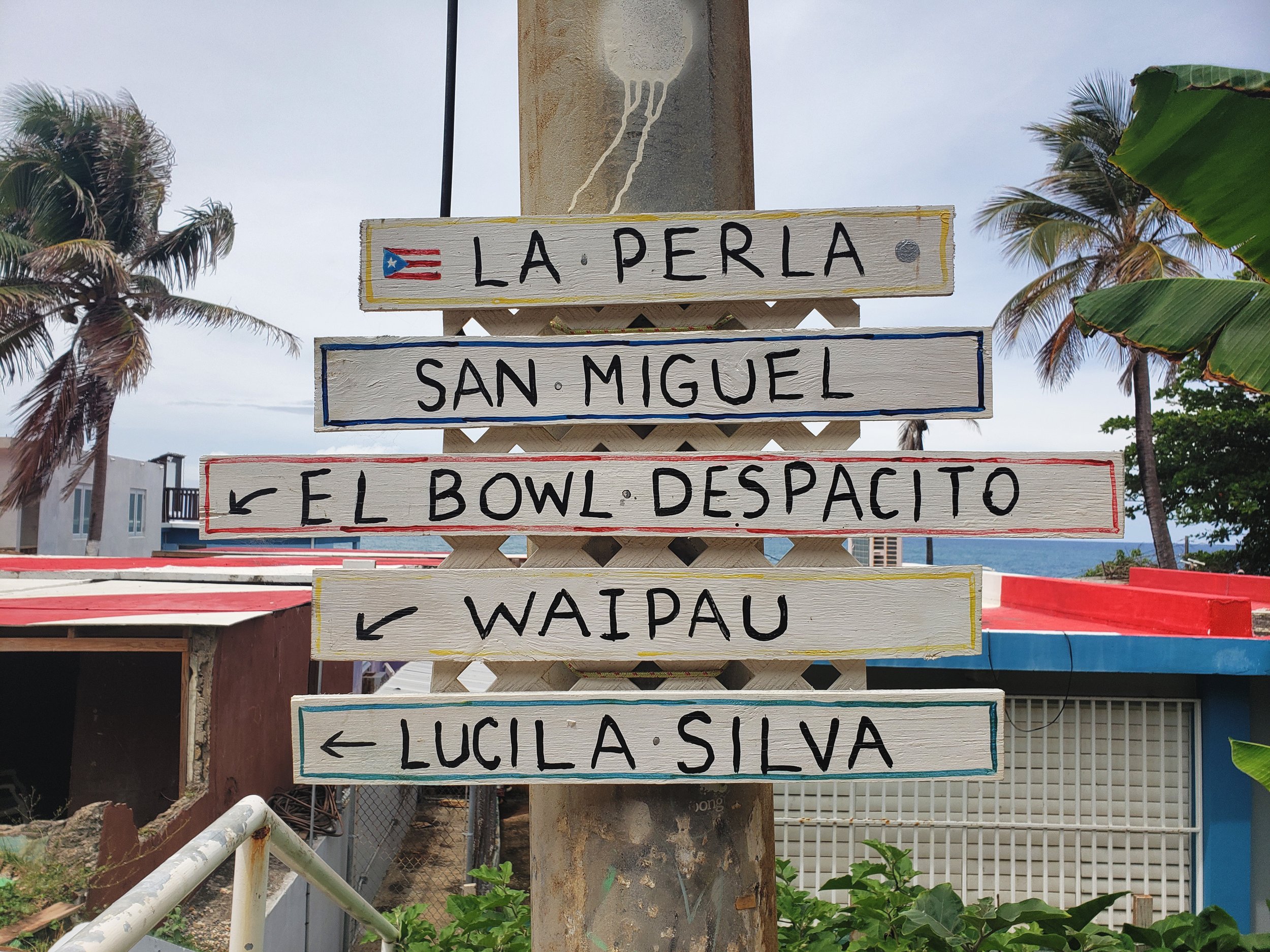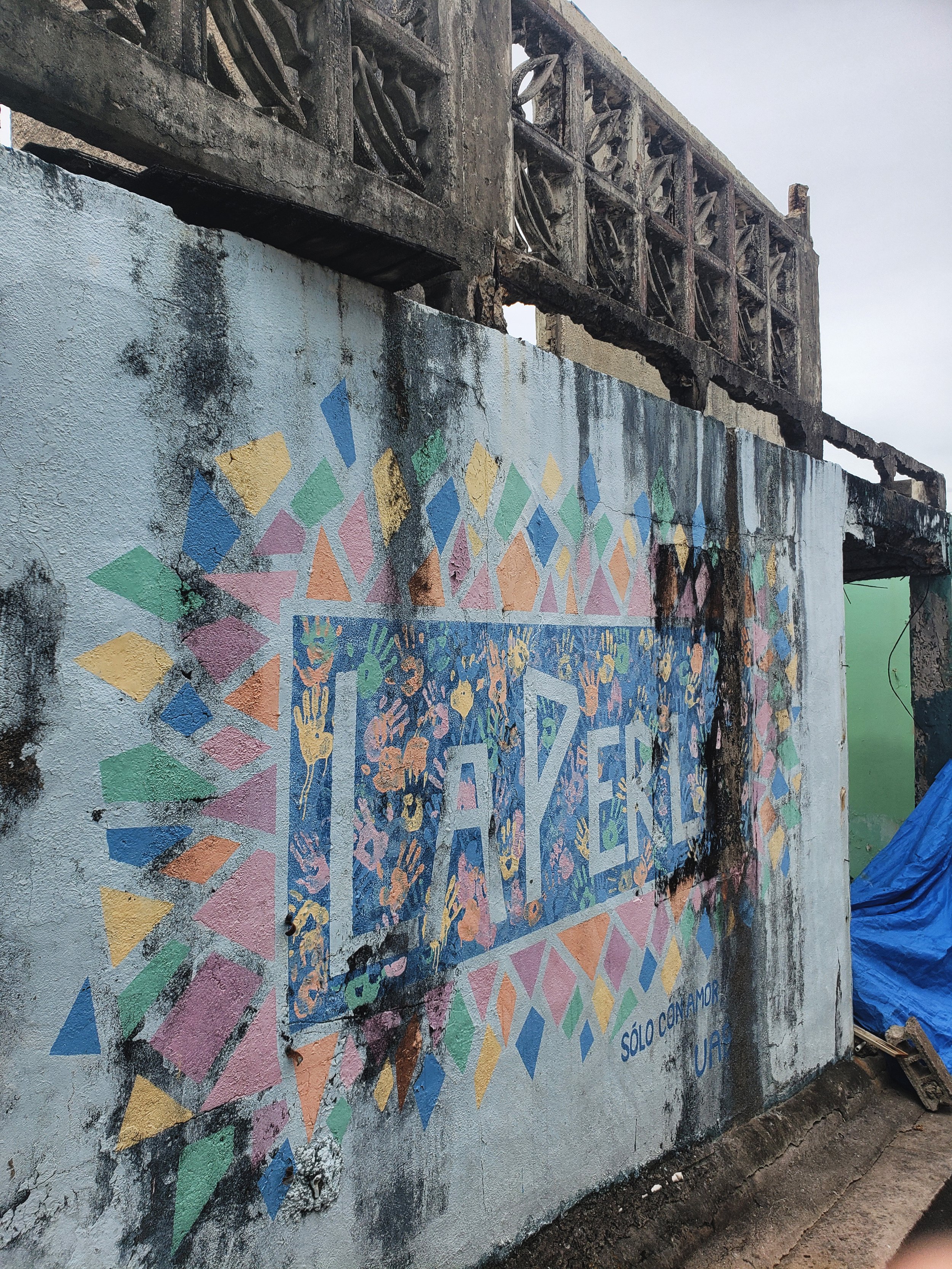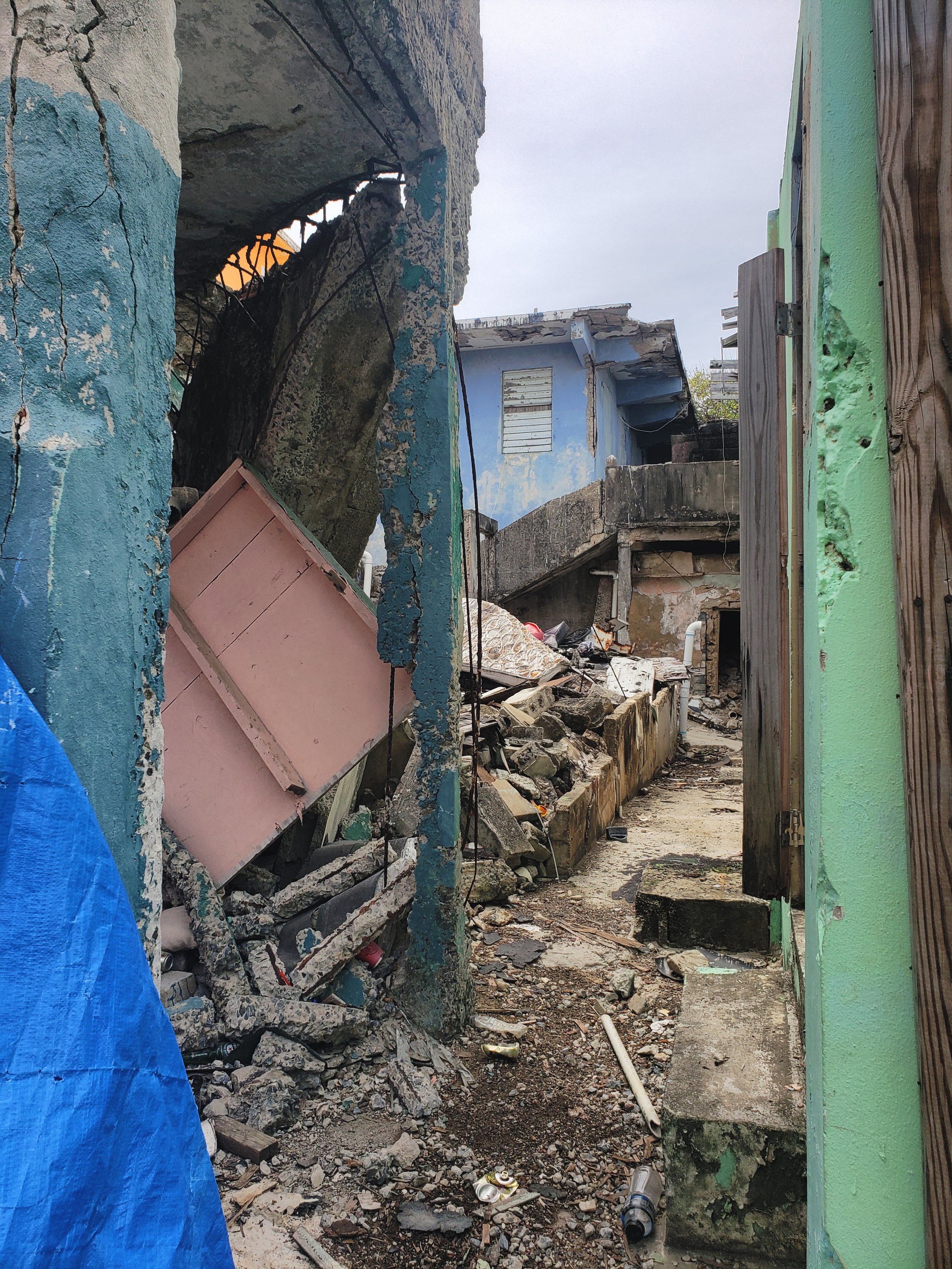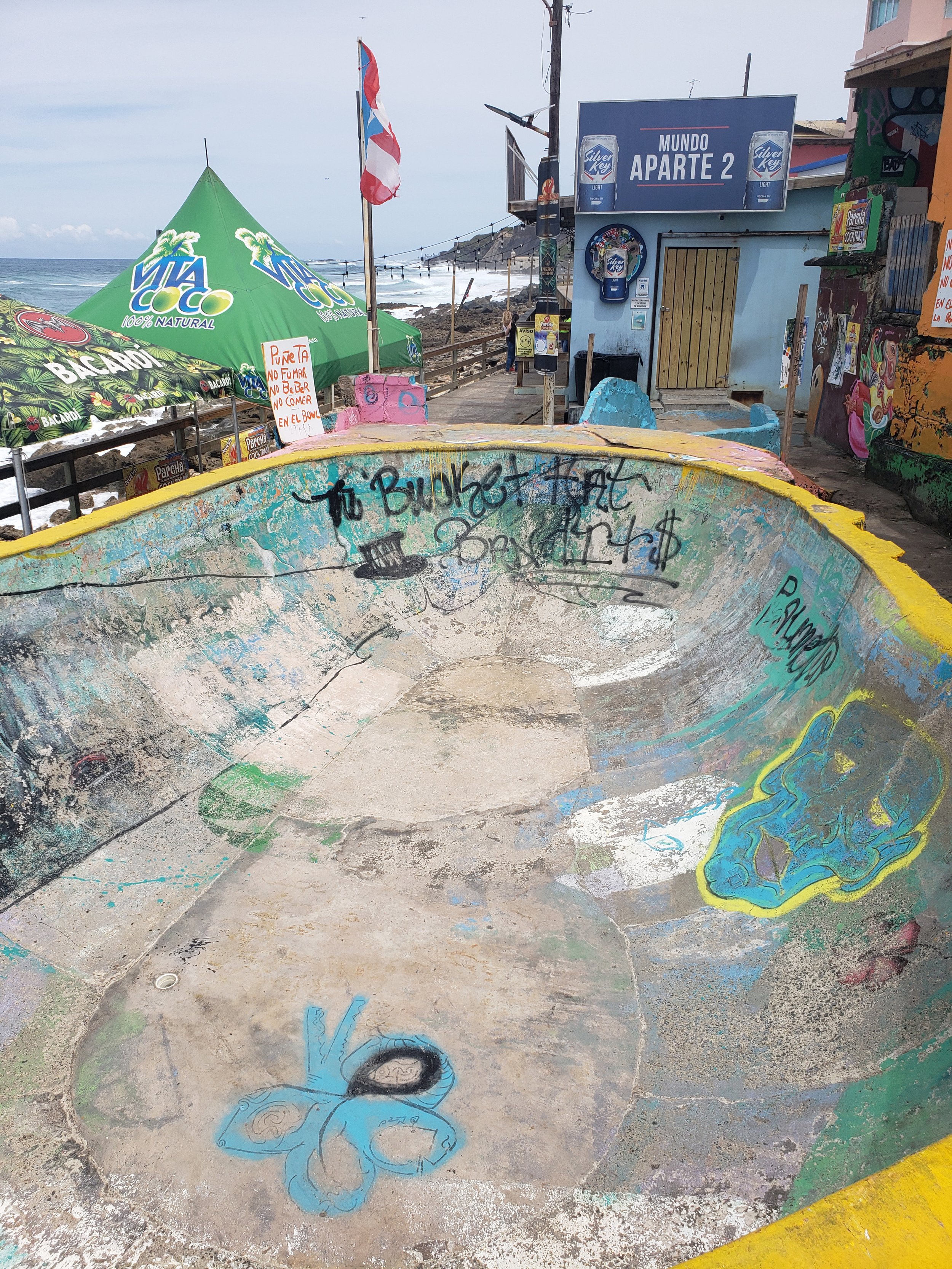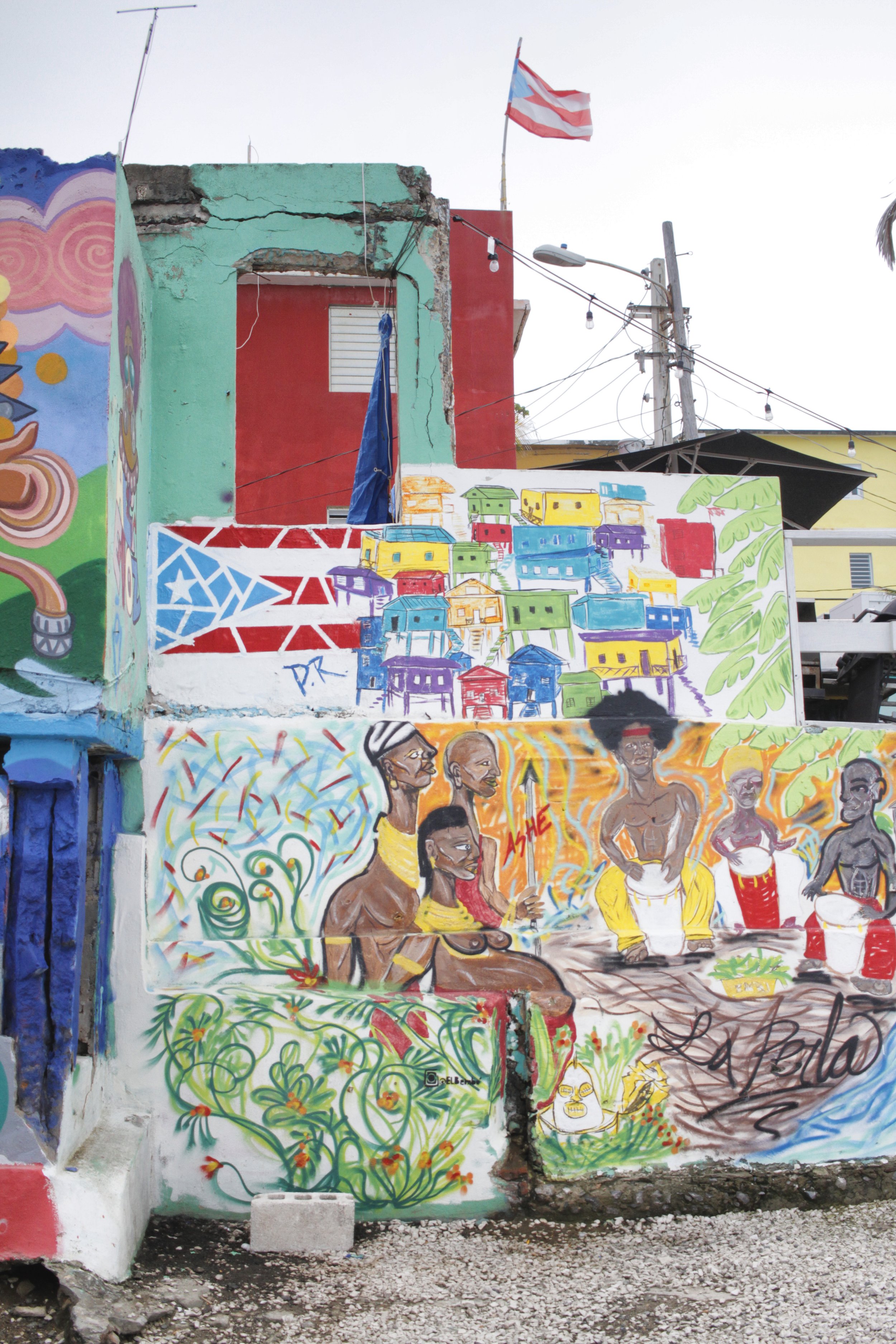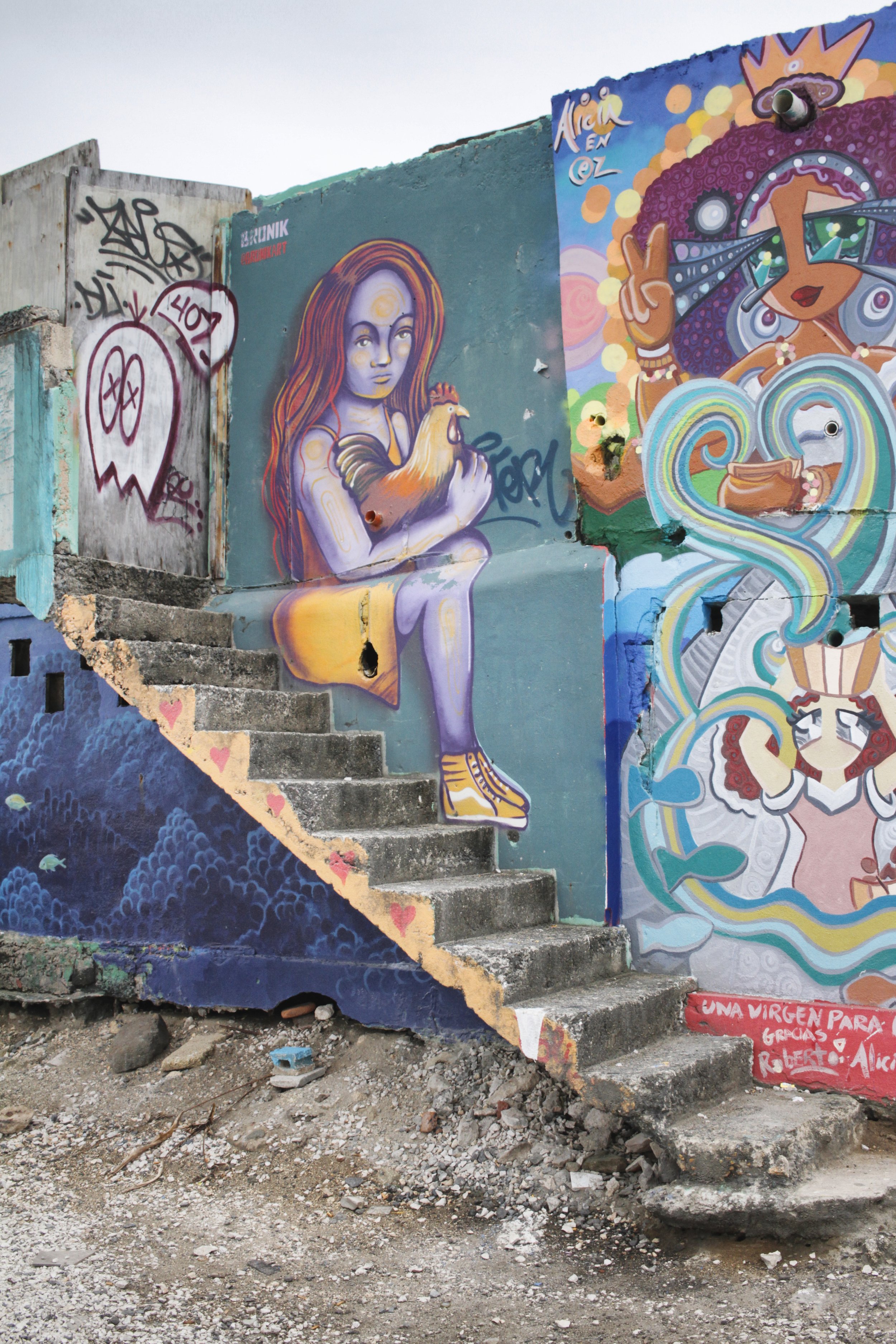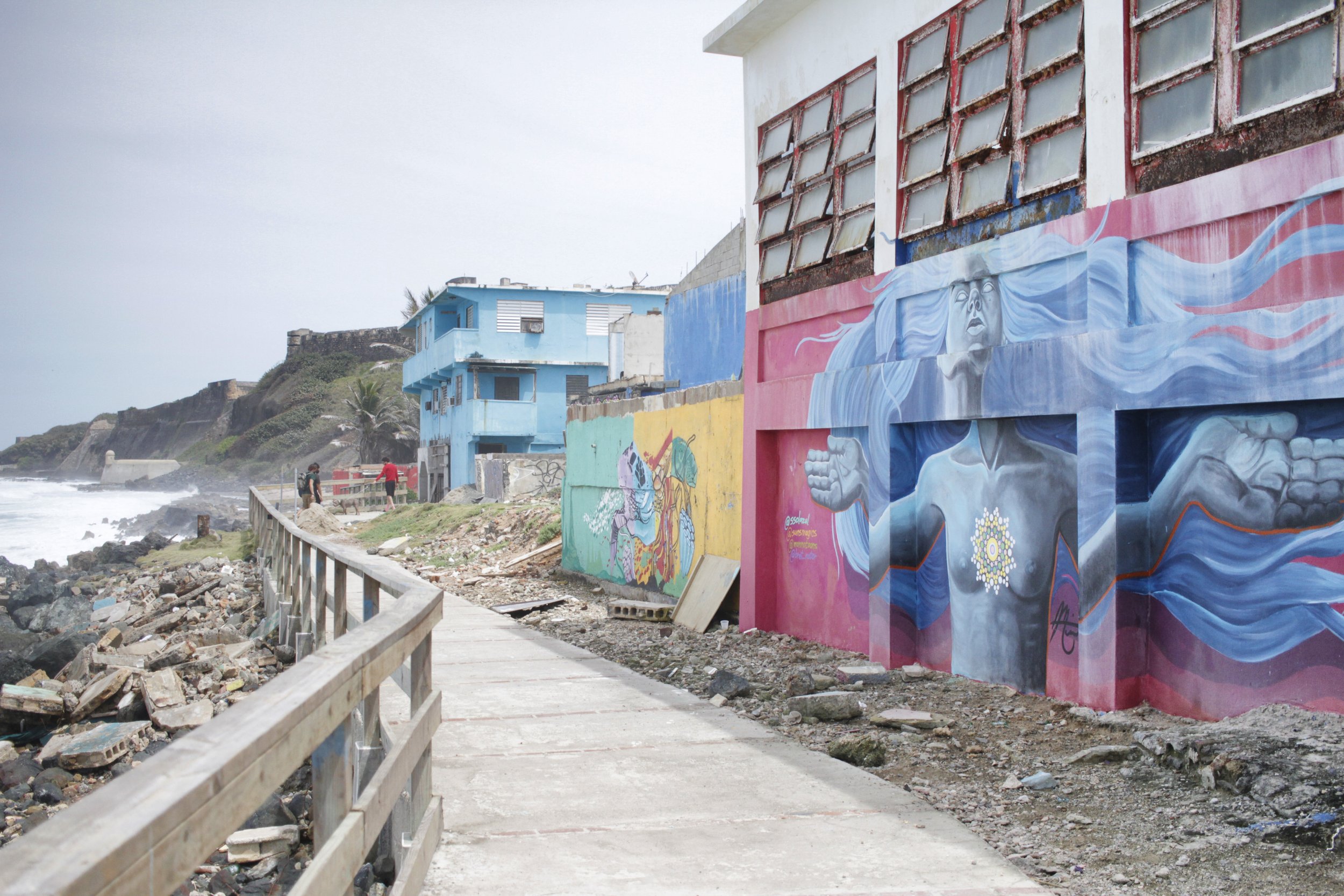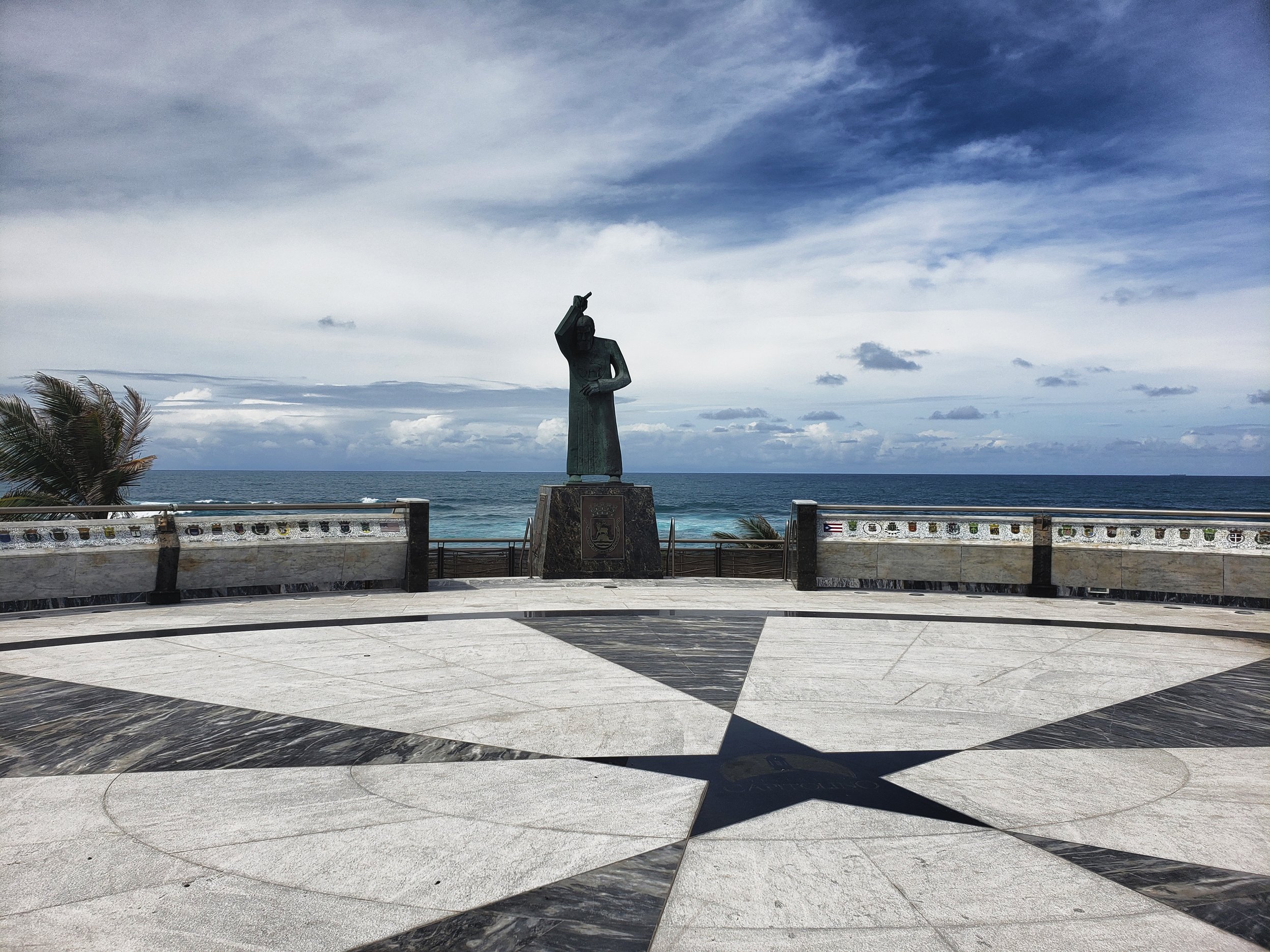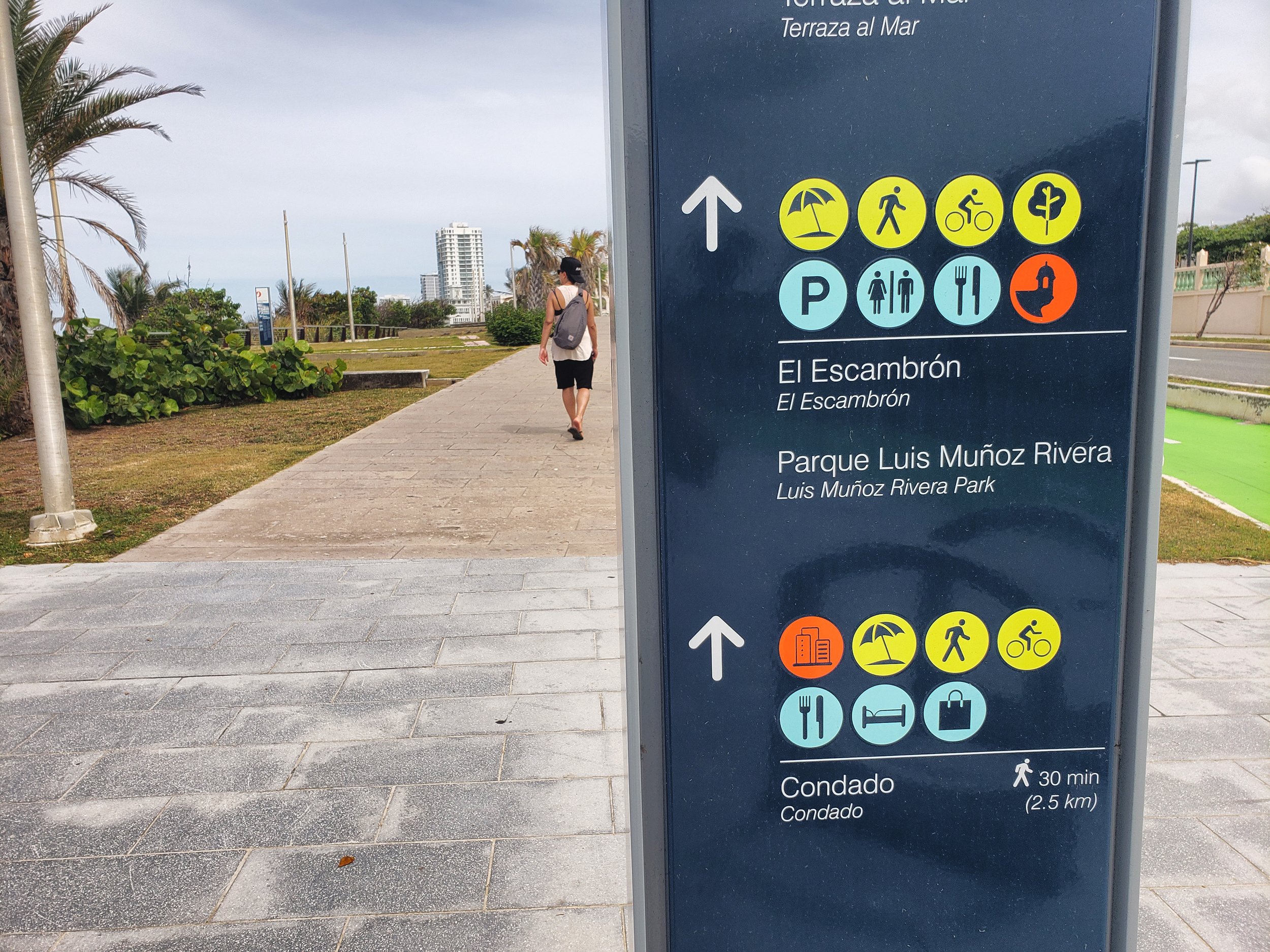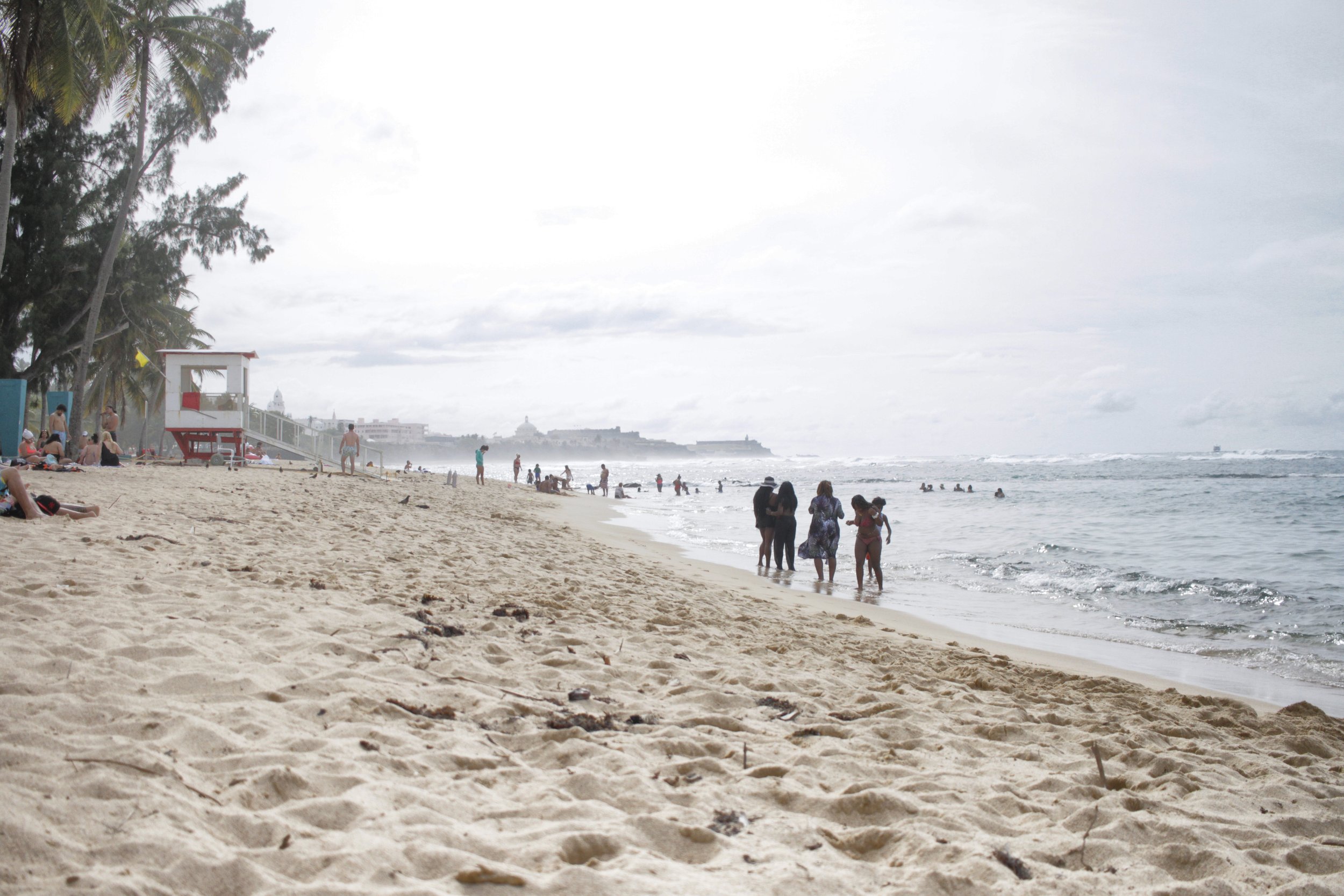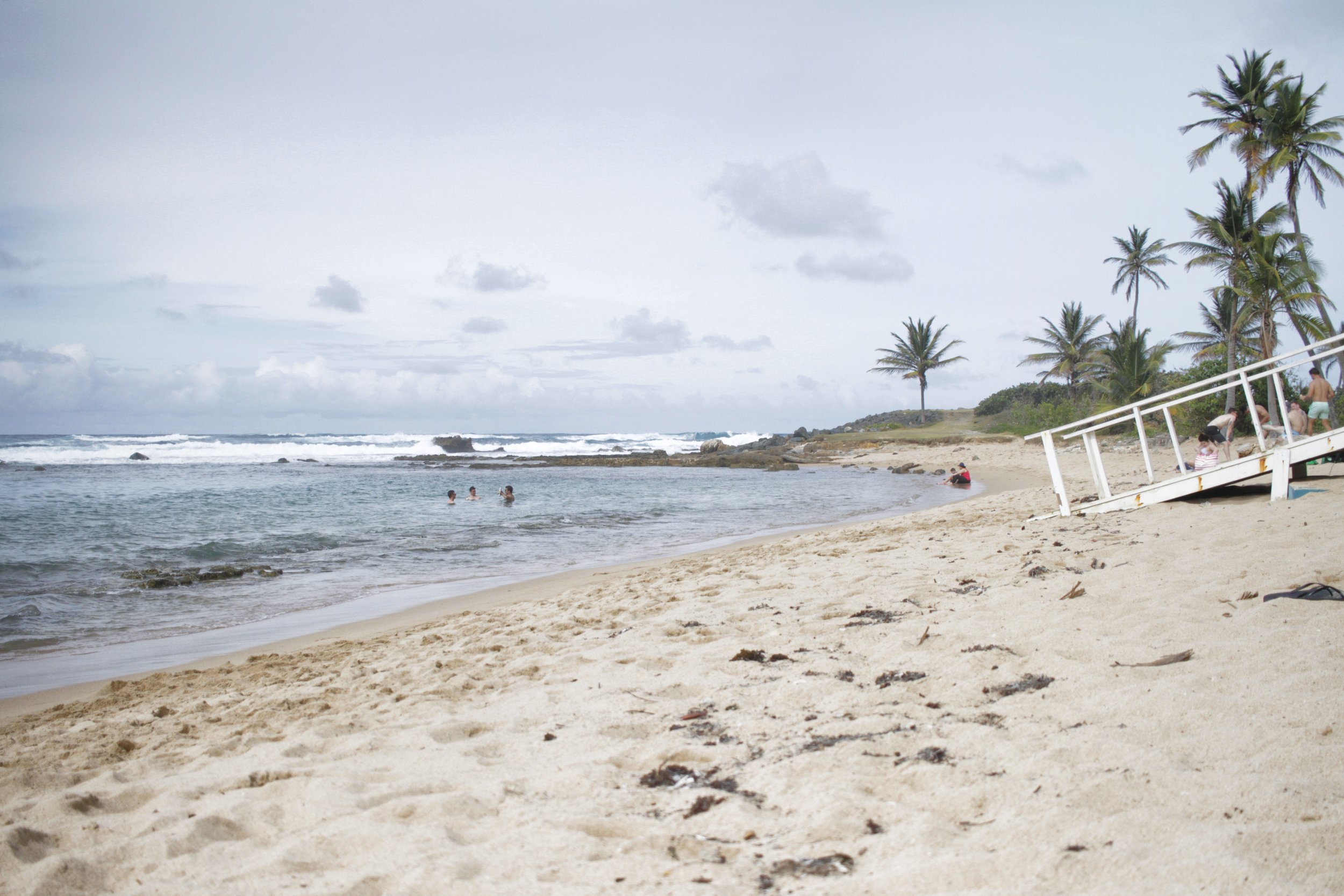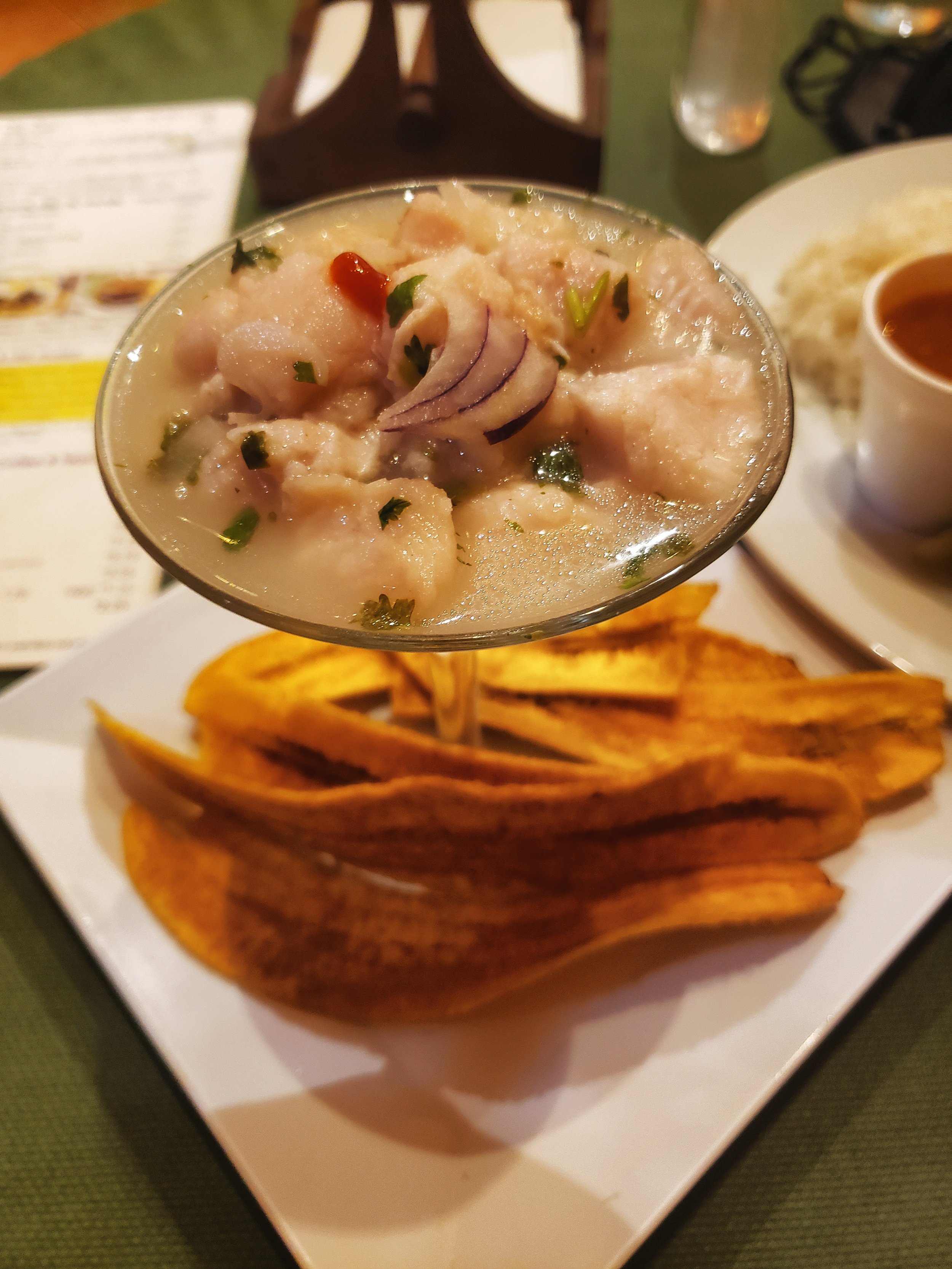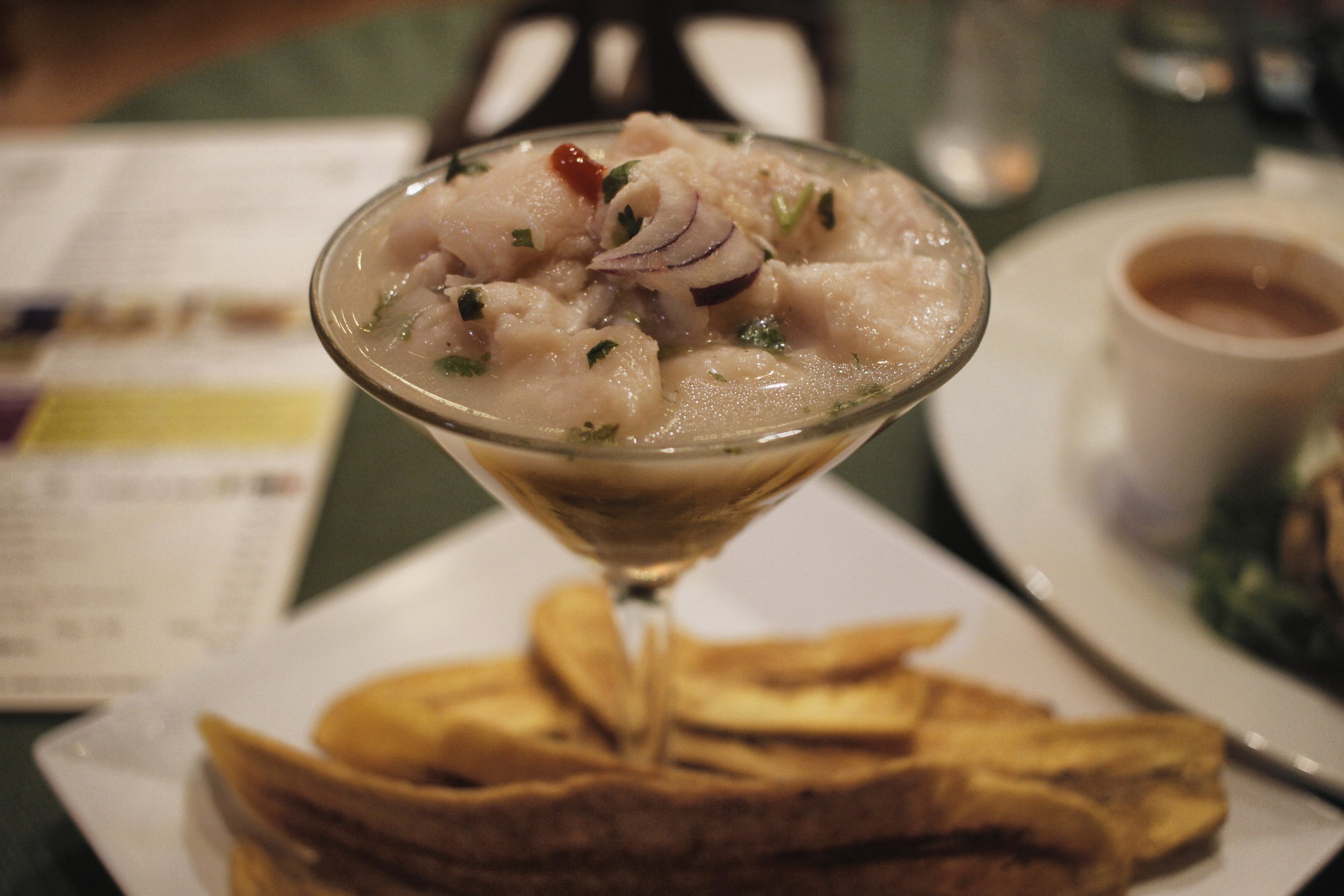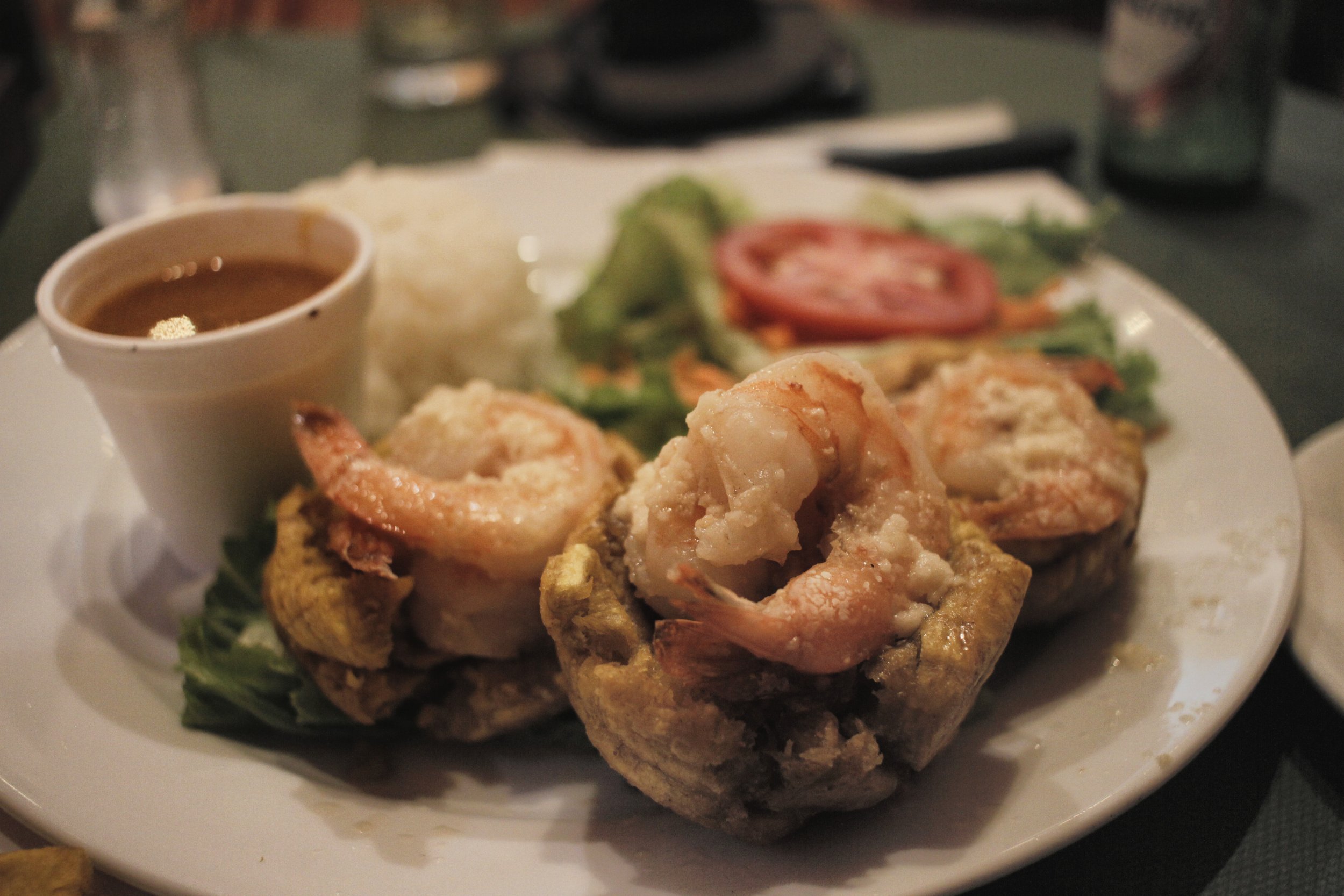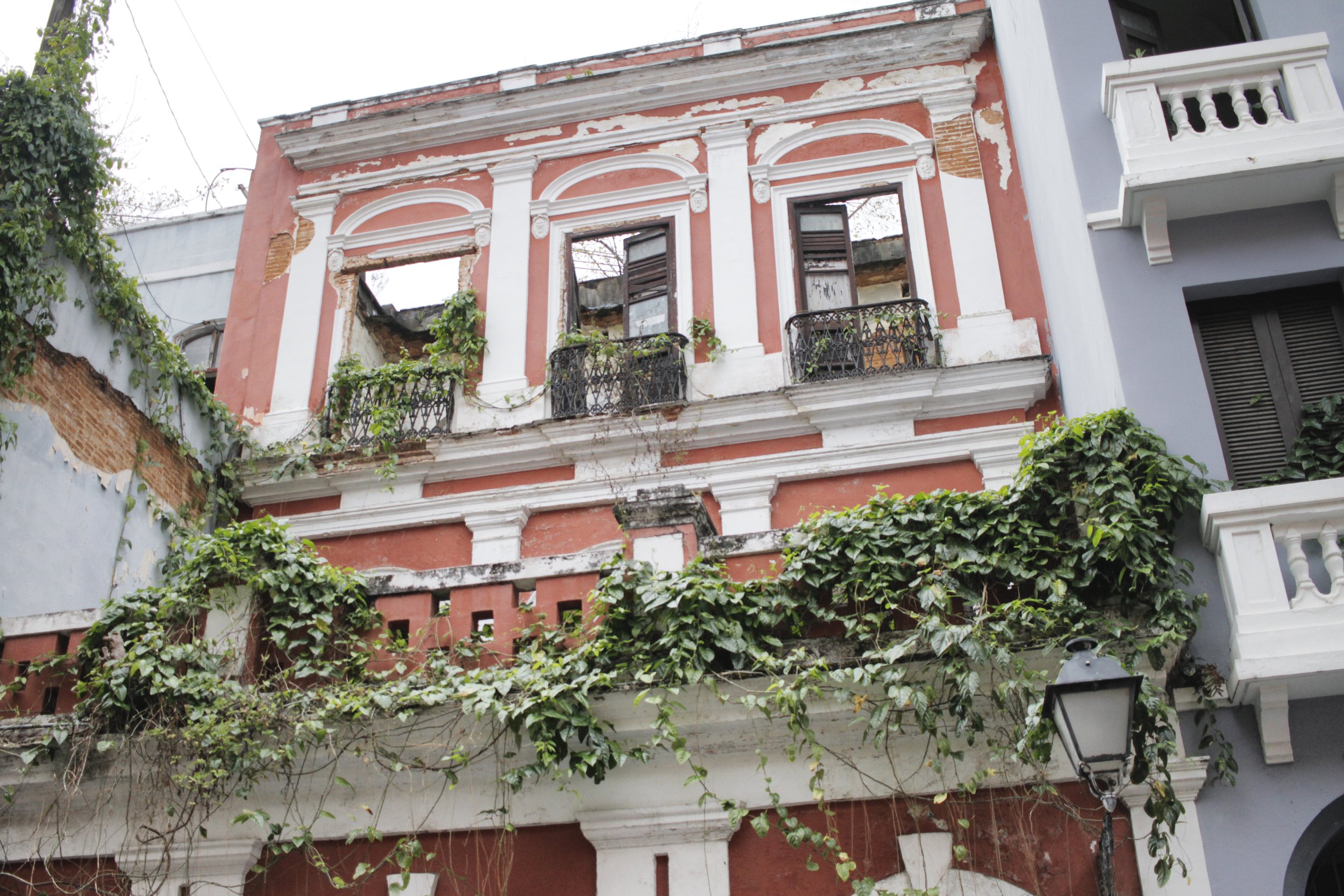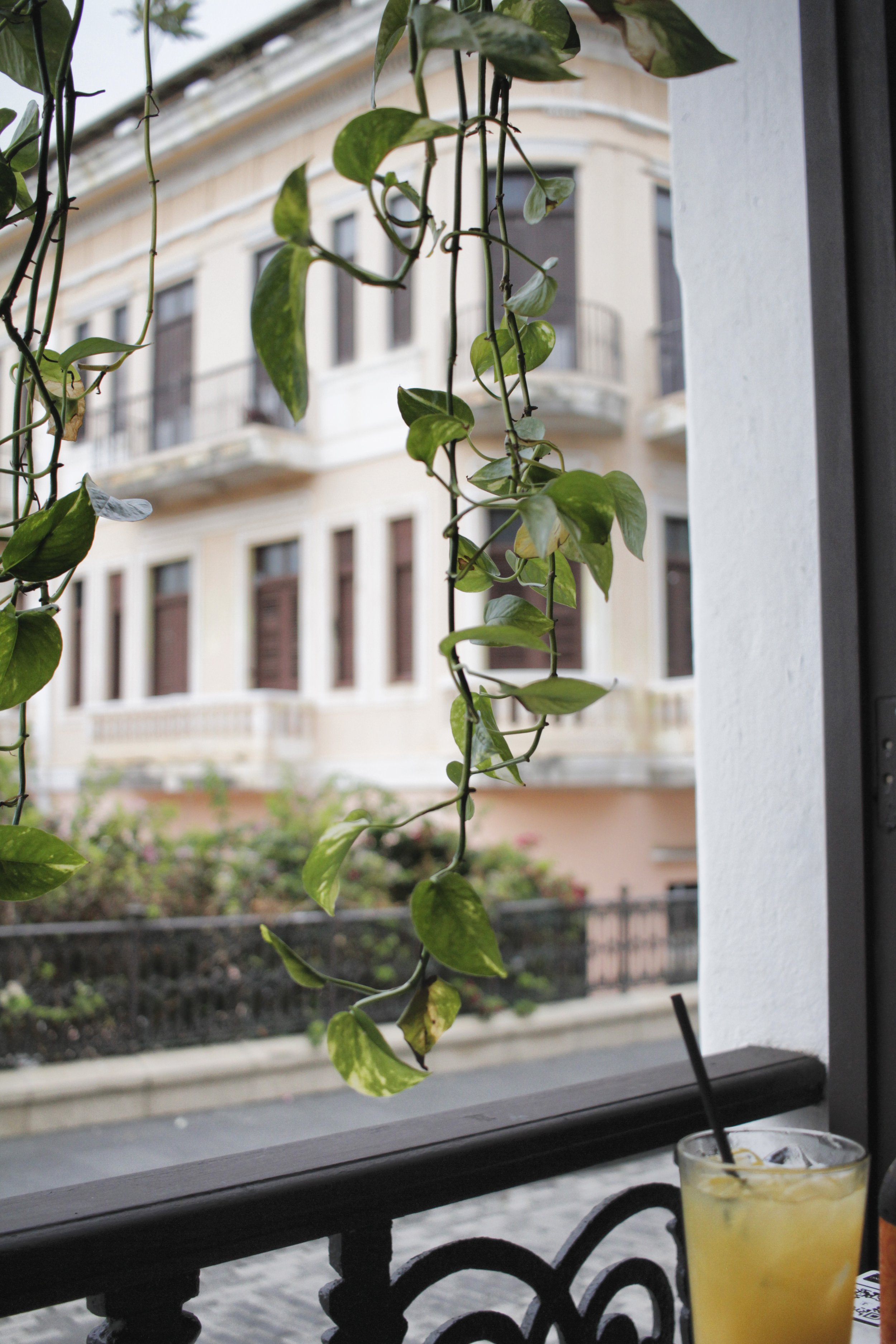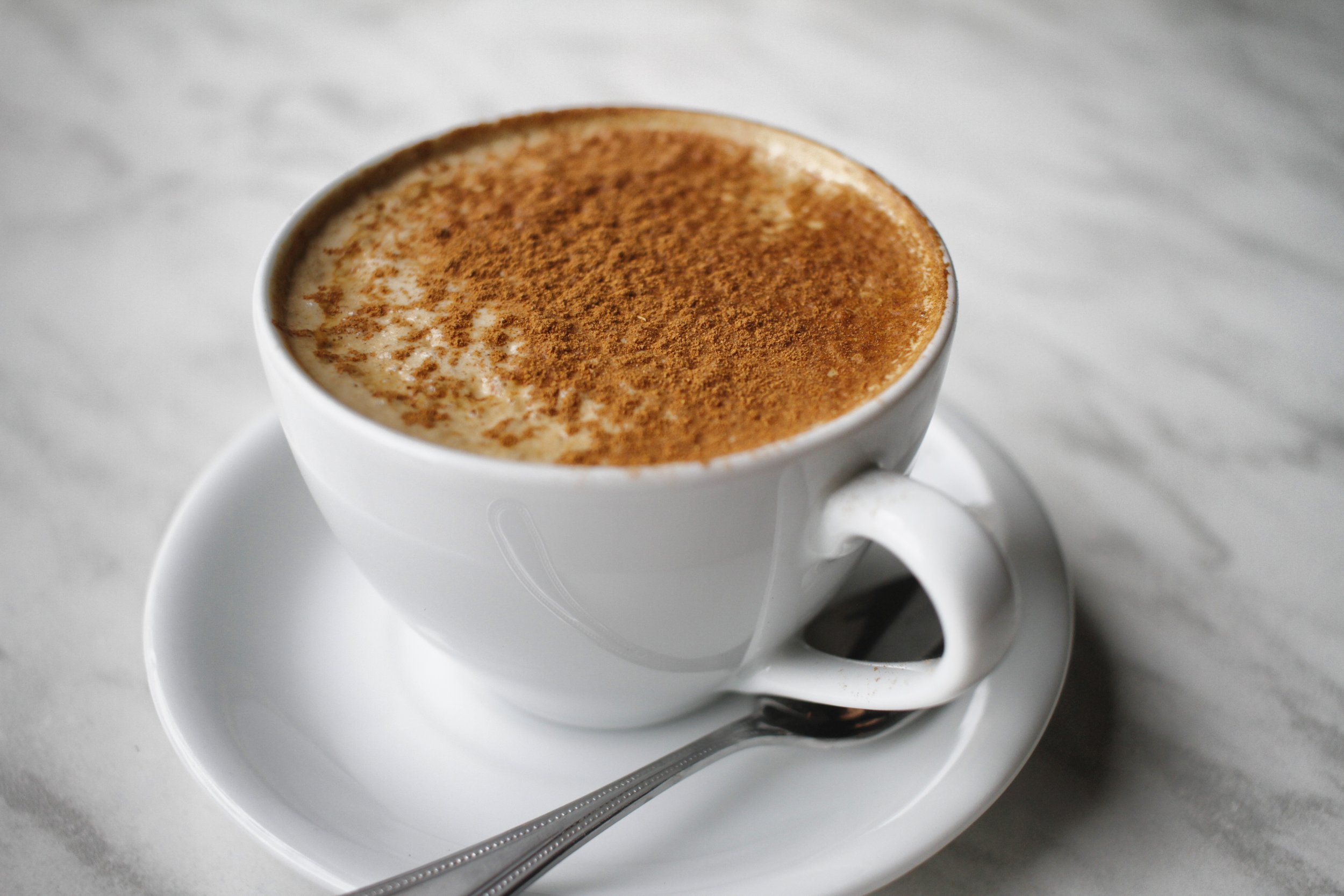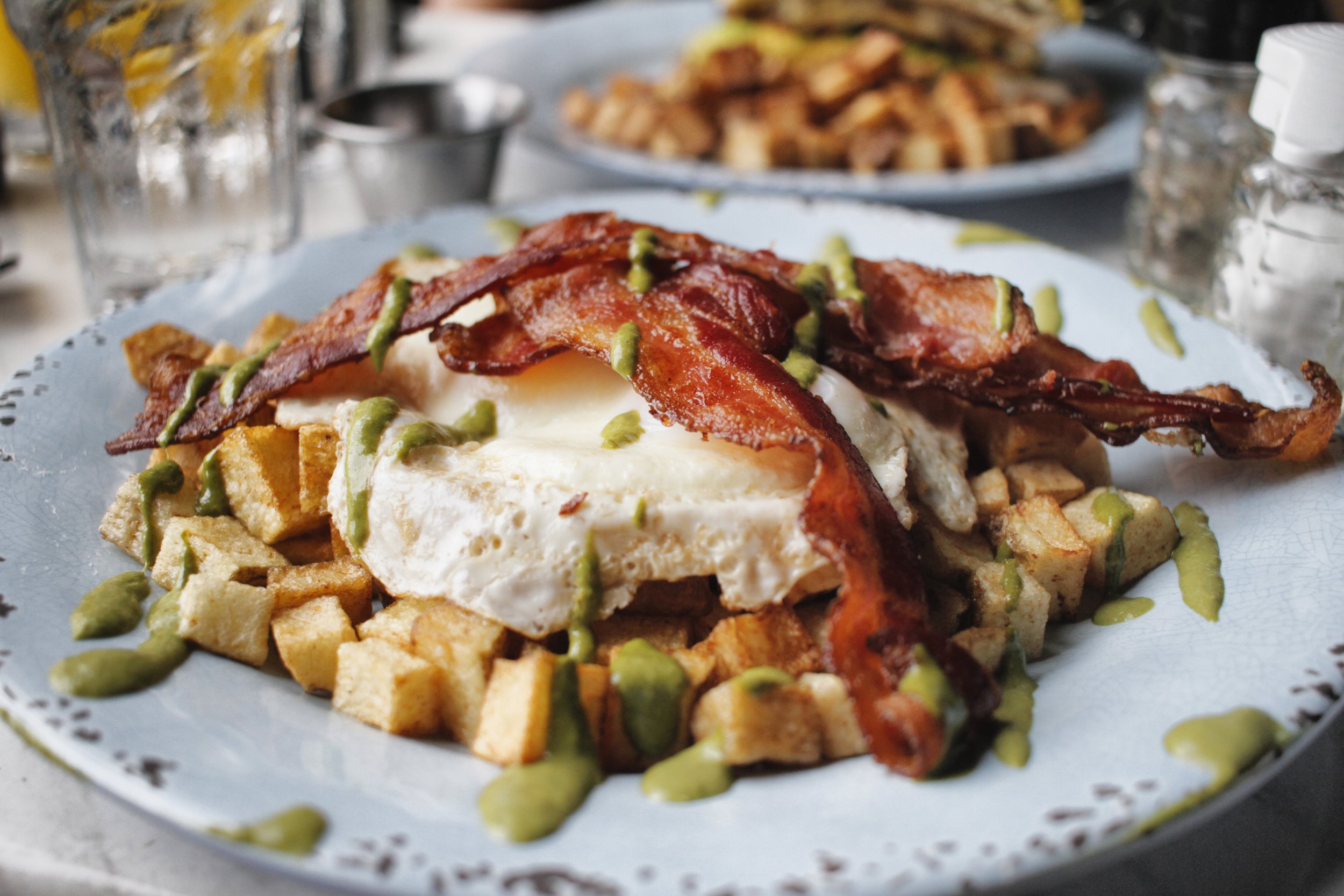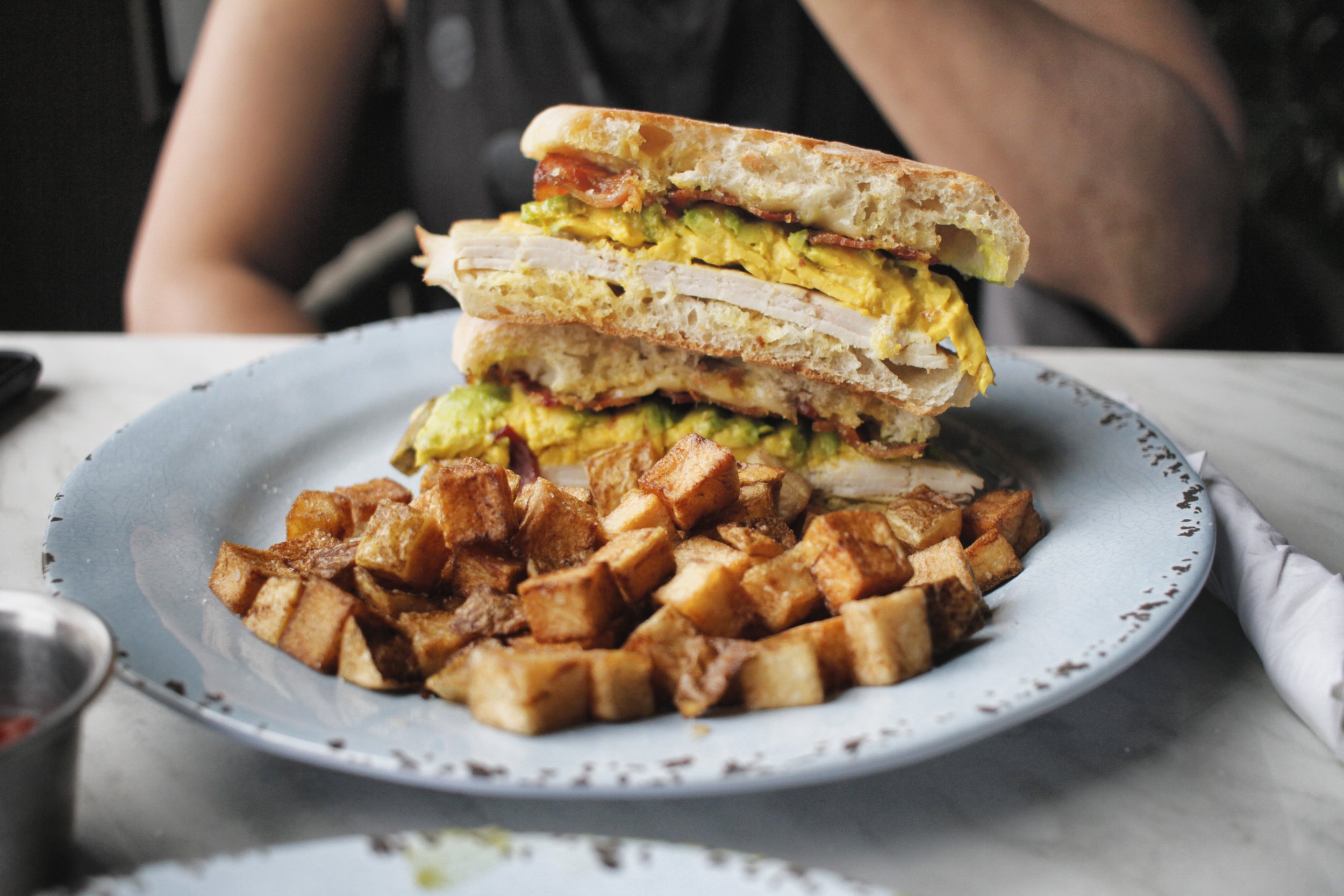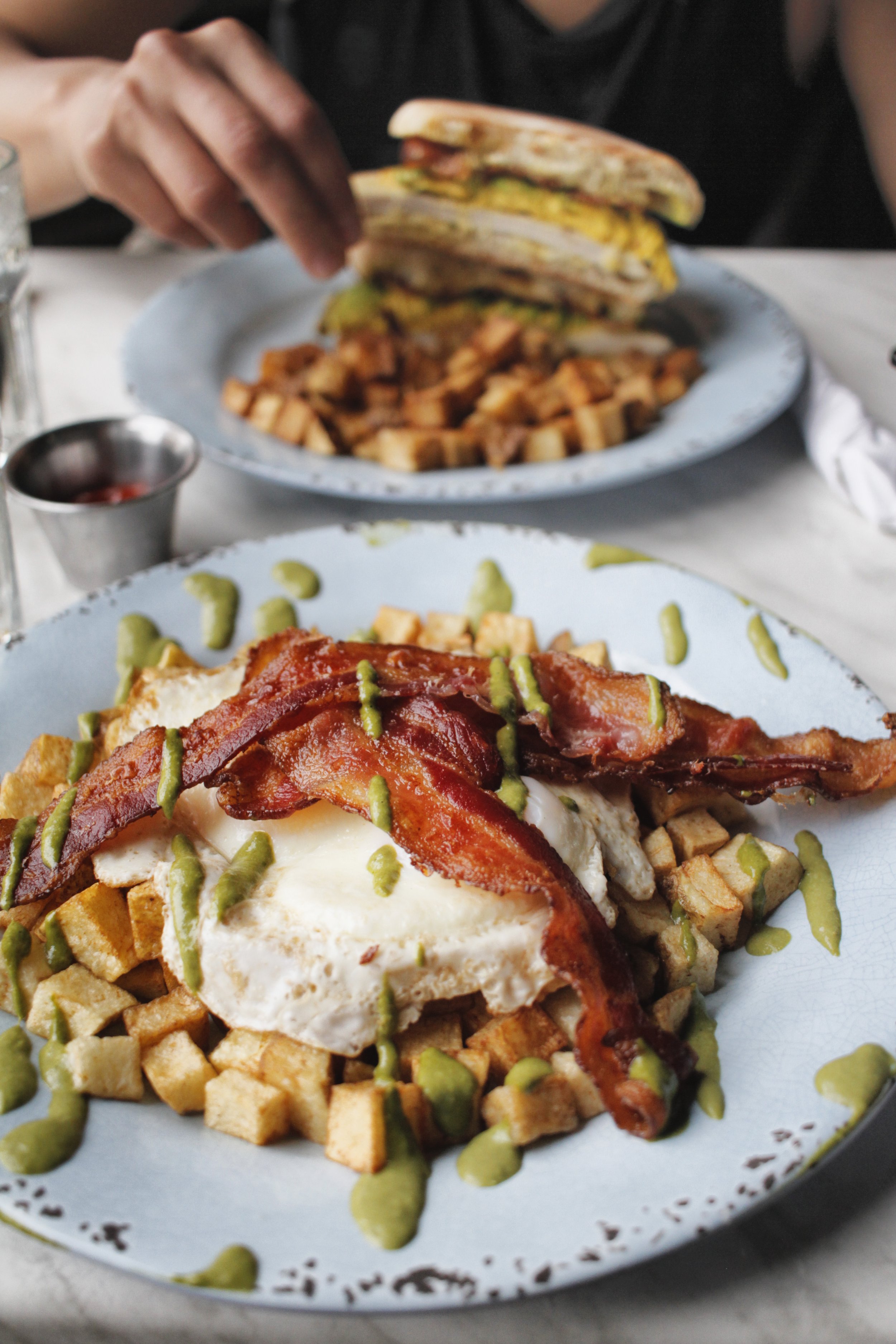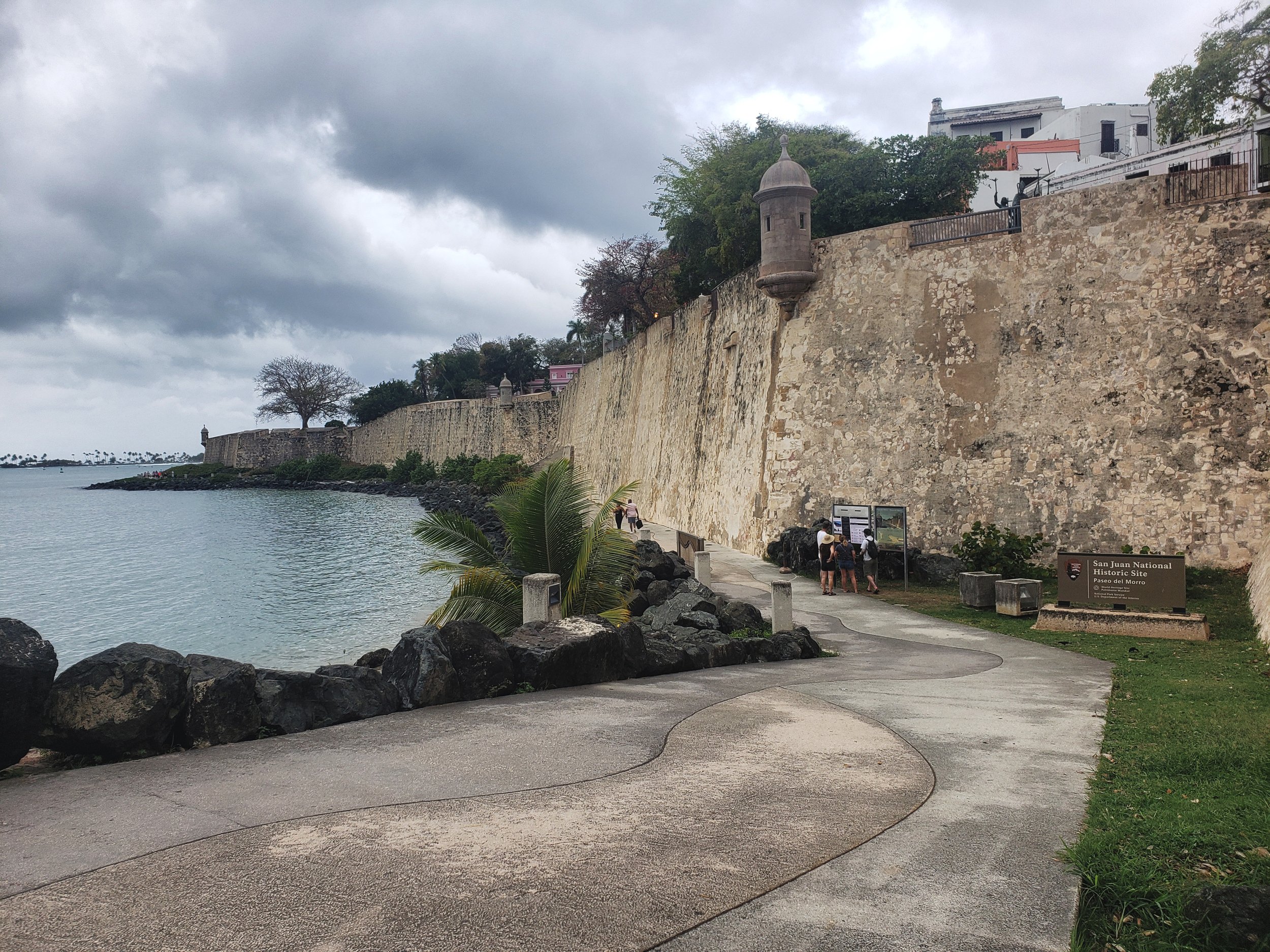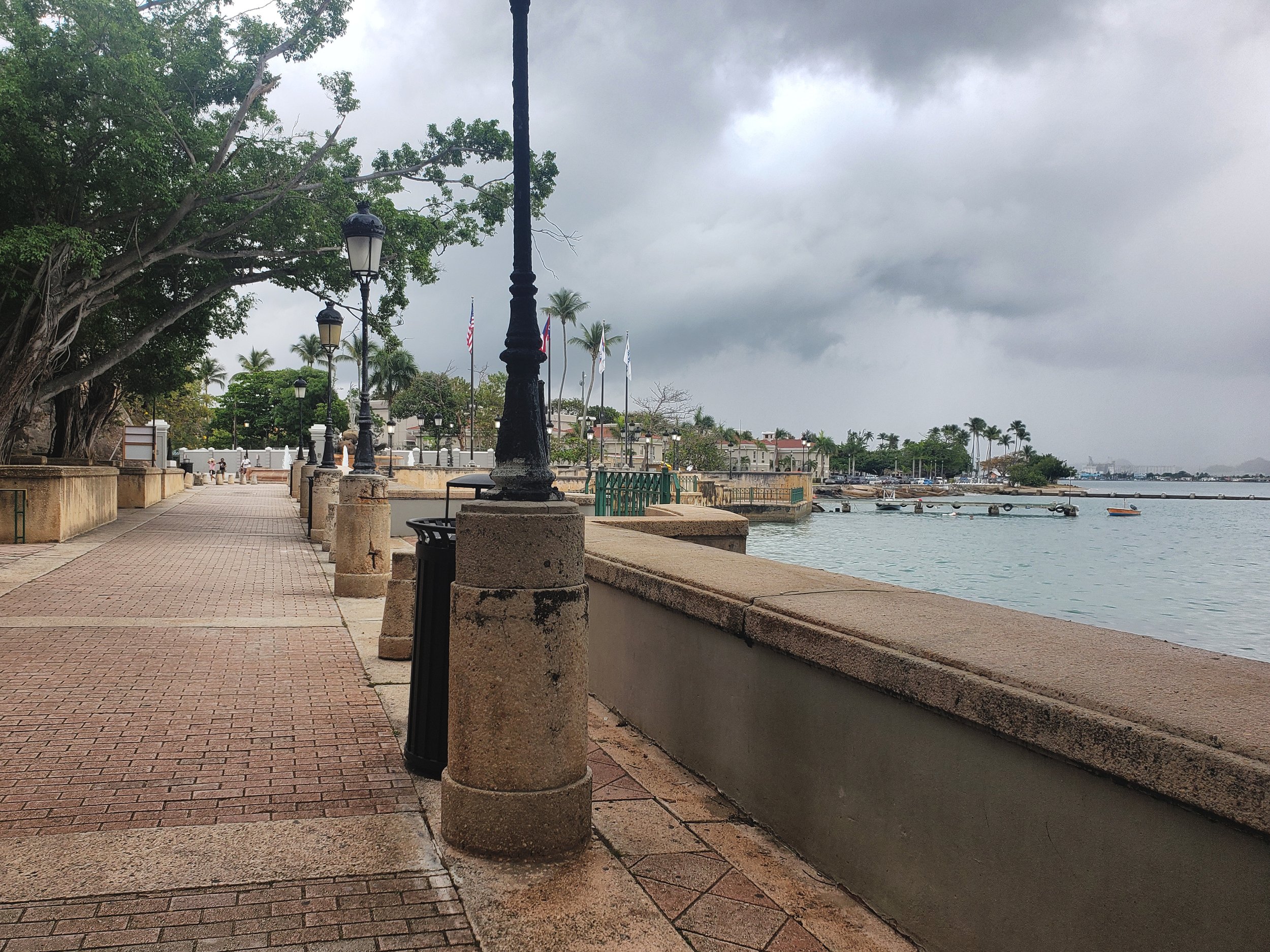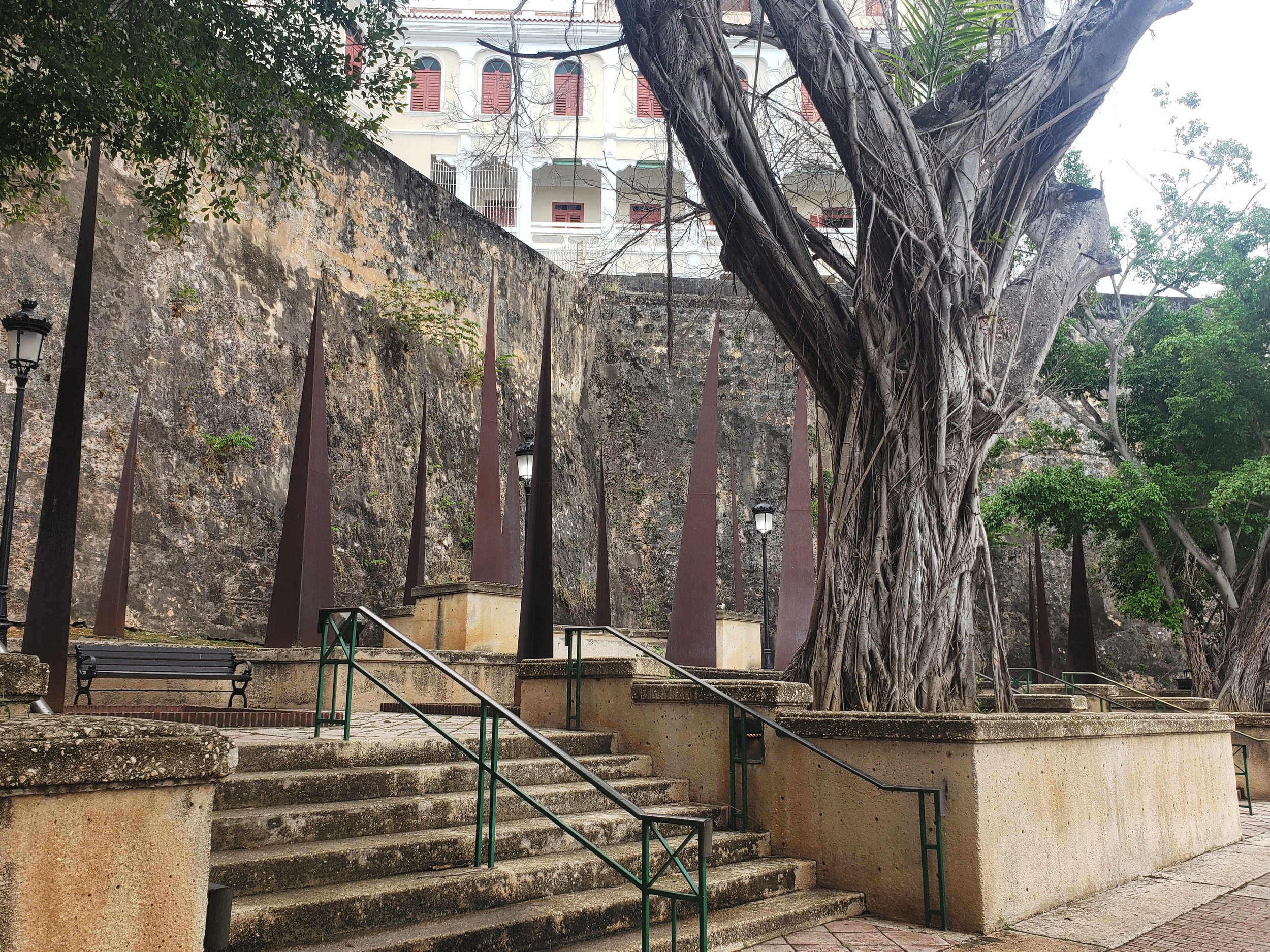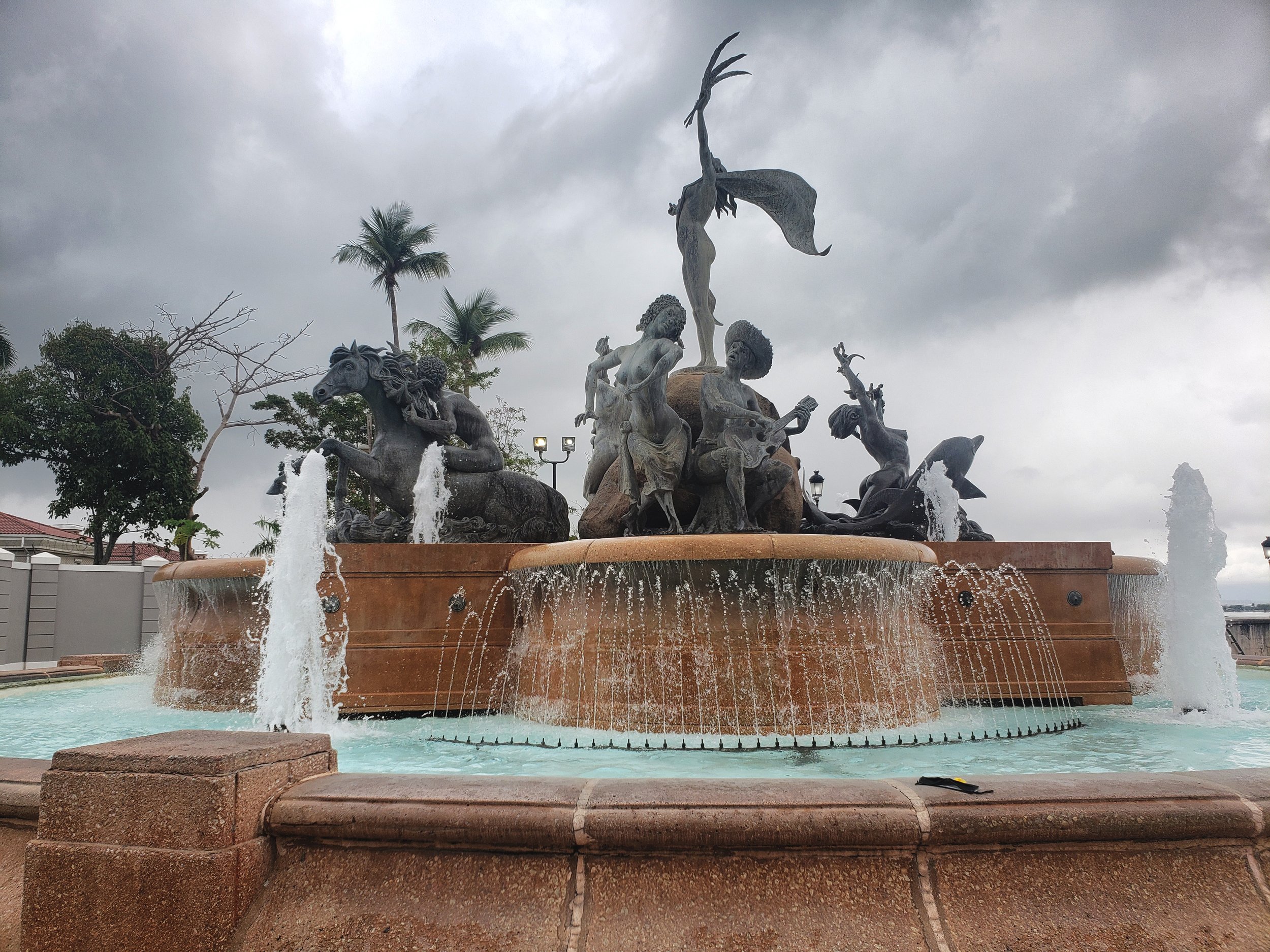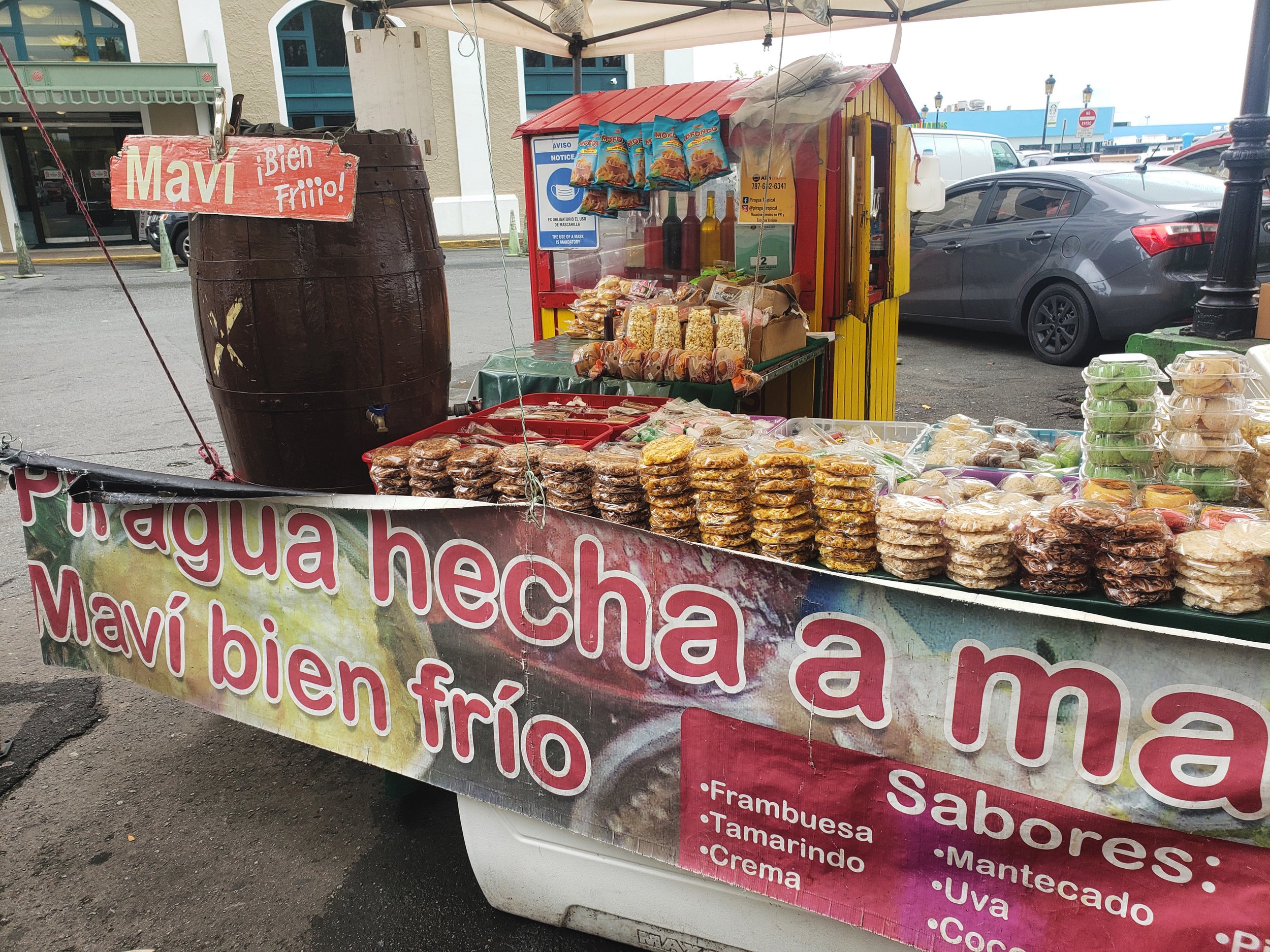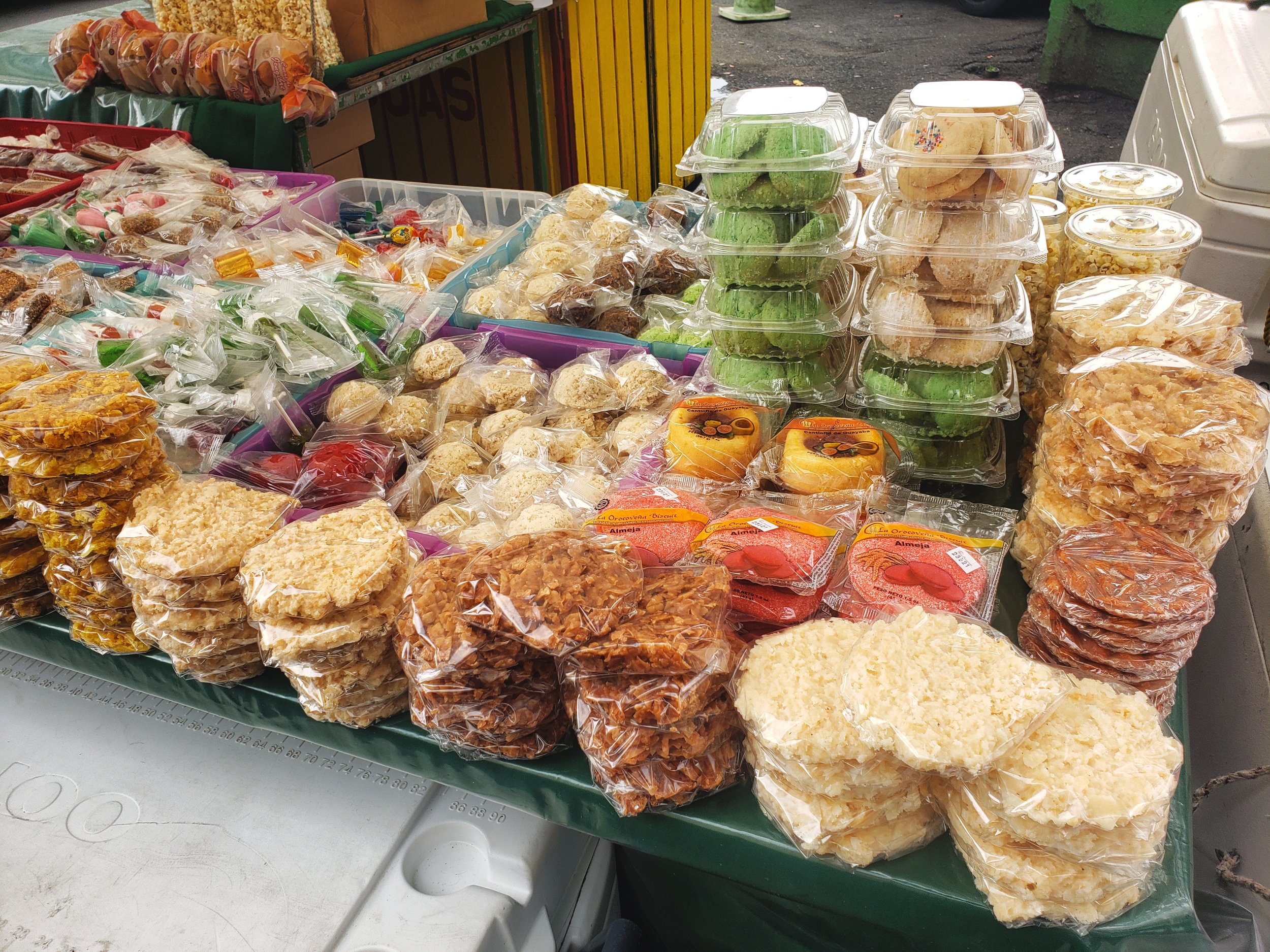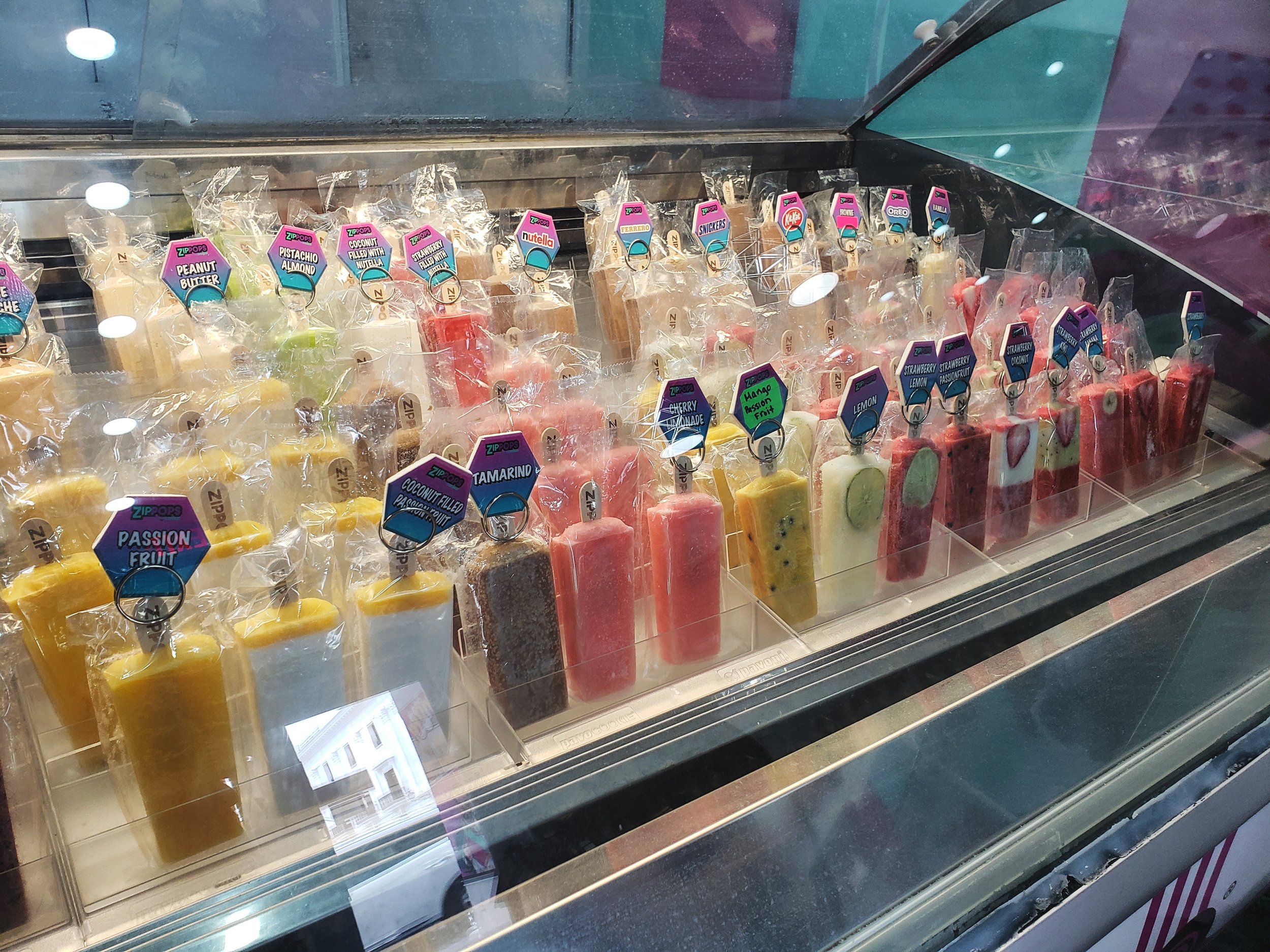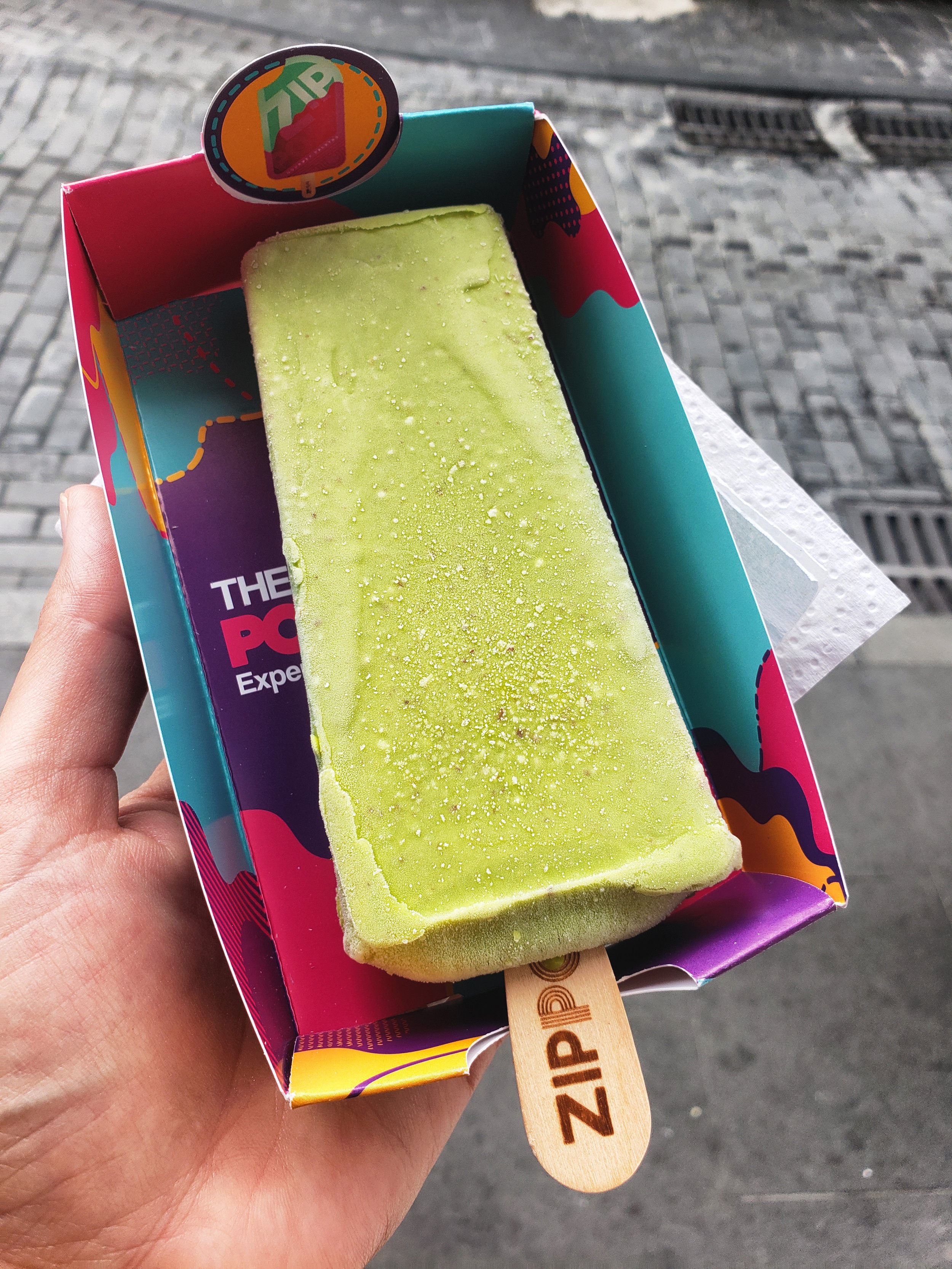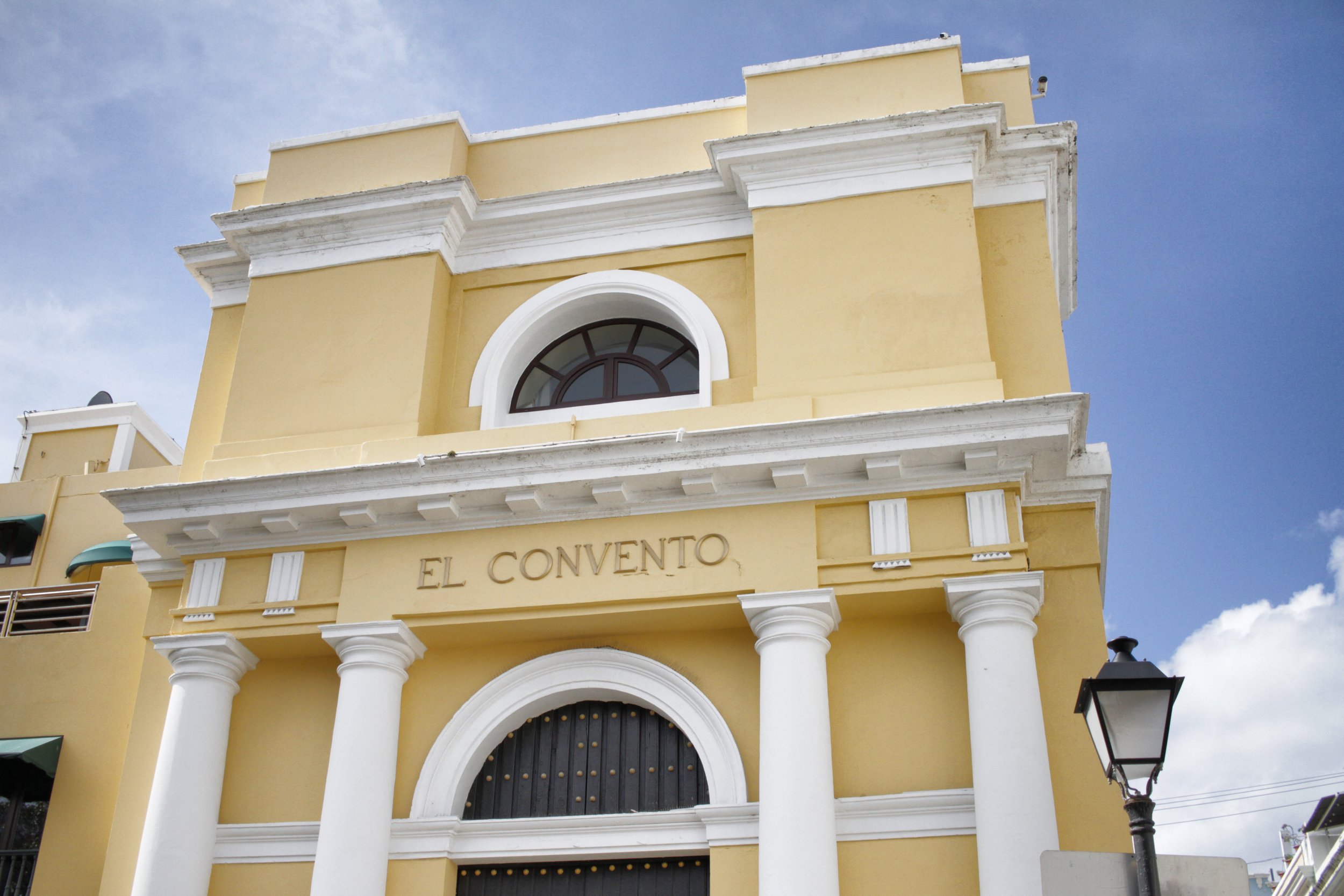Old San Juan, Puerto Rico
Viejo San Juan
Though known as the dining capital of the Caribbean, Puerto Rico offers so much more than delicious food and drink. It’s also a place full of warm people, gorgeous weather, enchanting music and a wonderful blend of history and culture. Puerto Rico is an archipelago with shores on both the Atlantic Ocean and Caribbean Sea. It consists of a main island surrounded by smaller islands, the largest of which are Vieques and Culebra. The landscape is diverse, covered with endless beaches, forested mountains, beautiful waterfalls and tropical rainforests. Historically, Puerto Rico became a territory of the United States in 1898 after centuries of Spanish rule and has been mostly self-governing since the mid 20th century. It has a vibrant culture shaped by the Spanish, United States and Afro-Caribbean influences and is home to 3.4 million people. Also important to note, Americans don’t need a passport and can use the American dollar.
San Juan, the capital and largest city, is filled with Spanish colonial buildings and century old fortresses, San Felipe del Morro and San Cristóbal, as well as the nearly 400 year old city walls. Incredibly, the tomb of Spanish explorer, Juan Ponce de León, is housed inside Bautista Cathedral, alongside brightly colored homes lining cobblestone streets. Shady plazas, hip cocktail bars and delicious Caribbean fusion restaurants are the norm.
Our holiday to Puerto Rico began with a few hot and sweaty days in Viejo San Juan and then landed us on a ferry to the Untouched Beaches, Wild Horses and Bioluminescent Bay of Vieques Island. I’d only heard about this special gem from my grandparents who had served a Mormon church mission on this very island (see what it was like Growing Up Mormon).
Transportation-wise, the journey took about six and a half hours of flight time from LAX with a layover in Fort Lauderdale, to Luis Munoz Marin International Airport, with another 20 minute taxi ride to our stay at Hotel El Convento in Old San Juan.
Explore Castillo de San Cristobal & It's Old City Walls
Almost immediately, we discovered why Puerto Rico is called the dining capital of the Caribbean. Kaffe Haus Old San Juan offered generous portions and rich flavors all while listening to live jazz music. What a special way to begin our holiday and enjoy our first meal.
To start, we ordered a sweet coffee with coconut, passion fruit and whipped cream, along with a Bloody Mary. For breakfast, eggs Benedict with lobster and breadfruit cake, a dish similar to tostones, along with a Mallorca chicken sandwich topped with cheddar cheese and bacon.
Back to the breadfruit; breadfruit is a tree with large fruit that’s a staple in the South Pacific and other tropical areas. It’s very starchy and seldom eaten raw and can be roasted, baked, boiled, fried or dried and ground into flour. Overly indulgent, the meal was definitely satisfying.
One of the best sights in Old San Juan was definitely Castillo de San Cristóbal and it’s impossible to miss. This fortress was built by the Spanish to protect the city against land-based attacks and is part of San Juan National Historic Site. Its size is massive, originally covering about 27 acres of land when it was finished in 1783, being the largest fortification built by the Spanish in the Americas.
In 1897, entry into the city was secured by San Cristóbal's double gates but after close to 100 years of peace, about one third of the fortification was demolished to help relieve the flow of traffic in and out of the walled city.
Perhaps against our better judgement, we didn’t pay the $5 USD to enter the fortress and only walked along the exterior city walls and over to some of the lookout points overlooking the Atlantic Ocean and Bay of San Juan. The views were absolutely breathtaking, crisp blue skies and white puffy clouds set against the aged stone walls.
Those City Walls of San Juan stand nearly 42 feet tall and up to 45 feet wide at the base. They’re made of sandstone blocks, mortar, limestone and water. Built by slaves, beginning in 1630 and lasting 150 years, the walls were quite successful, preventing foreign invaders like the English, Dutch and Americans, as well as pirates, from entering the city for hundreds of years.
The walls ooze a rich sense of history and create an appreciation for the city’s past.
Admire Umbrella Street, Casa Estrecha (The Narrow House) & the Tomb of Ponce de León
Exploring the colorful streets of Old San Juan was one of my favorite things to do in the city. No matter which street you chose, there was always something interesting along the way. And for the most part, the homes, shops and restaurants were in perfect condition, freshly painted, other than a few that have gone into disrepair after Hurricane Maria, a near-category 5 storm that slammed Puerto Rico in 2017.
One of the most photo worthy sights we bumped into was Umbrella Street. Umbrella Street can be found in the heart of Old San Juan on Fortaleza Street, a trendy area filled with shops, restaurants and bars pumping music into the streets. Installed after the hurricane, the Umbrella Sky Project was intended to bring life, color and fun back into people’s lives. When we visited, the umbrellas weren’t actually umbrellas and the area was roped off but it seems others have had better luck in the past. Either way, it was a gorgeous installation.
Just a few minute walk from Umbrella Street on Pasio de la Princesa was a fun stop at La Casa Estrecha or The Narrow House. This extraordinary slim, two-story house measures a mere five feet, three inches across and was once a neglected alleyway before it was transformed into a home by architect, Antonio Álvarez. Views of the bay across the street from the skinny house are also gorgeous, watching cruise ships slowly pass by.
Another beautiful stop along the streets of Old San Juan was the Catedral Basílica Metropolitana de San Juan Bautista, a Roman Catholic cathedral built on the site of the second oldest church building in the Western Hemisphere. The original structure dated all the way back to 1521, being little more than a wood building with a thatched roof.
Eventually, a hurricane destroyed the building but another structure was built in 1540, and that cathedral is the oldest in the United States, recently celebrating its 500th anniversary. This cathedral is not only home to ancient pieces like a Gothic stone edifice that’s nearly 500 years old but it’s also home to the tomb of Ponce de León, the famous Spanish explorer and conquistador who was also Puerto Rico’s first governor. He had arrived in the Americas in 1493 as part of Christopher Columbus’s second expedition.
Enjoying the perfect weather that evening, we ventured to a cute little spot called Deaverdura on Calle Sol. They claim to offer traditional Caribbean flavors and "local home cooking with fresh produce and lots of love" and we sure agreed.
With cafeteria vibes and tons of locals, we were excited to taste what Deaverdura had to offer. For drinks, we ordered a local beer called Medalla and a tequila cocktail with fresh fruit juice.
As main dishes, we selected rice and beans two ways, plantains, shrimp and steak (bistek). Unfortunately, the meat tasted a bit soapy but everything else was very yummy. To round out our meal, we tried both the pumpkin and ginger flan; both tasted incredible.
Later in the evening, we walked along the castle wall back to the hotel, stopping to rest on the grass overlooking the black ocean and sparkly night sky. It was so peaceful and dare I say, magical.
Breakfast at La Madre & Shop Old Town
Modern Mexican restaurant, La Madre, served up a delicious breakfast along with a hip atmosphere during our stay. Not unlike many other spots, they seemed to be short staffed and moving slowly but it wasn’t clear if that was due to COVID or simply, island time. And although it took some time to be seated and served, we really enjoyed this restaurant quite a bit.
First things first, with a latte, fresh watermelon juice and a tart tamarind juice. For our meals, we ordered a fruit bowl with strawberry, pineapple, blueberry, almonds, agave and yogurt, scrambled eggs with bacon, black beans, guacamole and salsa and a tortilla (omelette) with pork, onions, peppers and red sauce.
All of it was so good and definitely worth the wait. I also really enjoyed the inside of the cafe with its brightly colored walls and rounded archways.
Along the cobblestone streets, we stepped into many of the colorful shops exploring what they had to offer. There were countless art galleries, clothing stores, souvenir shops and others like Spicy Caribe, selling local goods. This spice shop was my favorite and packed full of Caribbean flavors including hot sauce, tea, spices and many others to overload my senses.
We picked up some delicious tea blends and a few spices to enjoy back home.
Unwind at Condado Beach
At Plaza Colón, in the center of Old San Juan, it’s easy to catch a taxi over to El Condado Beach for about $20 USD. A ten minute ride east into the touristy area of El Condado, this large public beach resembles that of Miami Beach with a lively atmosphere and warm tropical vibes. High rise hotels line the beach, along with a fancy upscale dining scene.
Weaving in and out of the crowds, we passed countless locals enjoying themselves. Their music was blasting, coolers overflowing and kids running around in all directions. Even though many of the hotels offered beach chairs and umbrellas we continued on and opted for a quiet spot in the sand surrounded by it all.
Much needed, I grabbed one of the vendors passing by selling ice cream and picked up a few coconut and passion fruit scoops for $5 USD. He even offered to top it with alcohol but I declined. What a delicious treat to help cool off.
After some time relaxing on the beach we packed up our things and went in search of something to eat at one of the largest restaurants along the beach, Caña, a restaurant by Juliana Gonzalez at the Fairmont El San Juan Hotel.
We were sat at a beautiful table outside on the patio behind the pool and began with a few cocktails, one whiskey and the other rum.
Due to the Easter holiday, Caña was offering a set menu for the day which included ten or so dishes for $55 USD each. Slowly, one by one, our server began bringing out each dish and although many were unfamiliar it was a great way to try such a variety.
There were meat-based dishes, as well as many that were vegetarian. Some included chicken, while others, pork, seafood or ham. We had rice, versions of cold salads, fried appetizers and dessert.
All in all, the meal was interesting but not my favorite. Many of the flavors we experienced in some of the smaller restaurants were much better for a fraction of the price.
Get Wet at Yunque National Forest
Because of COVID we had some trouble finding tours operating for El Yunque National Forest but were finally able to secure a booking through Viator Tours for $120 USD each. The tour included transport, entrance into the forest, a local guide, fruit and a stop at Liquillo Beach for lunch (food not included).
Early in the morning, we packed a light travel bag of towel, snacks, swimwear and a camera and walked into town for a quick bite at Café Manolín. Outside, this lavender colored restaurant is tough to miss but inside it’s got a homey cafeteria style atmosphere with seats winding around a single countertop. It’s been serving up Creole-style cuisine for 70 years and was noticeably a locals hangout. Without time to spare we ordered a western omelette, Cuban sandwich and tiny coffee called a cortadito. The coffee was delicious but so strong that I spent the next few hours hopped up on caffeine.
As the city began to wake, we met Carlos, our tour guide, at Plaza Colón and drove an hour and a half to El Yunque Forest. Along the way, we stopped at a fruit stand to pick up some bananas and met up with another couple driving separately.
Finally, we arrived at the forest, passing a manned entrance, driving up and into the park but almost feeling like it was more of a back entrance. Carlos parked the vehicle and began to lead is into the forest along a muddy path. After only 10-15 minutes we saw a small waterfall and then a river. We were instructed to climb up the rocks alongside the water to a higher waterfall. The climb was quite slippery and a bit tough but only lasted 20 minutes or so. Once we arrived, there were a handful of tourists but not too many to be bothersome. People were spread out, enjoying snacks, swimming and rope swinging into the pools of water.
Our first test was to slide down the a waterfall; it was super steep with a drop at the end. Carlos told us to lay flat and hug yourself. Once you make your splash, wait on the right side while everyone else slides down and then swim under the waterfall to climb back up. Wow, it was incredible. The two went back up for another round.
Then we went down to the lower slide where there were more tourists. This one was longer and less steep but more bumpy. Because of the bumps, which were a bit painful, we only tried this one once. The last and scariest option was to jump off a mini cliff about 15 feet high or swing on a rope and release into the pool. Our choice was to do the jump off the little cliff. Initially it was super scary but after the fact, not too bad.
After the rush of adrenaline, we relaxed by eating mango and papaya, resting on the rocks near the edge of the water. Overall, it was such a nice experience but I wish we had hiked deeper into the forest. These tropical rainforests offer walkways winding through the surrounding treetops, trails to La Mina waterfall and Mount Britton, and up to the high-altitude dwarf forest. In the south are ancient petroglyphs, made by the area’s indigenous Taíno people, not to mention the remarkable wildlife like tree frogs and birds.
Looking back, I think we missed out on much of what El Yunque had to offer so I’d recommend shopping around if tours are your thing. Another option is to rent or hire a car and drive the hour to the forest, just make sure to get tickets in advance as they often sell out due to a limited amount. Costing only $2 USD, one ticket is good for an entire car and can be reserved up to 30 days in advance at Recreation.gov.
Devour Fresh Fish at Liquillo Beach
Just a ten minute drive from the forests, lies Liquillo Beach, a popular sandy beach lined with palm trees and food stalls. Though a gorgeous beach with shallow areas for swimming we were mostly there for a bite to eat.
At the guidance of Carlos, we walked through multiple restaurants finally settling on one that looked just like all the rest. We sat down as a group and began to order everything in sight. To drink, a refreshing piña colada and Modelo. To share, we ordered fried red snapper with red beans and rice, along with mofongo with garlic and butter.
Mofongo is a traditional Puerto Rican side dish made with plantains. They’re picked green, cut into pieces and typically fried but can be boiled or roasted, then mashed with salt, garlic, broth and olive oil in a wooden pilón or mortar and pestle.
I can’t even describe how flavorful our fish was, both delicate and crispy in all the right places. We devoured every last bite. For the fish, the cost was $29 USD but absolutely worth it.
Party with Pizza & Cocktails at La O in Old Town
What’s next other than to eat and drink some more? Back within the walled city we went out for an early dinner at La Ó Pizza & Tapas, near Castillo San Cristóbal. We were sat outside in their charming courtyard among a handful of other tables and made friends pretty quickly.
La O offered a varied menu with local ingredients and fresh fish, not to mention gluten free, vegan and vegetarian options. They also had a unique selection of craft beer, cocktails and wine of which we definitely partook. Straight away we ordered fancy cocktails, a beet salad topped with corn and feta and two pizzas.
The first pizza was a traditional margarita and the other, topped with pesto, basil and prosciutto, all gluten free. Later on, we learned their pizza dough was made with yuca and cassava flour. Although quite unlike me to order pizza in a Latin country, I’m sure glad I did. It was perfect, both soft and chewy at the same time.
Our meal was one of the best on the island and the experience even better. Service was great and we celebrated some newfound friends in the courtyard with shots, all around!
Visit La Perla Neighborhood
On Calle de San Francisco, we found a gorgeous building from the 1700’s housing both a hotel and restaurant, 352 Guest House Hotel Boutique. Inside, the interior was super cute and service was even better. We ordered a dirty chai latte, peach juice and mango juice. And wow, each was better than the last.
Our meals arrived quickly and were piping hot. To eat, ranchero fried eggs with red sauce, black beans, bacon and a corn arepa with fried cheese, along with a sweet arepa with cheese and avocado. Everything was just right.
With full bellies we made our way down toward Castillo San Felipe del Morro and Santa María Magdalena de Pazzis Cemetery. Castillo San Felipe del Morro, better known as El Morro, is a citadel built between the 16th and 18th centuries. The castle is home to the oldest lighthouse on the island, built under Spanish rule in 1846. El Morro was later chosen as part of Fort Brooke and actively used as a military fortress during the First and Second World Wars.
At Plaza del Quinto Centenario, stood a 40 foot tall totem pole designed by Puerto Rican artist, Jaime Suarez, as part of the country’s 500 year anniversary celebration. Totem Telurico was made of clay from across the Americas and was meant to represent the origins of its people.
Eventually we made our way to La Perla, a historical shanty town nestled between the northern city walls facing the Atlantic Ocean on Calle Norzagaray. Established in the 18th century, La Perla stretches about 1,950 feet along the rocky Atlantic coast just east of Santa Maria Magdalena de Pazzis Cemetery.
Historically, the land of La Perla was occupied by a slaughterhouse. Those less fortunate like slaves, the homeless and non-white servants resided there, just outside the city walls. But since the 19th century when these homes began being built in this undesirable area, a lot has changed. Today, this waterfront area is prime real estate for developers but locals are prideful and hesitant to sell. The government has even tried to step in to help beautify the area but most attempts fail.
With its vibrant colors and unique vantage point overlooking the Atlantic Ocean, La Perla, was made famous by the Luis Fonsi and Daddy Yankee song, “Despacito.” The song was released mid January in 2017 but only 8 months later, Hurricane Maria, a deadly Category 5 storm devastated the northeastern Caribbean, leaving La Perla ravaged.
Today, much of the damage is still visible and many of the families have left the area or simply cannot afford to repair. The government did not help with the rebuild either. They would rather the area turn into a seaside resort and get rid of the eye sore.
Still, there’s something so charming about this area. You can help but feel the community behind its walls. I hope one day this colorful little neighborhood down by the water recovers and comes back to life.
Stroll Cliffside to Escambrón Beach
From La Perla, we continued to walk east along the cliffs for about 30 minutes to Balneario del Escambrón Beach. El Escambrón Beach is a public beach in Puerta de Tierra, next to the Luis Muñoz Rivera Park in San Juan. It’s described as a nice family friendly beach with a small crescent of clean sand and calm waters, thanks to the nearby coral reef.
Escambrón Beach was a nice treat compared to some of the other more touristy spots. It was peaceful and relaxing with only a few visitors. Plus, the shallow waters offered a great way to cool off from the excessive heat. And of course, we were lucky enough to pick up some coconut ice cream from a nearby vendor.
As if we hadn’t had our fill of seafood already we were off to try some more. A little tough to find because it lies down a shopping alley, Café El Punto offers down-to-earth traditional Puerto Rican comfort food and drinks including tons of seafood. We ordered two different fruit smoothies, one with fresh mango, banana and passion fruit and the other, guanabana. Both tasted delicious but the second was fairly mild in flavor.
To eat, we ordered fish ceviche with grouper and tostones, as well as plantain cups filled with shrimp. Both dishes were really tasty but the ceviche needed just a bit more lime.
On the way out of Café El Punto, there were a number of shops selling handmade goods like dreamcatchers, paintings or other beautiful pieces that were worth taking a look.
Satisfy Yourself at La Carreta & Wander Along the Rocky Coastline
On our last morning in Old San Juan, wandering through the streets we ended up at Mercado La Carreta. We’d passed by numerous times but it was always too busy to stop in but today was the perfect opportunity.
As luck would have it, we were sat at a cute little two person hightop right in the front window overlooking the plaza. We chose the broken eggs with seasoned fries, two eggs over easy, bacon and cilantro sauce with a delicious dirty chai and a bacon turkey avocado sandwich with orange juice.
Other than extremely slow service, the experience was quite nice and portion sizes were massive.
As a final goodbye, we took a stroll along the southwest coast of the island near Puerta de San Juan and Paseo de la Princesa. The Puerta de San Juan is a large gate that was used as the main entry into the walled city during its Spanish colonial era, circa 1635. While Paseo de la Princesa is a European-style 1853 urban promenade with shady trees, cafes and a monumental fountain named Raíces Fountain.
The views along the promenade were gorgeous and it was very quiet compared to the rest of the walled city. There were also art installations and so many interesting trees to observe.
Unveiled in May of 1992 to commemorate the 500th anniversary of the discovery of America and to inaugurate “La Princesa” promenade, Raíces Fountain represents the islands Taíno, Spanish and African heritage and is considered one of the most romantic spots on the island.
After the walk, we picked up some local sweet treats and empanadas.
And we were finally able to stop in Zippops Gourmet Paletas, an ice cream shop on Calle de la Fortaleza I’d been eyeing for days. Each time we’d passed by previously there had been a line out the door but we were finally in luck. I thoughtfully selected the pistachio almond popsicle and it was one of the best I’ve ever had.
With that, we were off to our next destination, the untouched beaches, wild horses and Bioluminescent Bay of Vieques Island. Carlos, our driver, picked us up from the hotel and began our hour and a half drive to the ferry. Ferry tickets were originally a bit tough to track down as we were told tourists couldn’t use the ferry but we were able to purchase them online for $2 USD. Arriving just in time to depart, our 30 minute ferry was off.
Untouched Beaches, Wild Horses & Bioluminescent Bay of Vieques Island
Vieques, Puerto Rico
Hotel El Convento
With its origins as a Carmelite convent more than 350 years ago and a recommendation from a Puerto Rican friend, Hotel El Convento was our natural choice. Closed by the Archbishop of San Juan in 1903 and reopened as a hotel in the 1962, the hotel does not lack in charm or history but I’m not so sure I’d call it luxury.
Perhaps due to COVID, we had quite a few issues booking events, organizing tours and eating at the hotel. The hotel staff didn’t seem super helpful and many of the amenities were simply closed. The center courtyard and woodwork throughout might have been the most beautiful features of the hotel, along with the rooftop views and small pool, though crowded at times. The rooms were nice although nothing too incredible and noisy on occasion.


